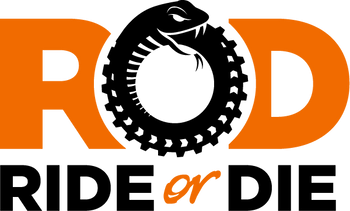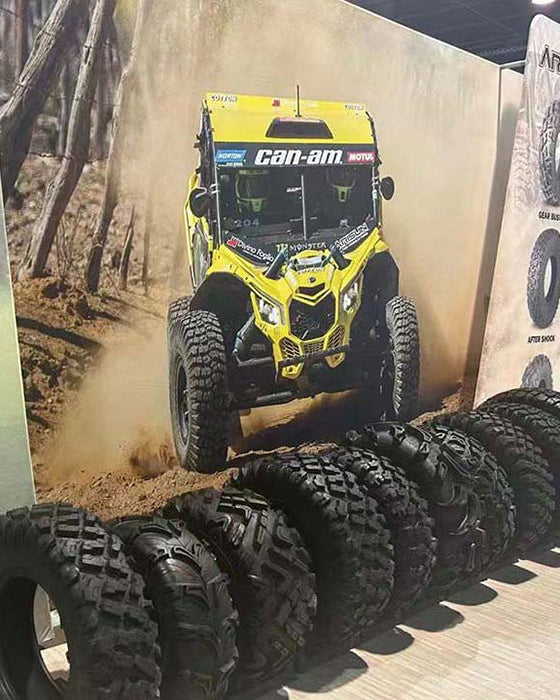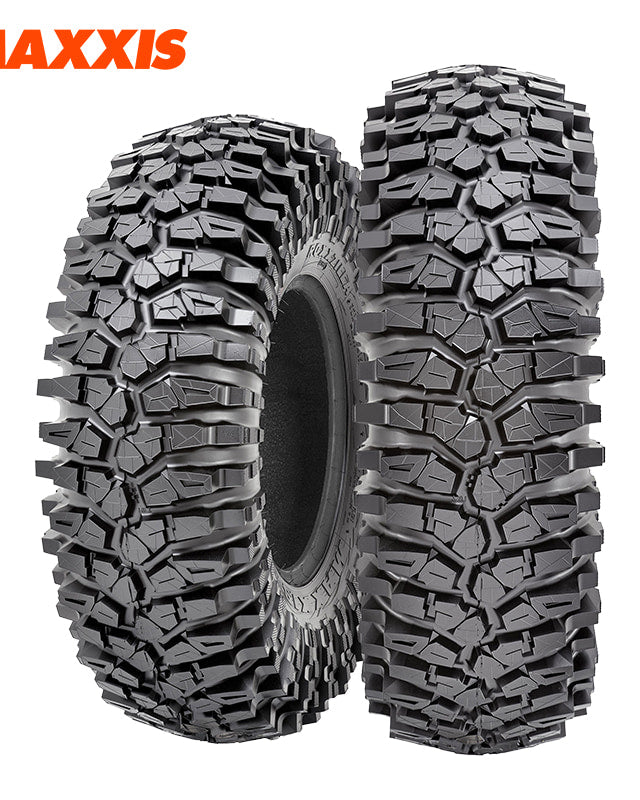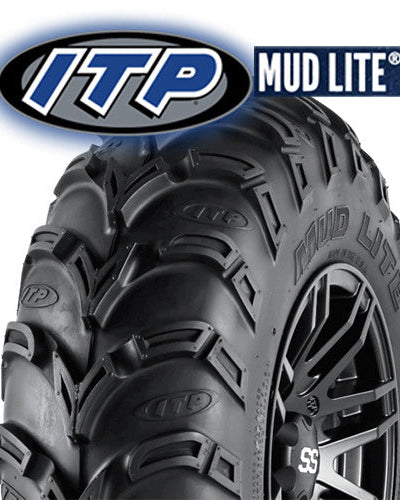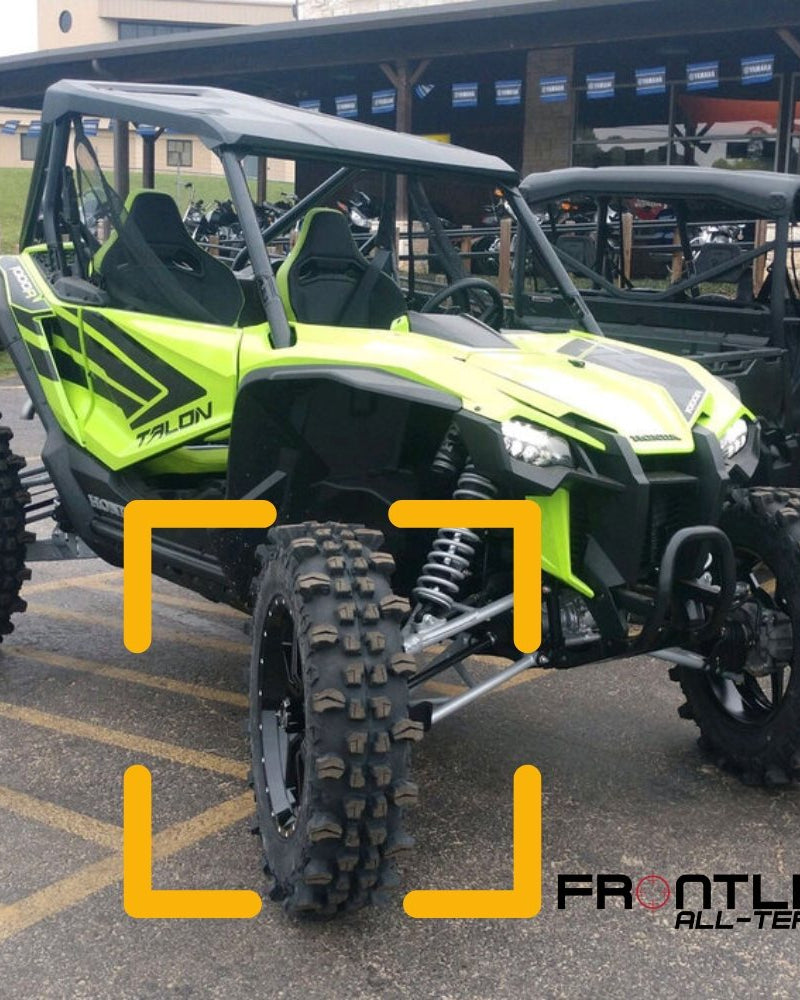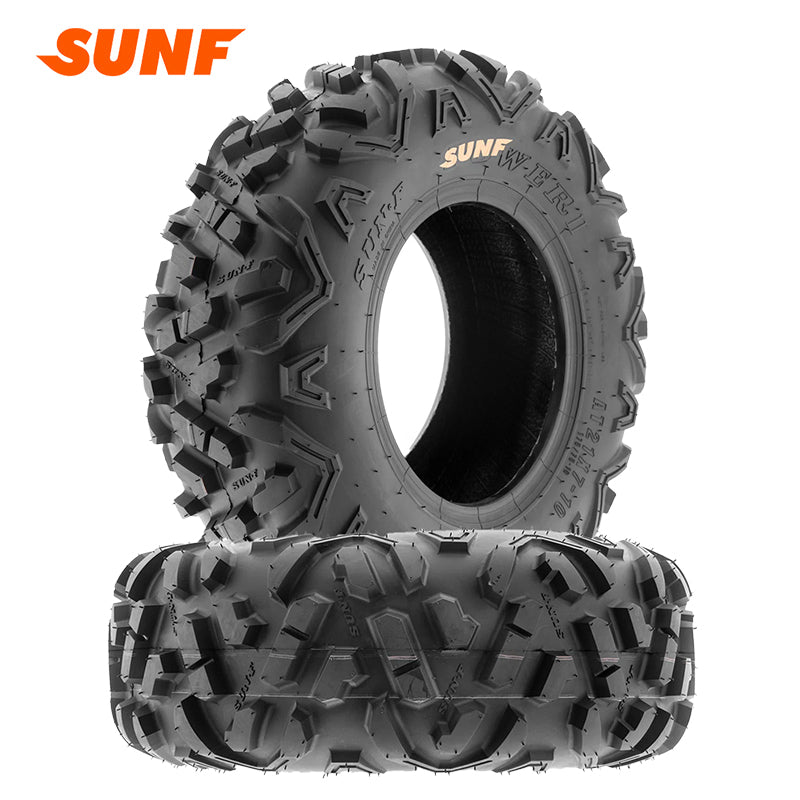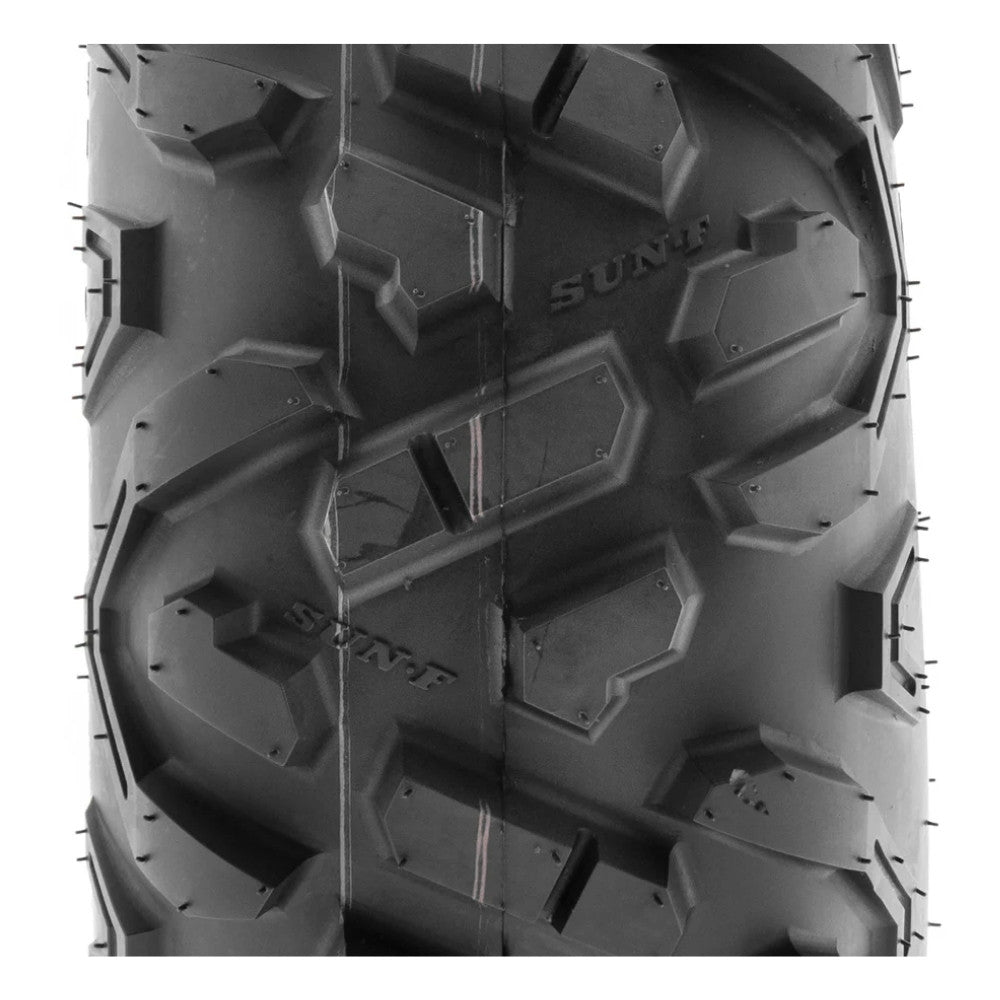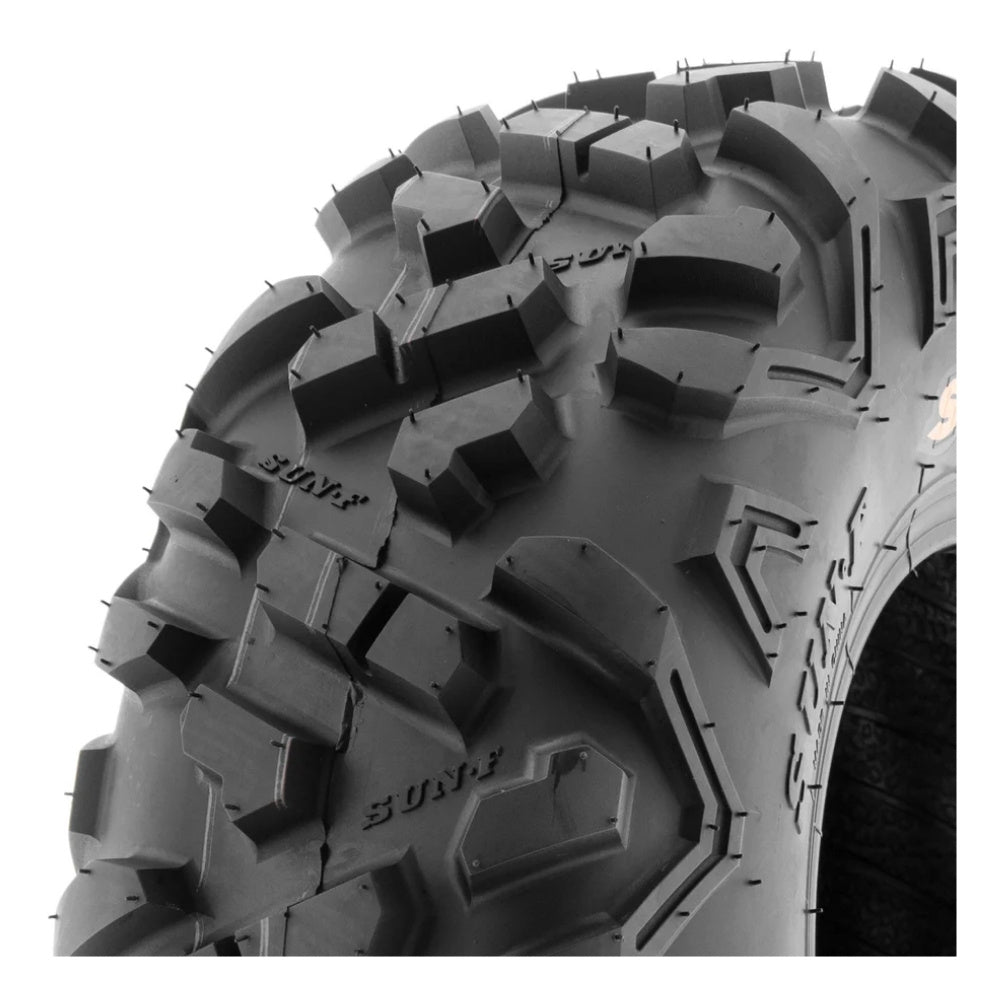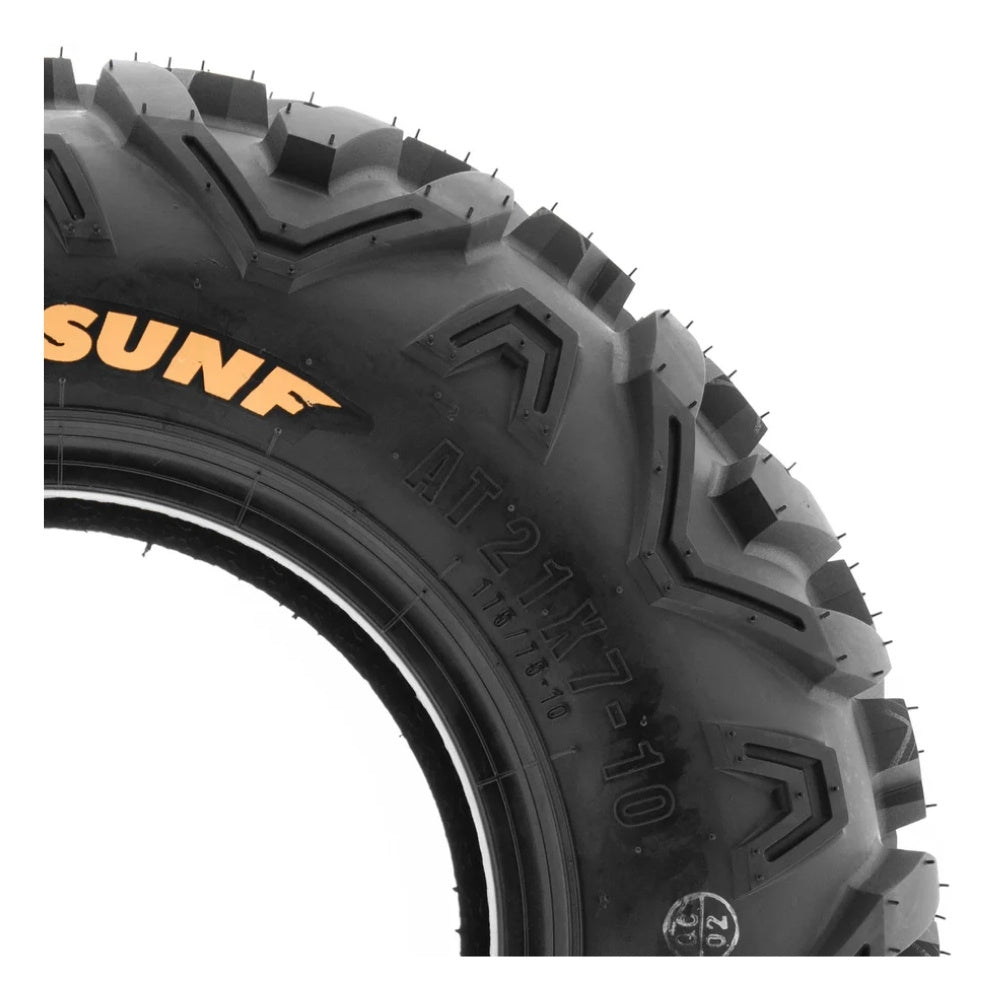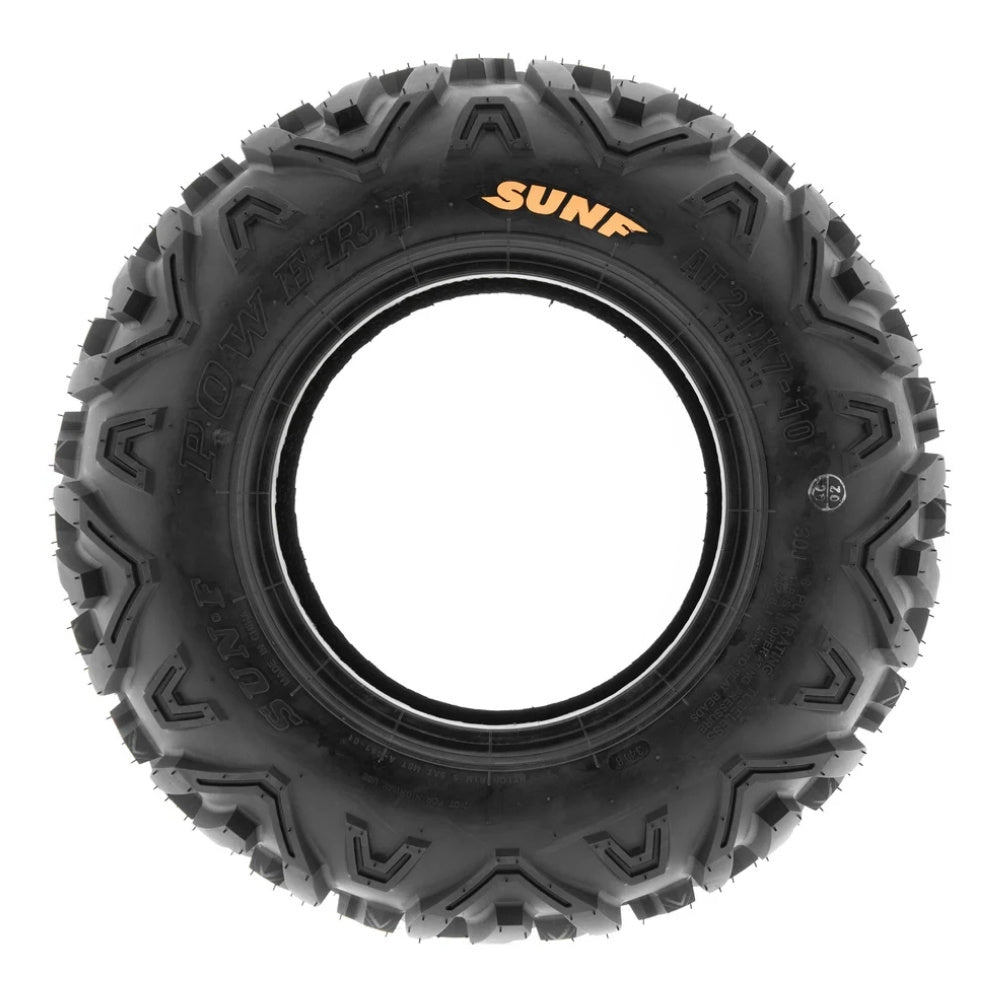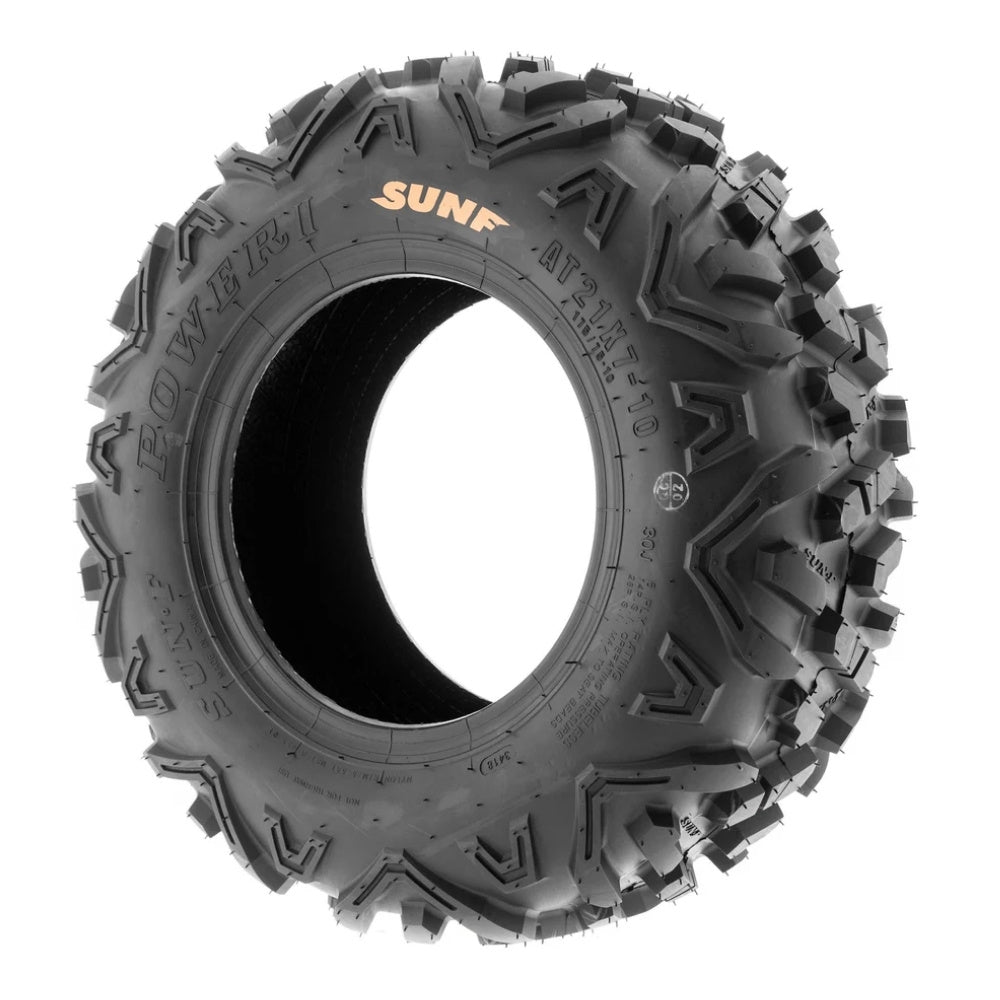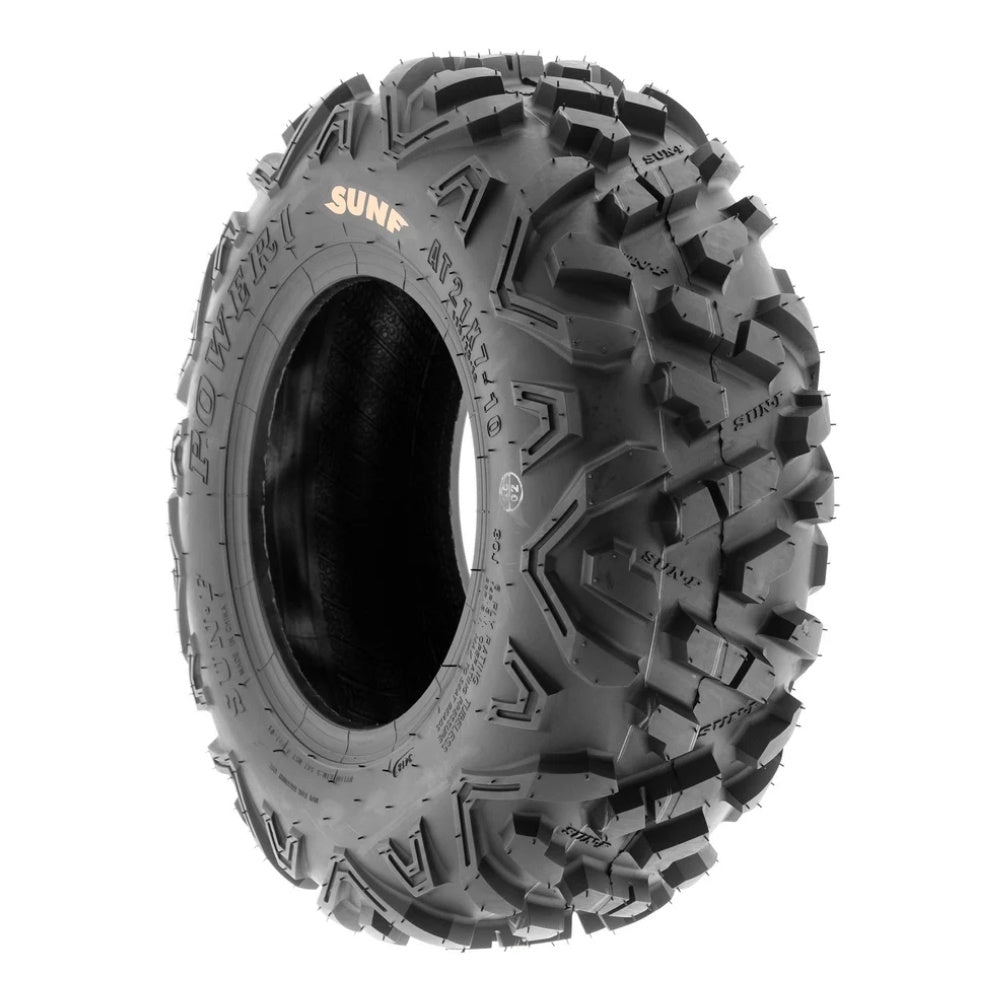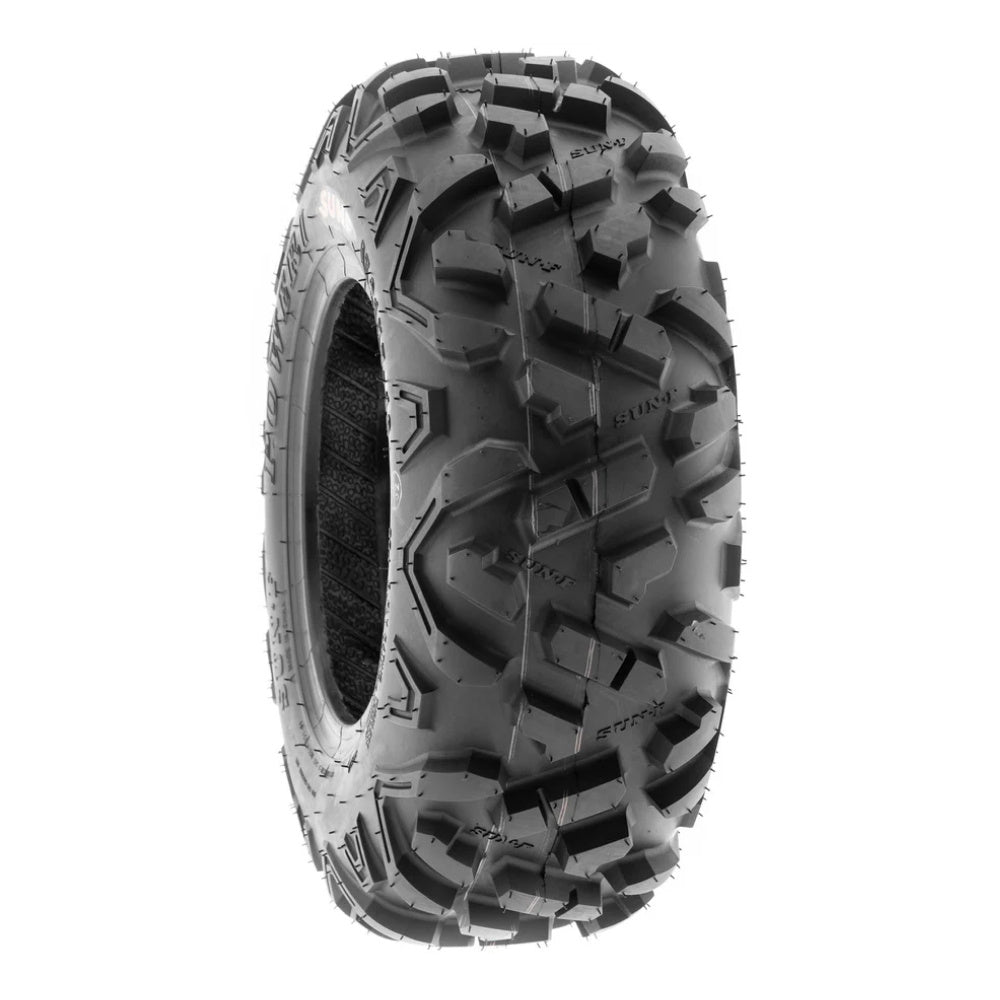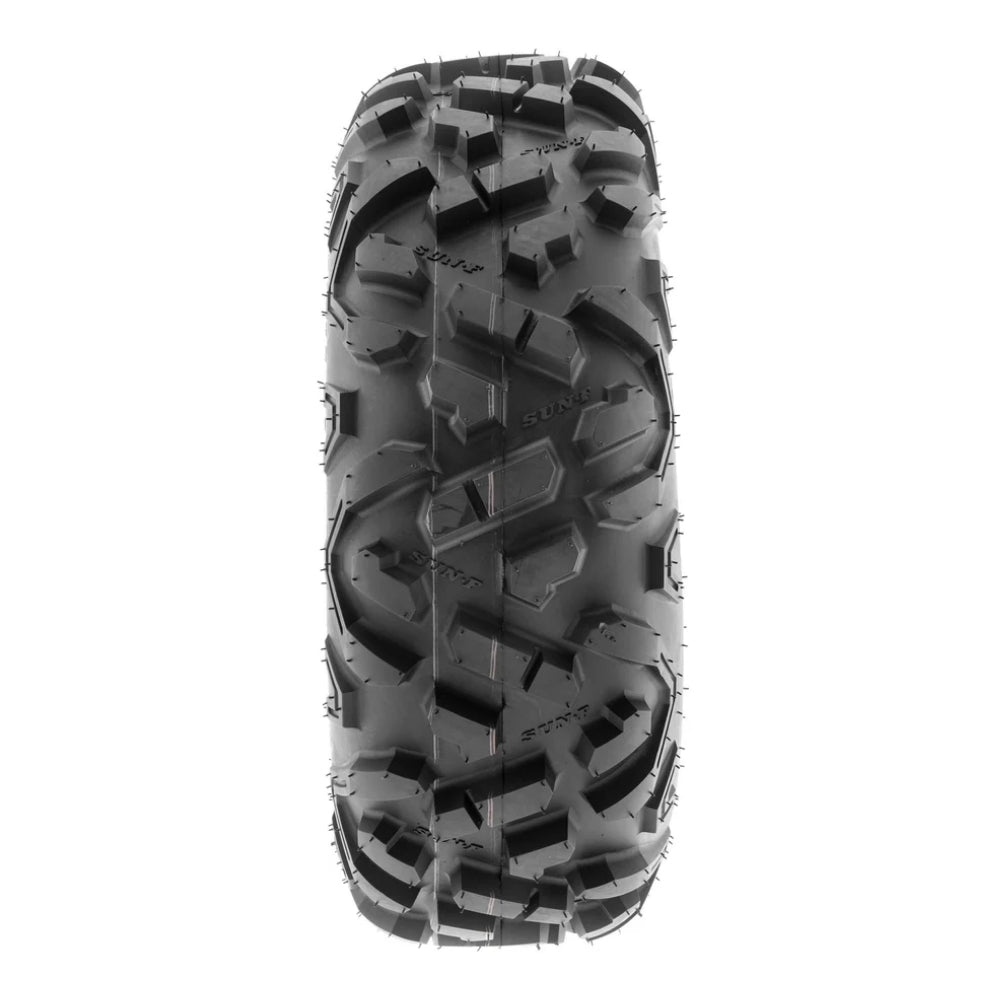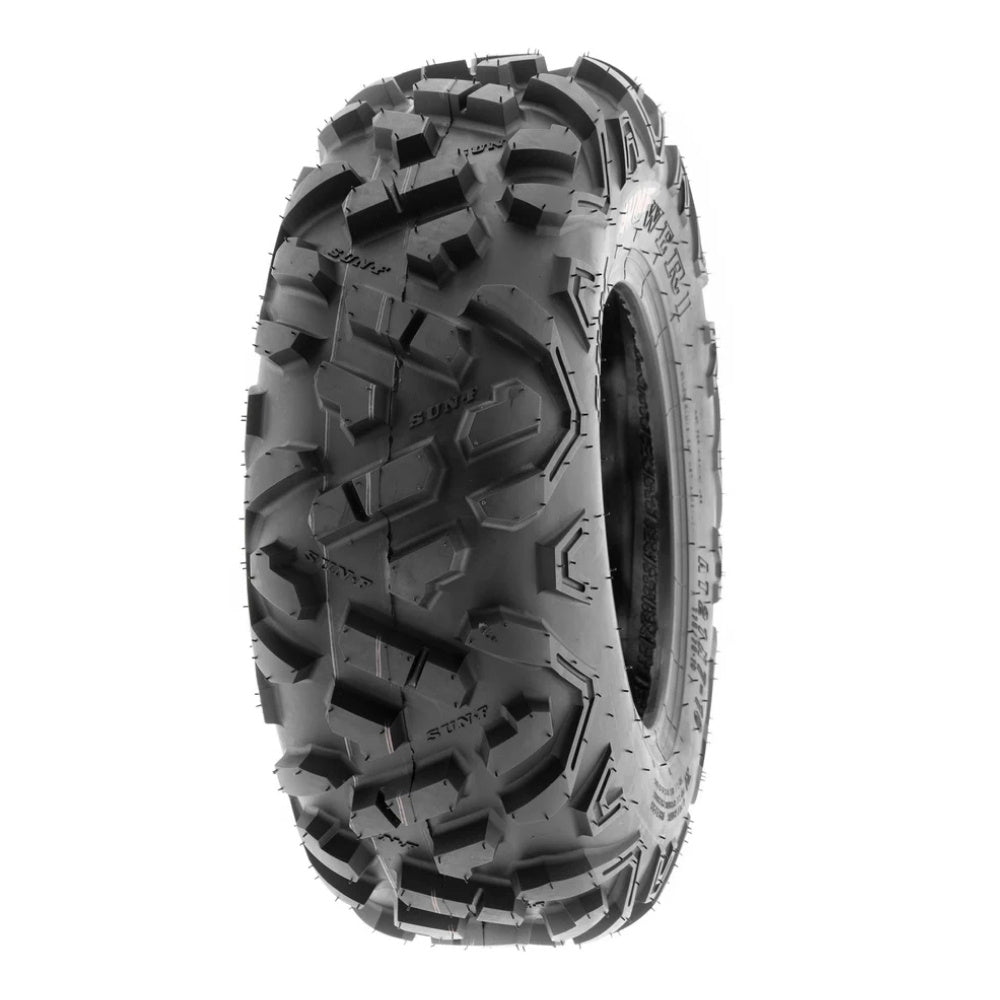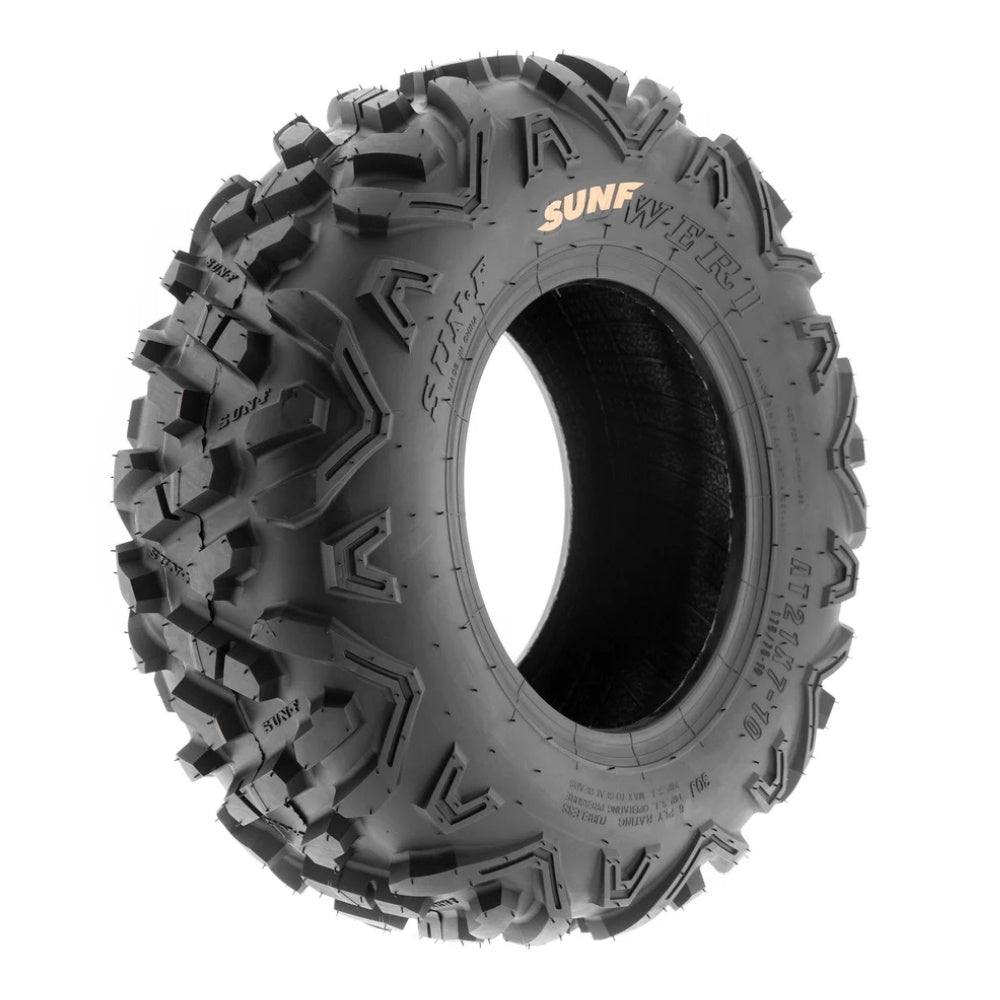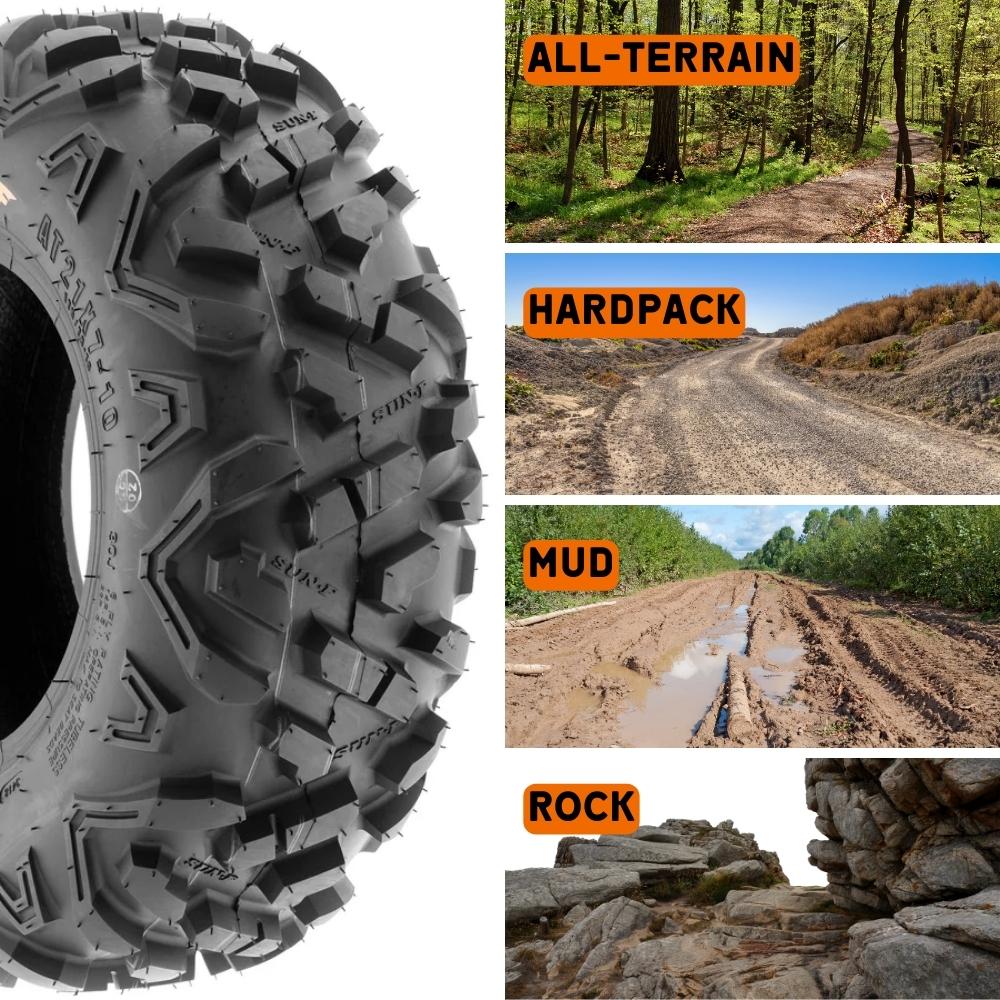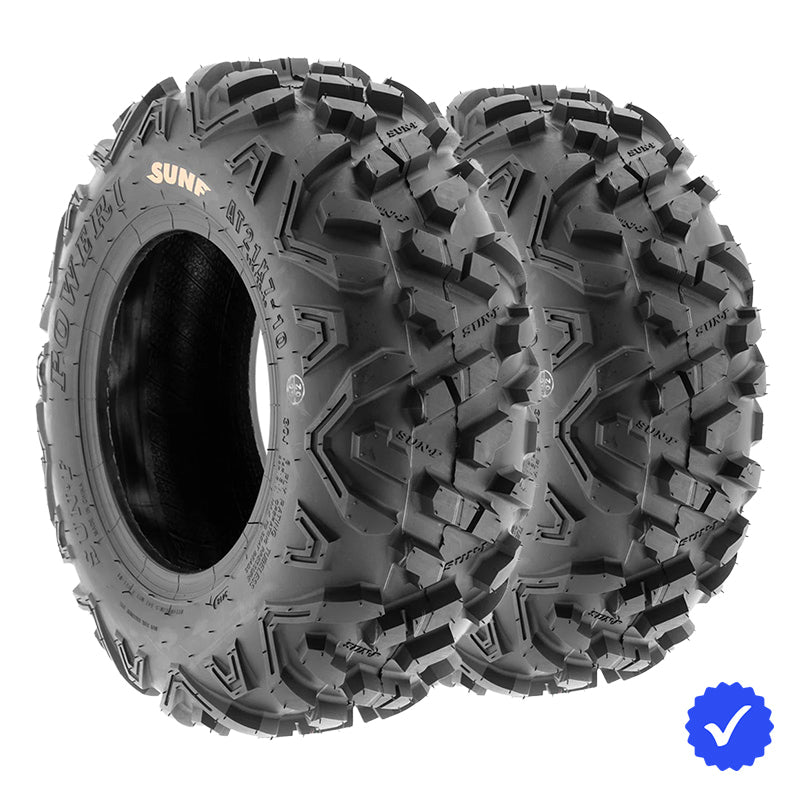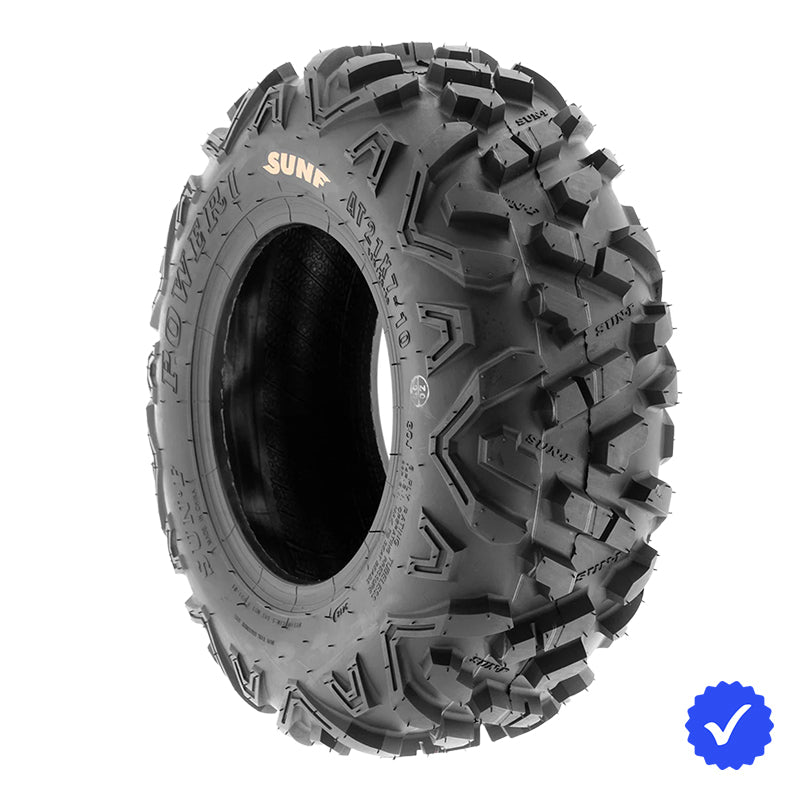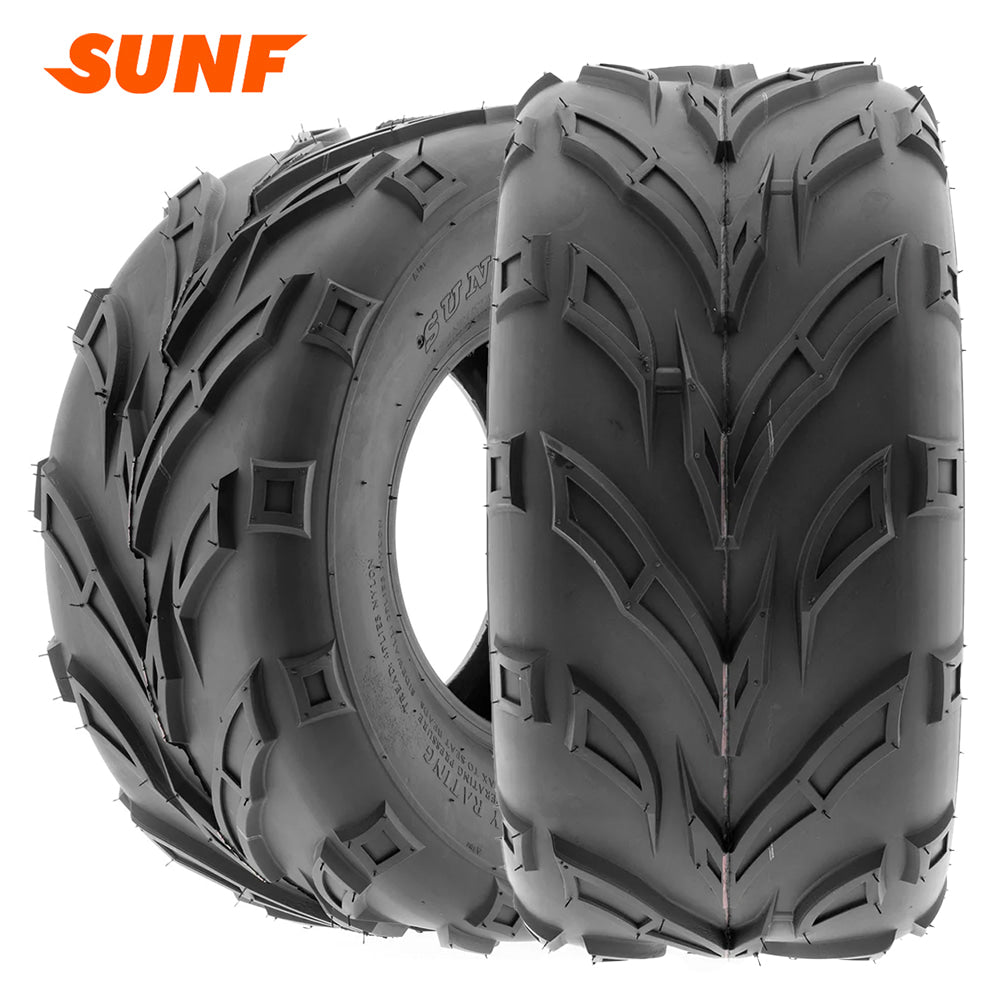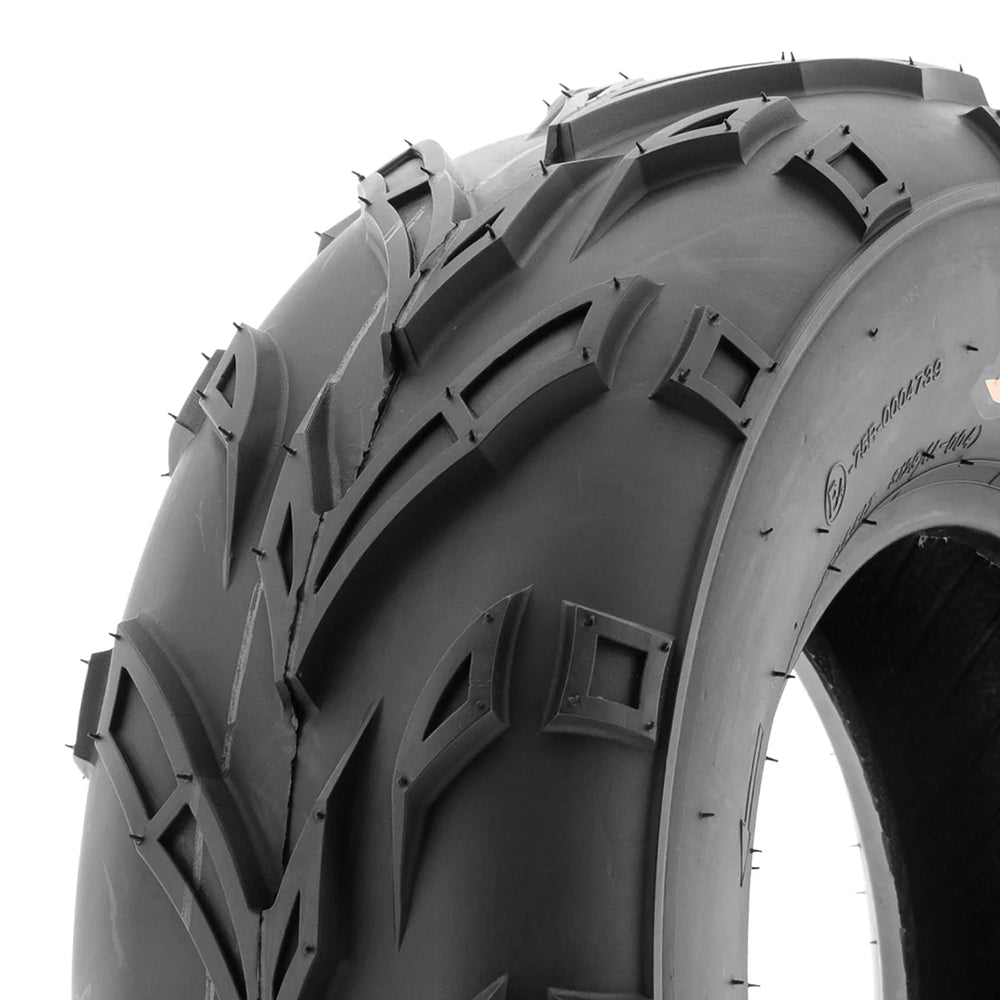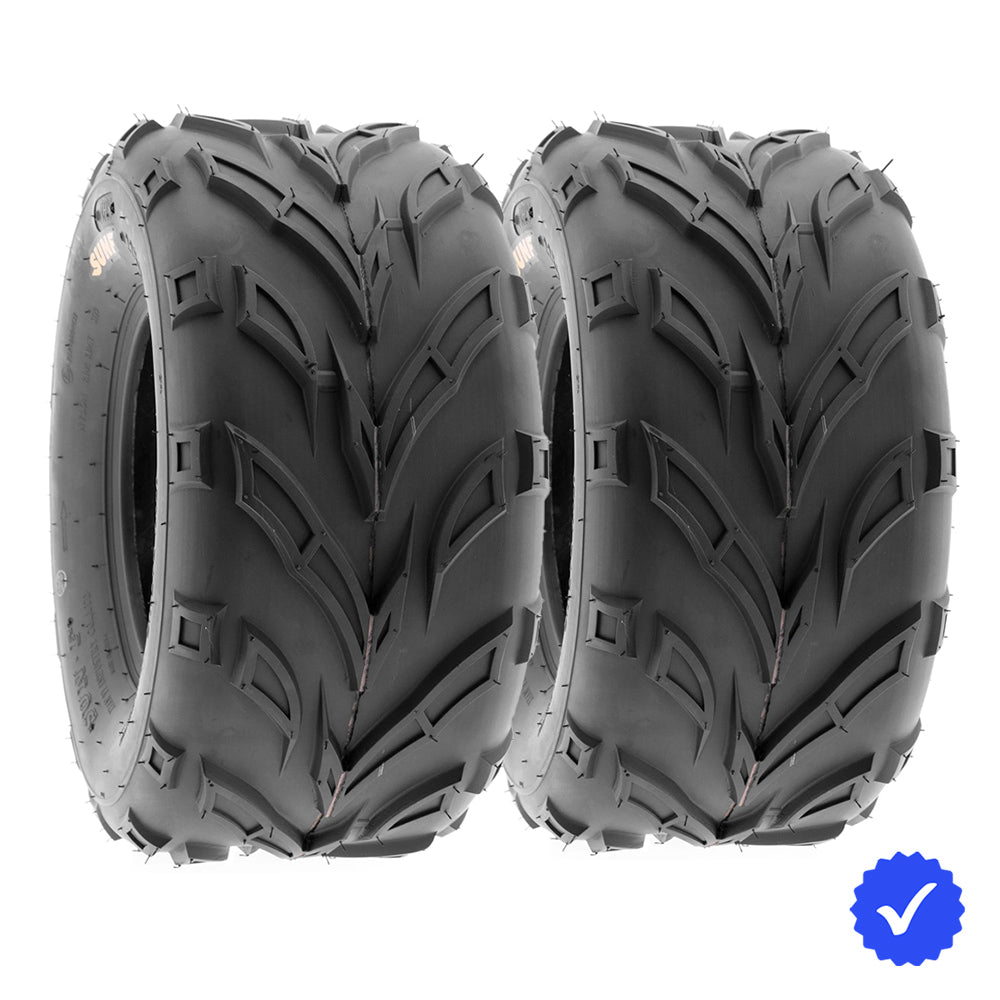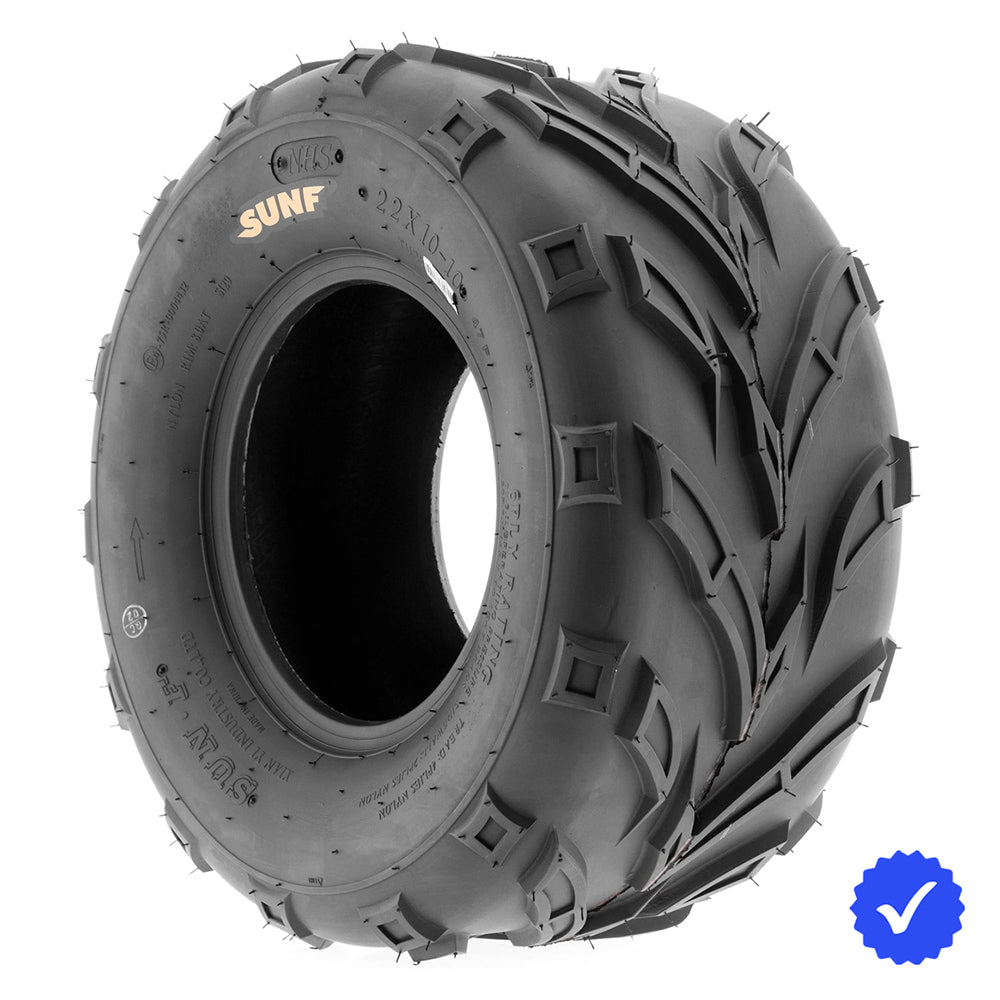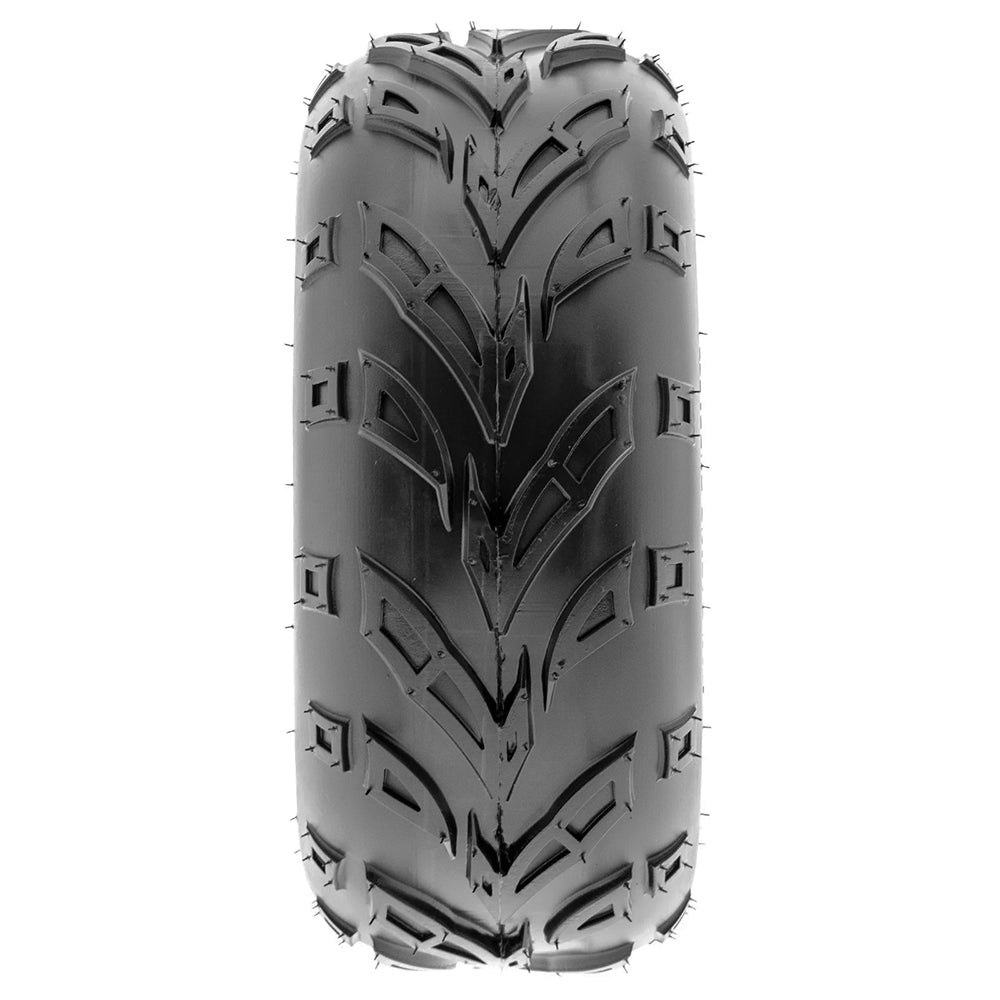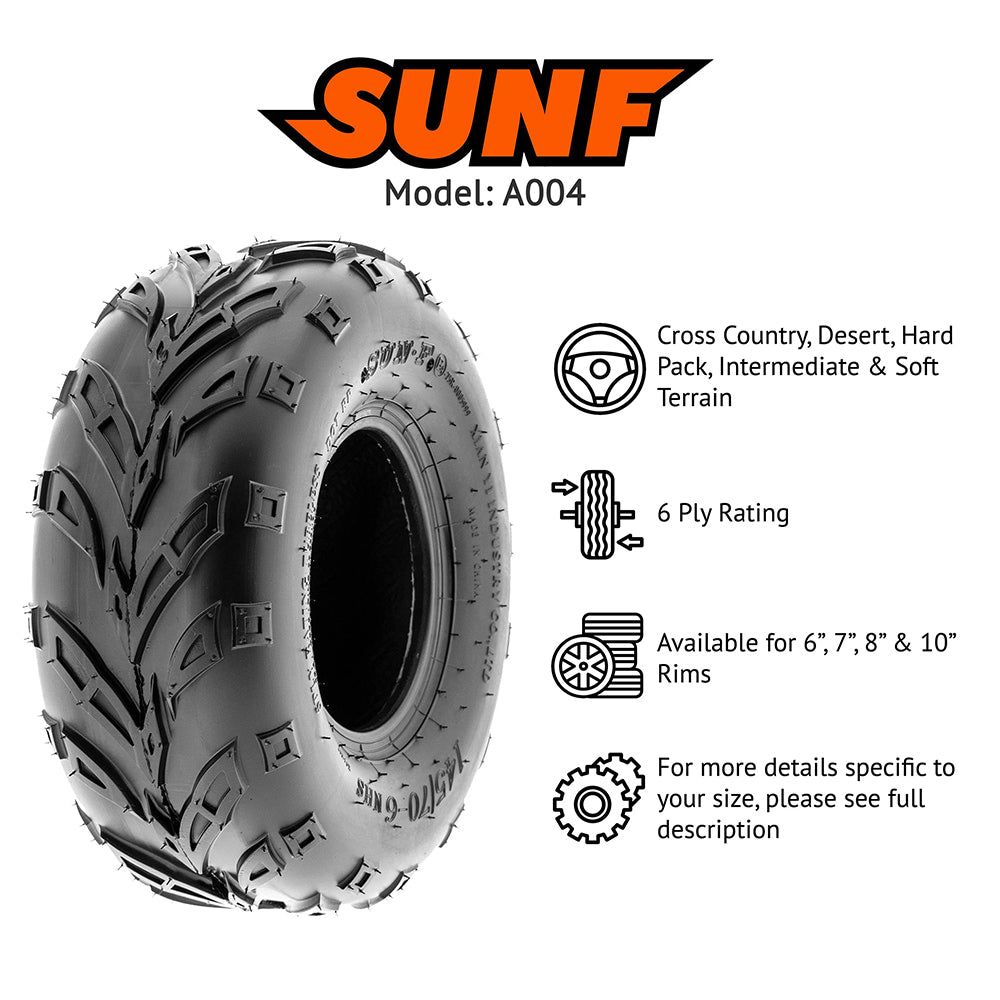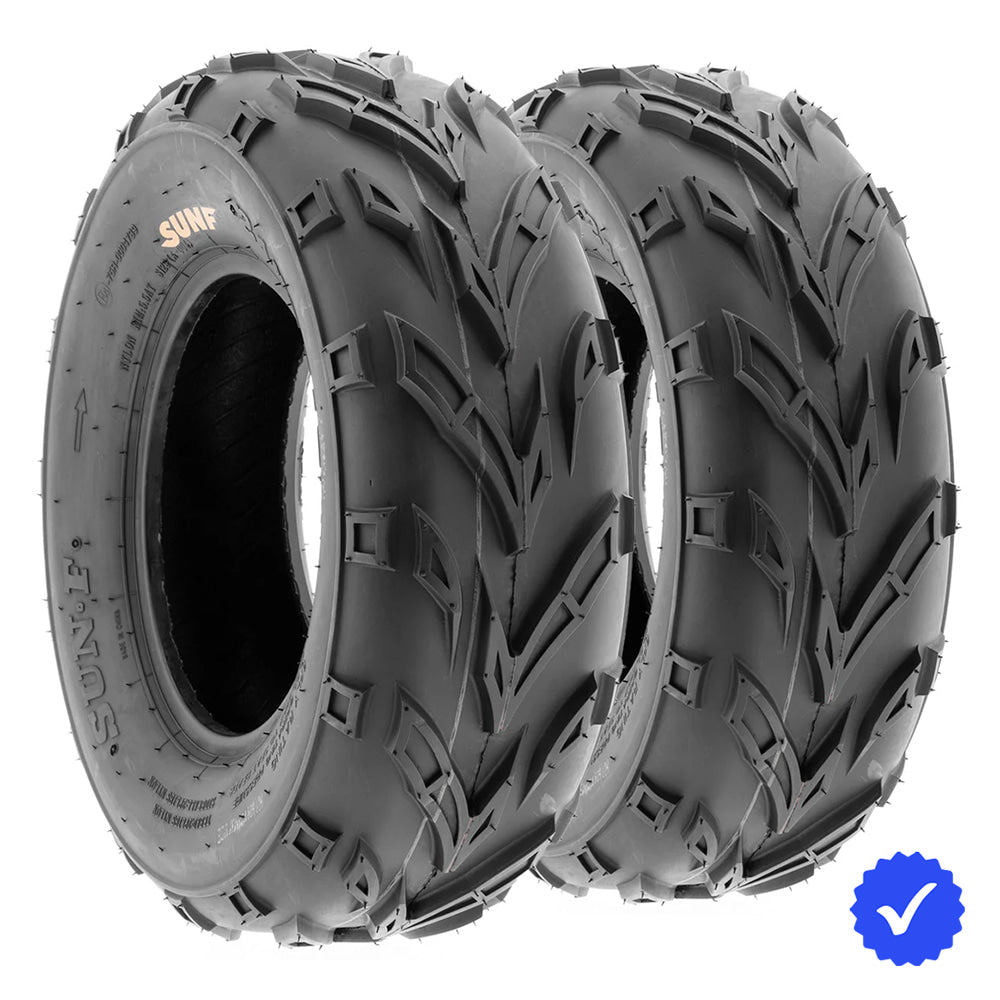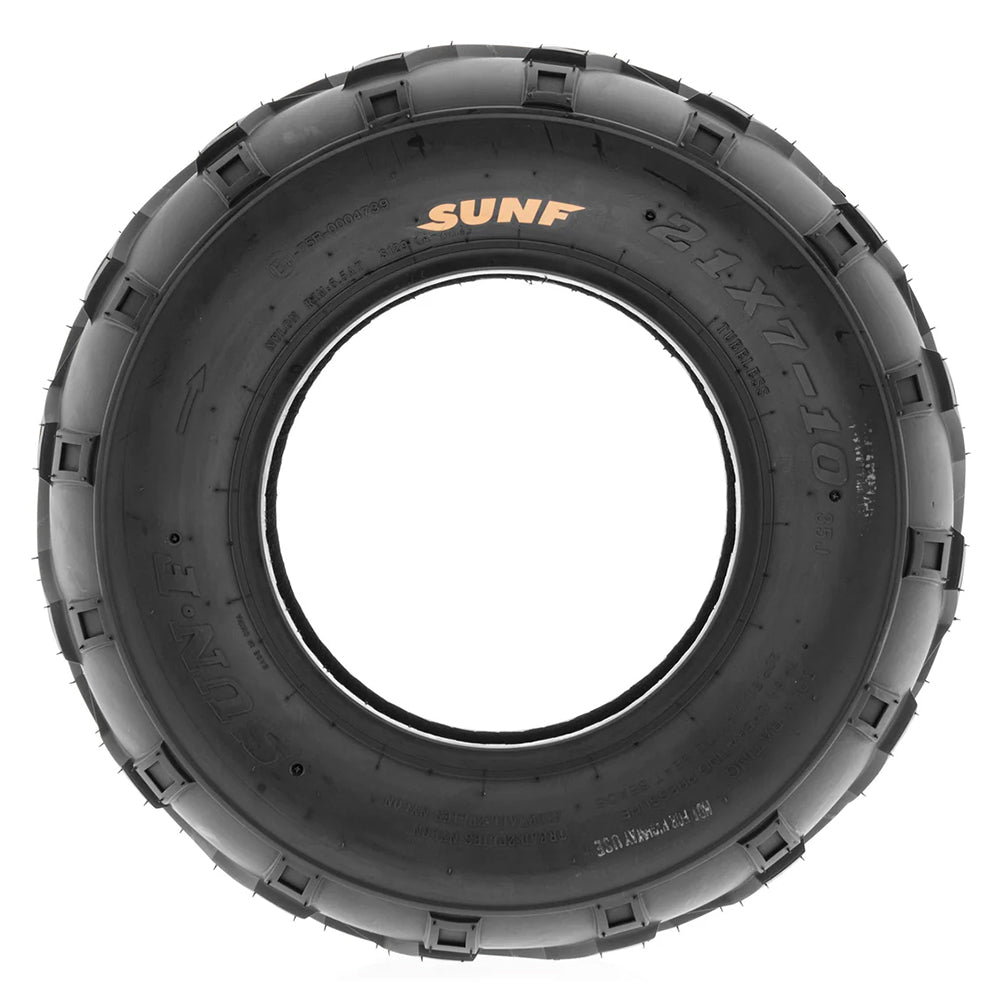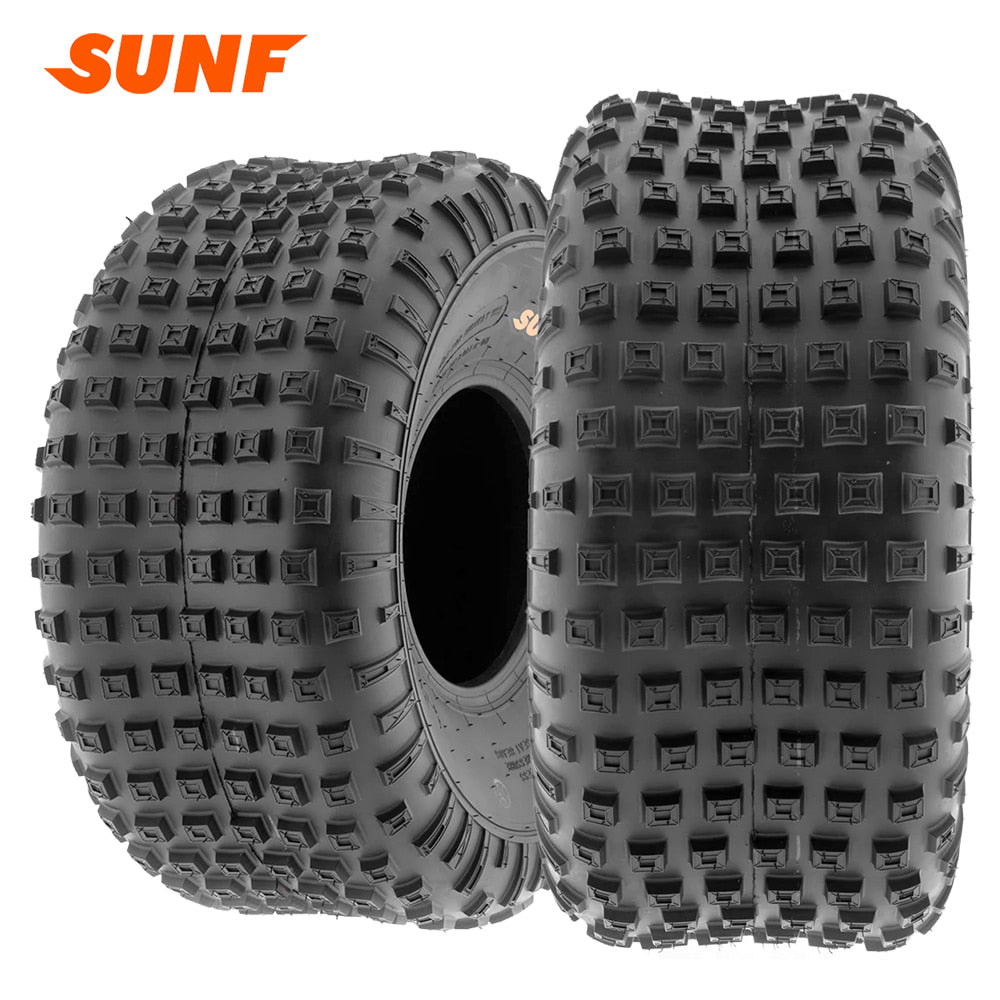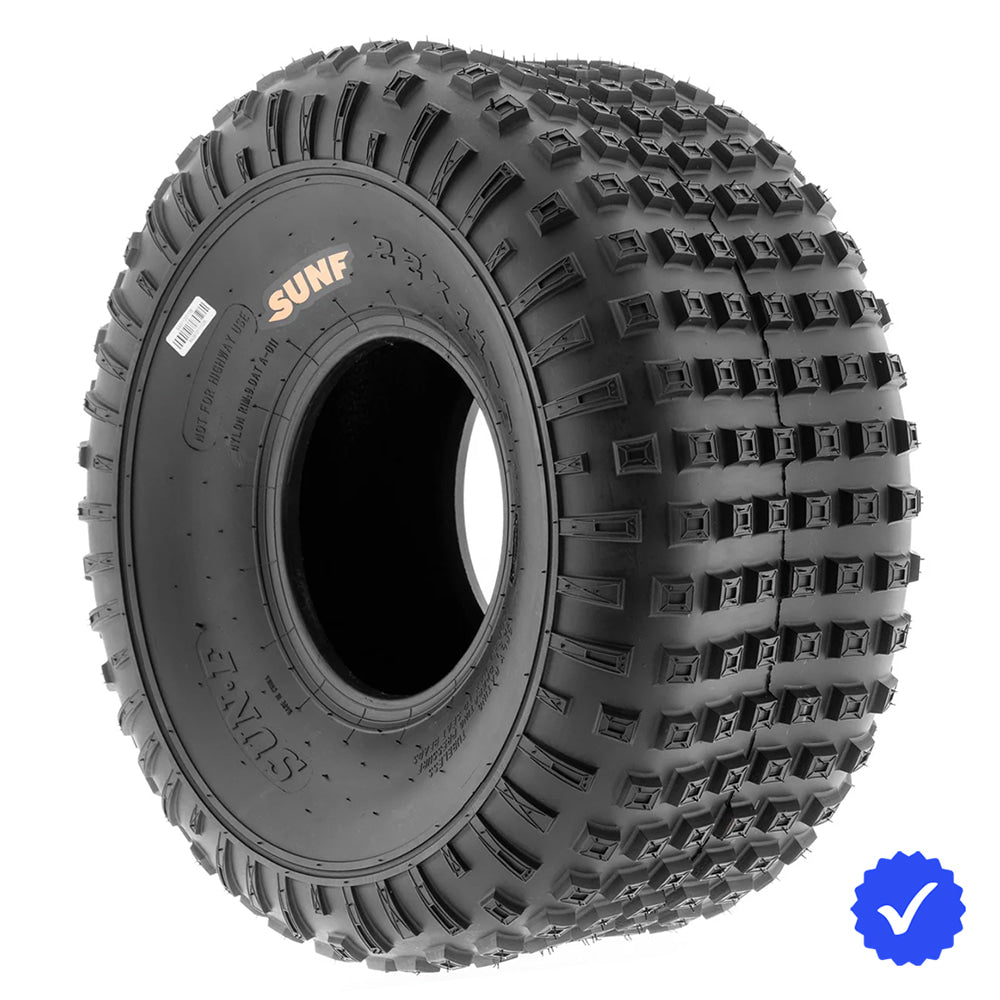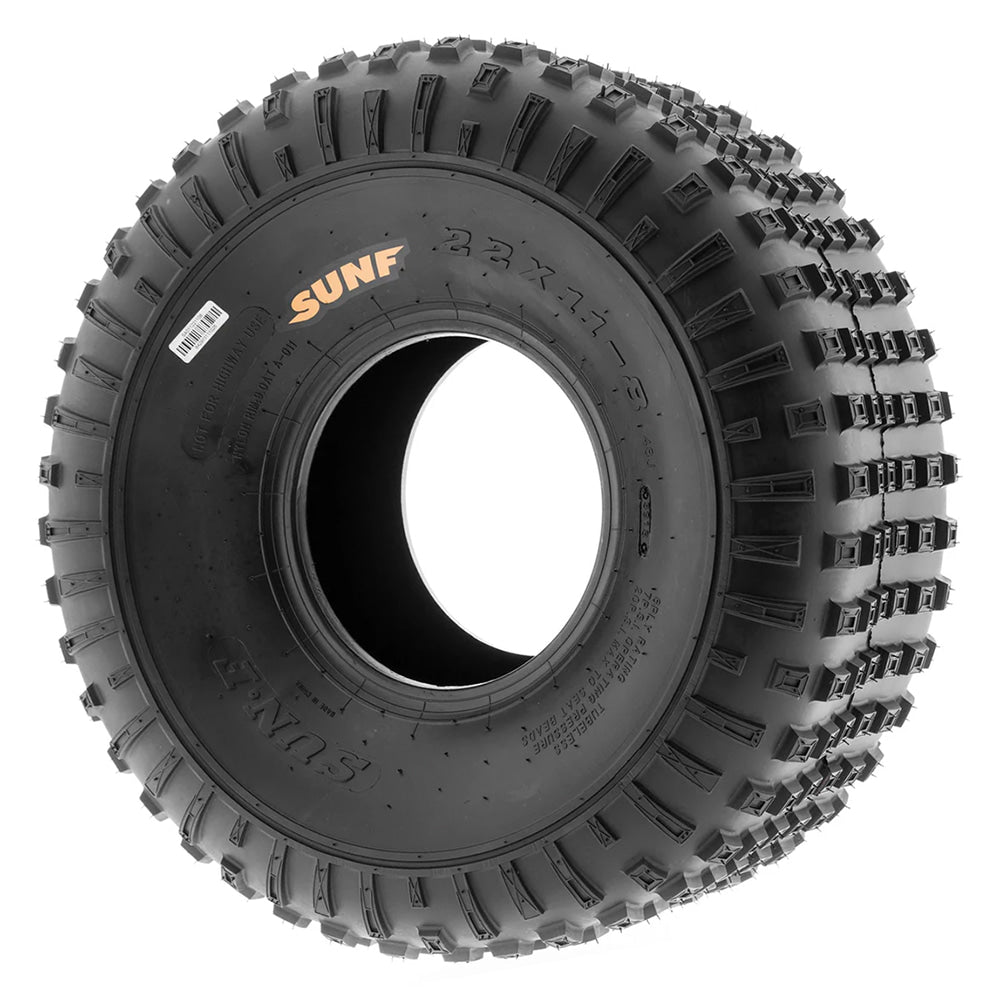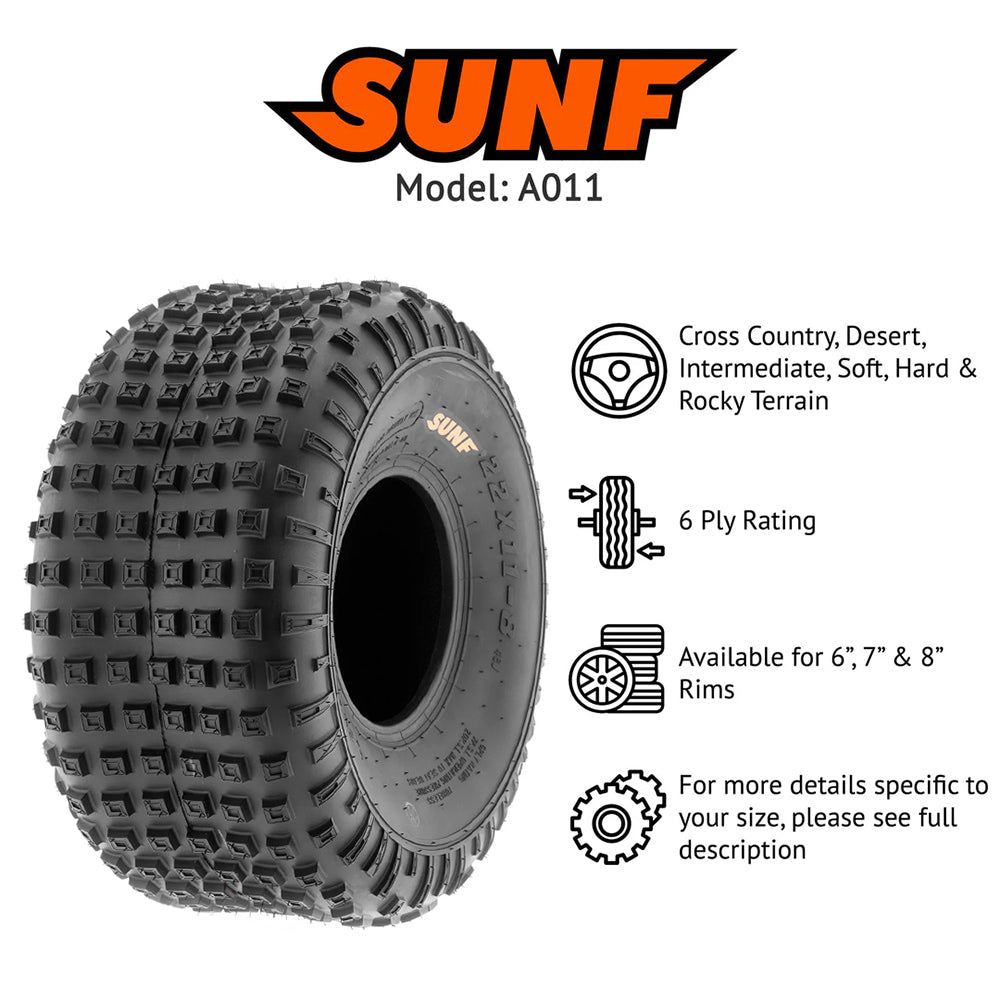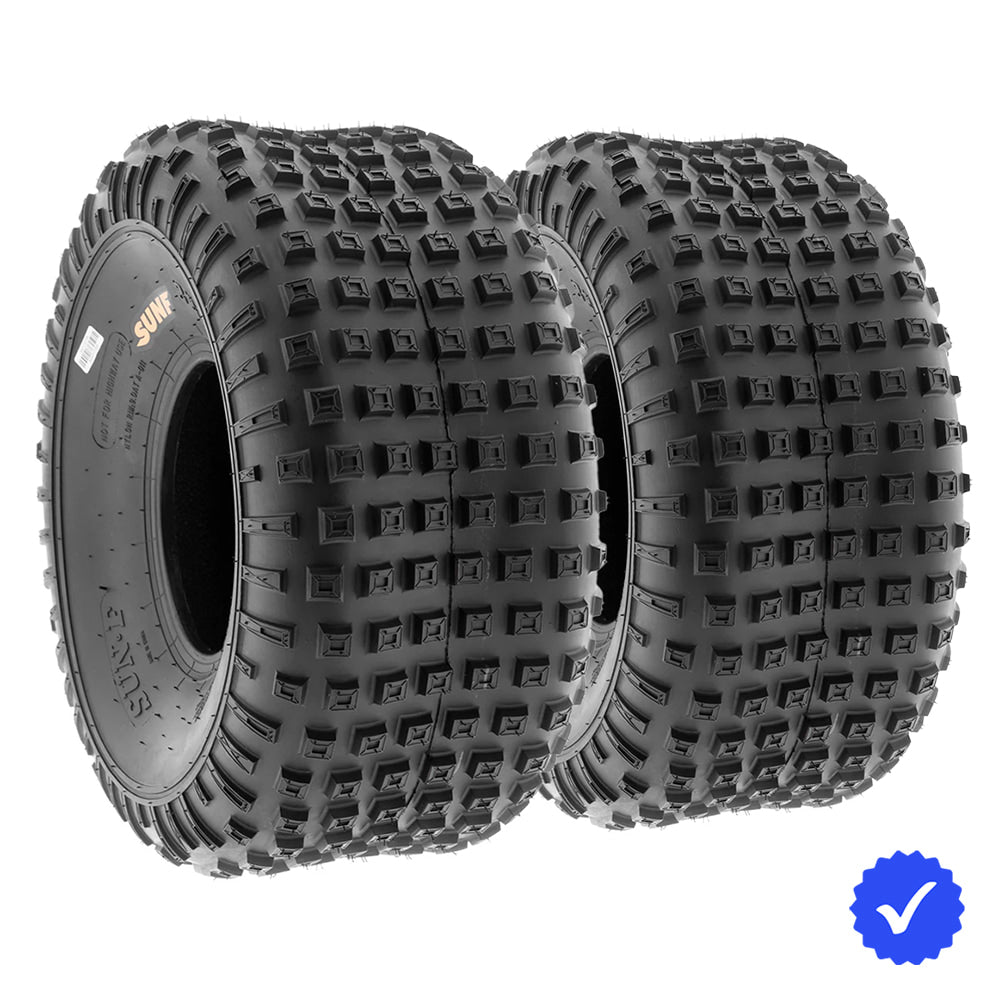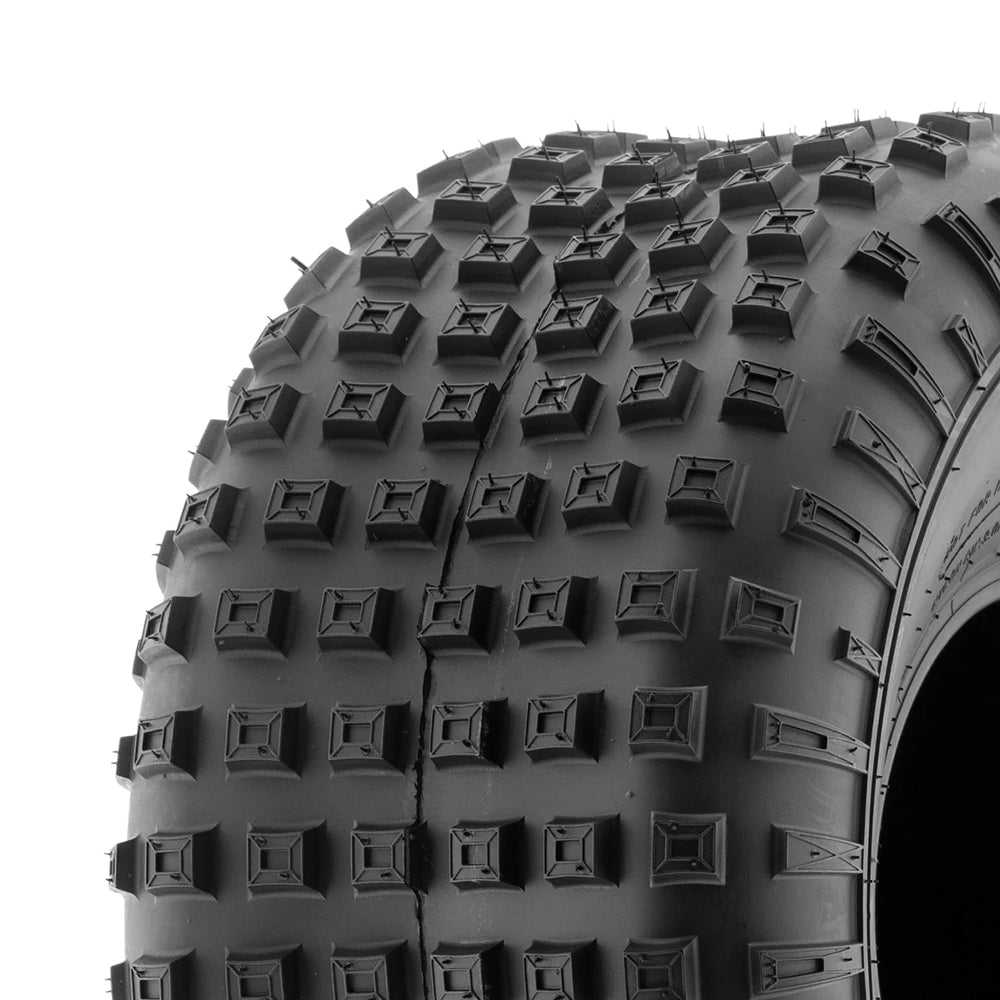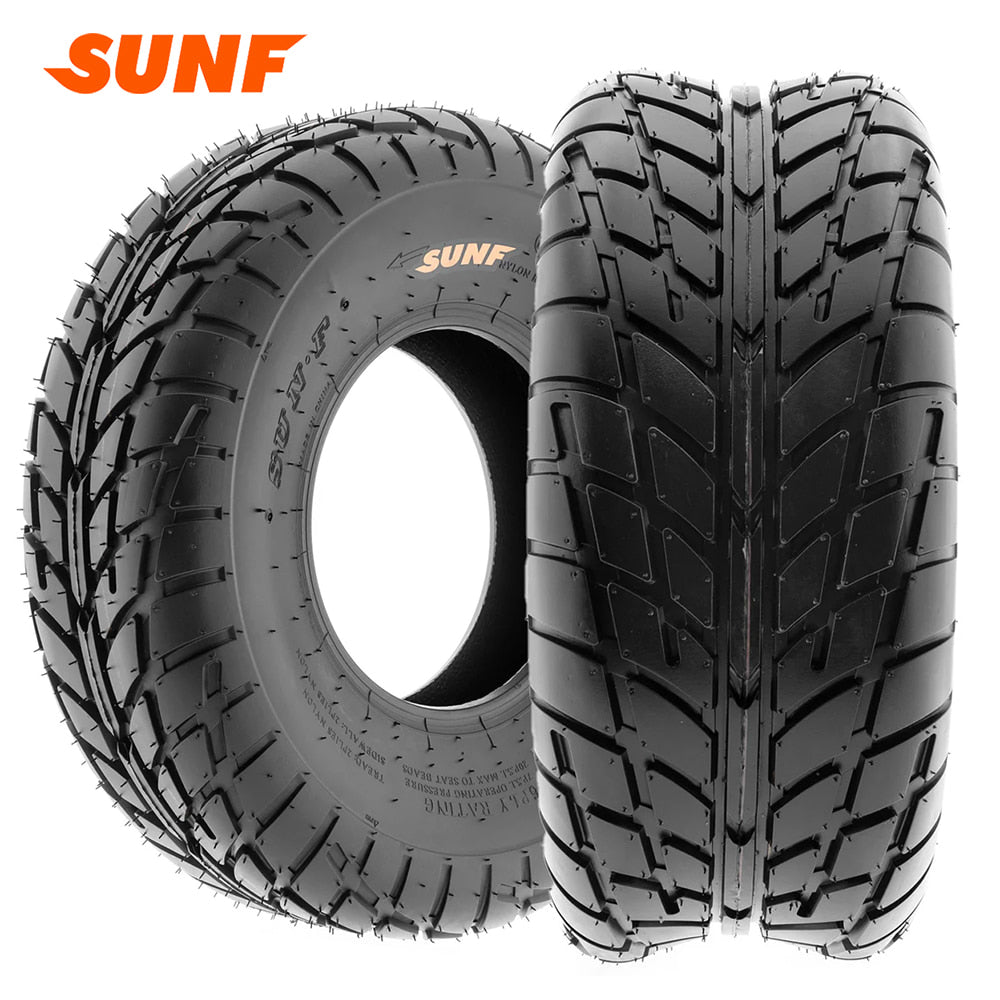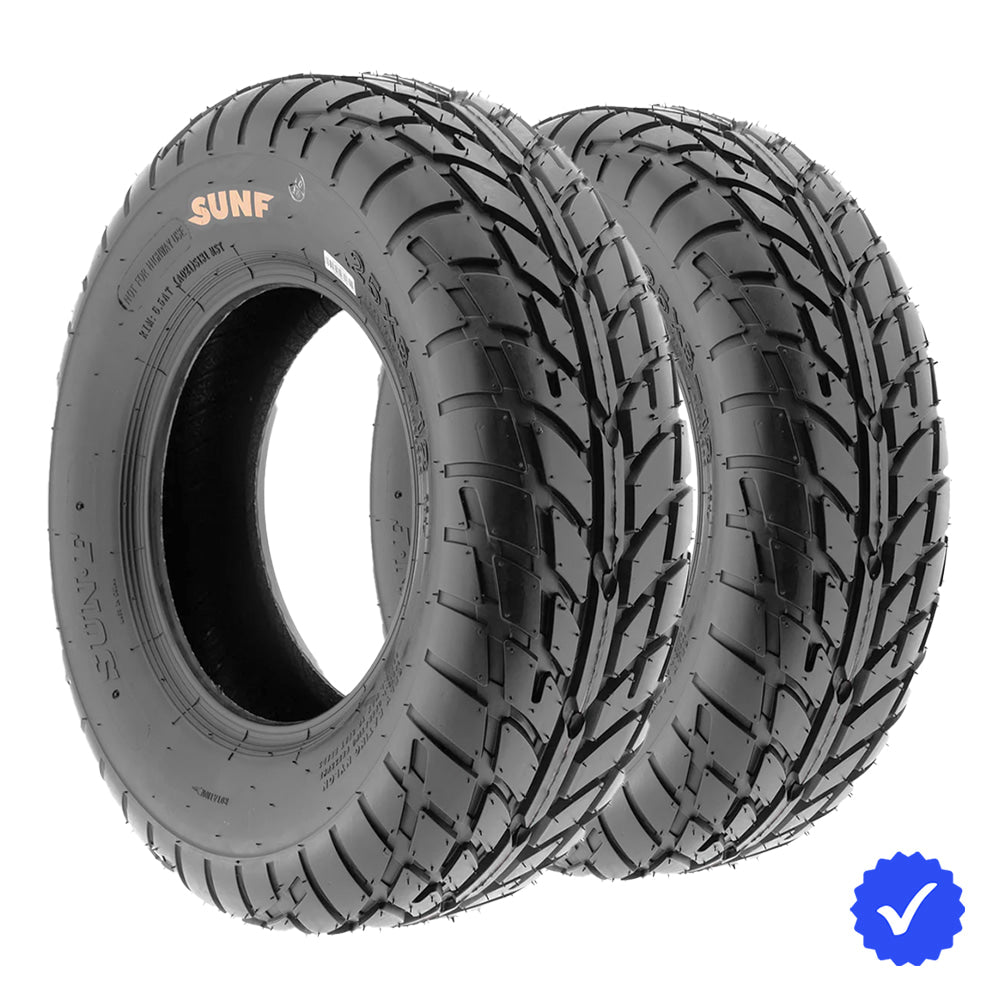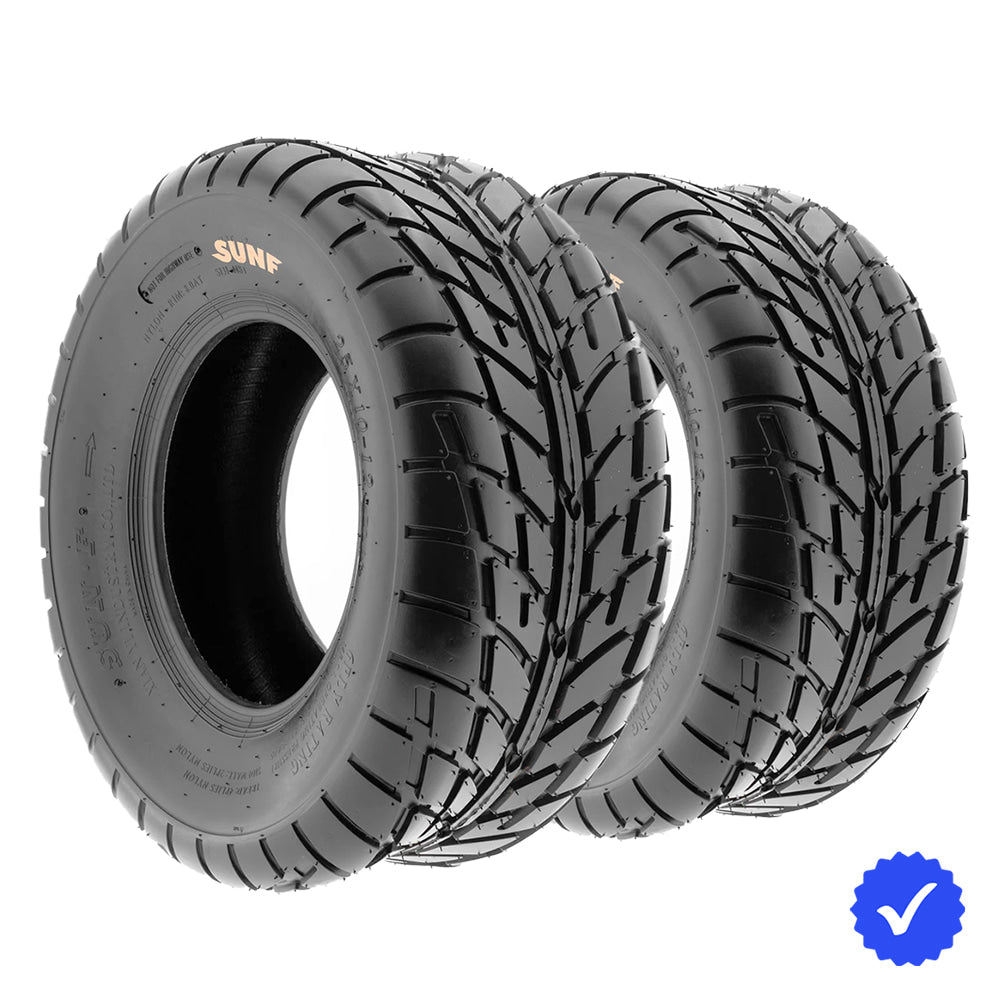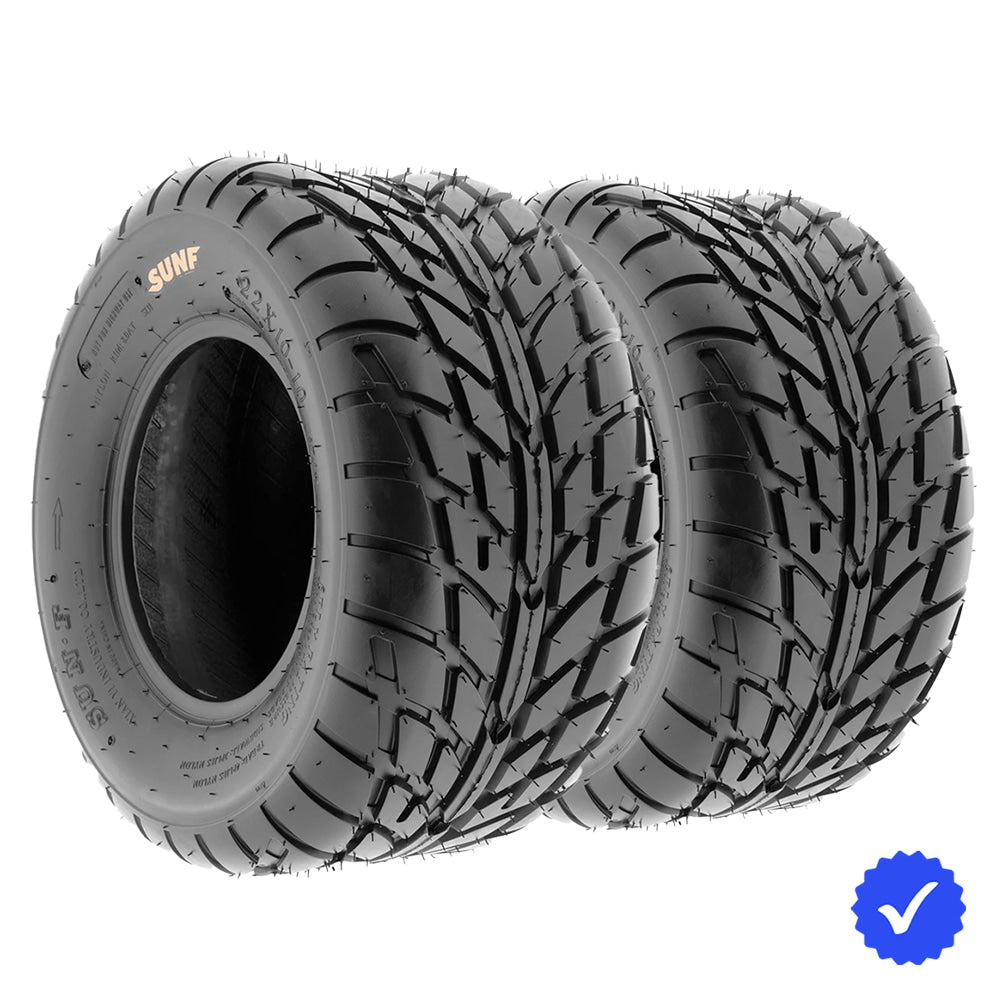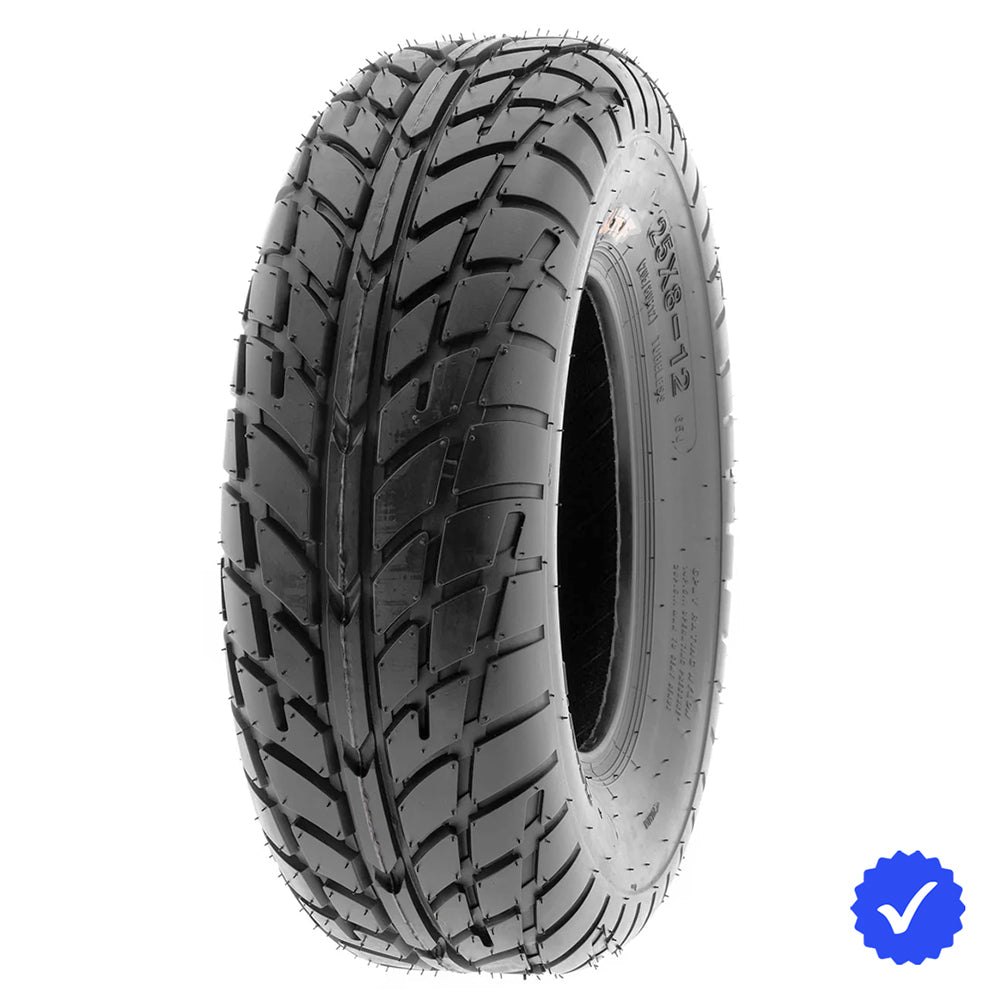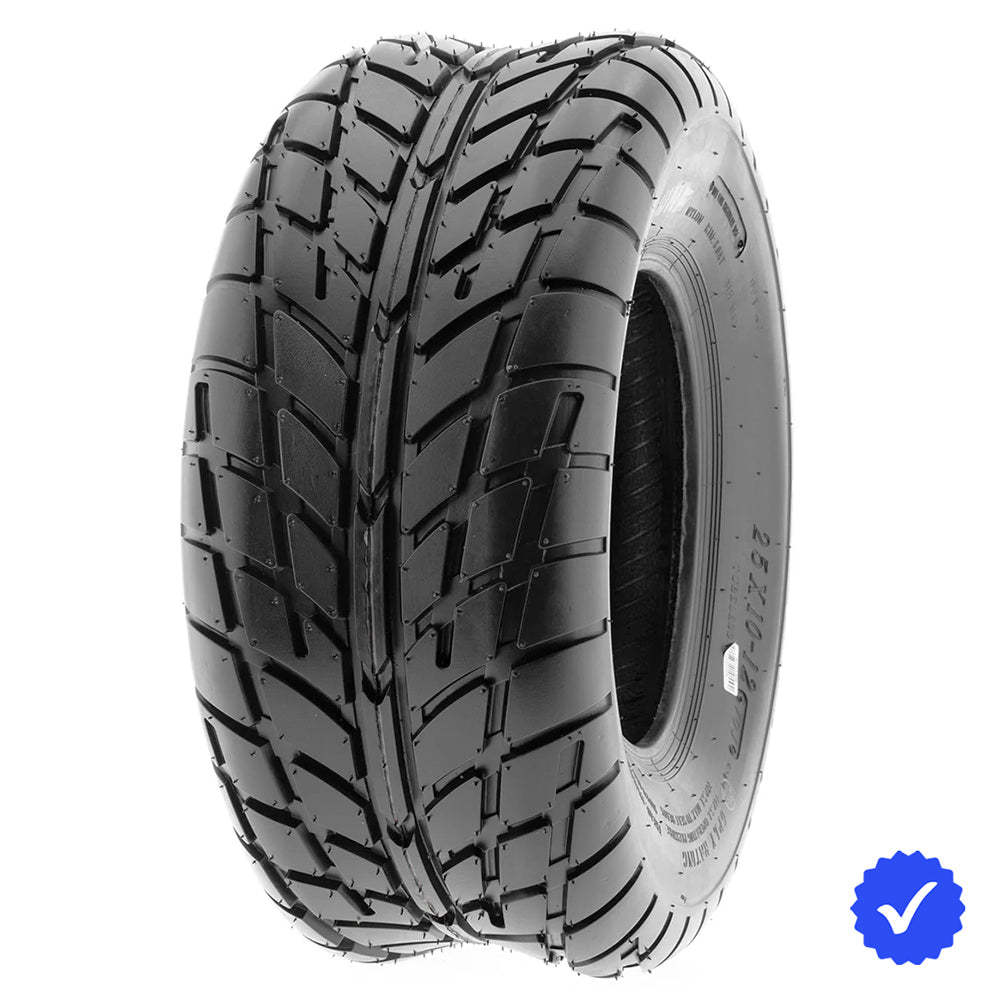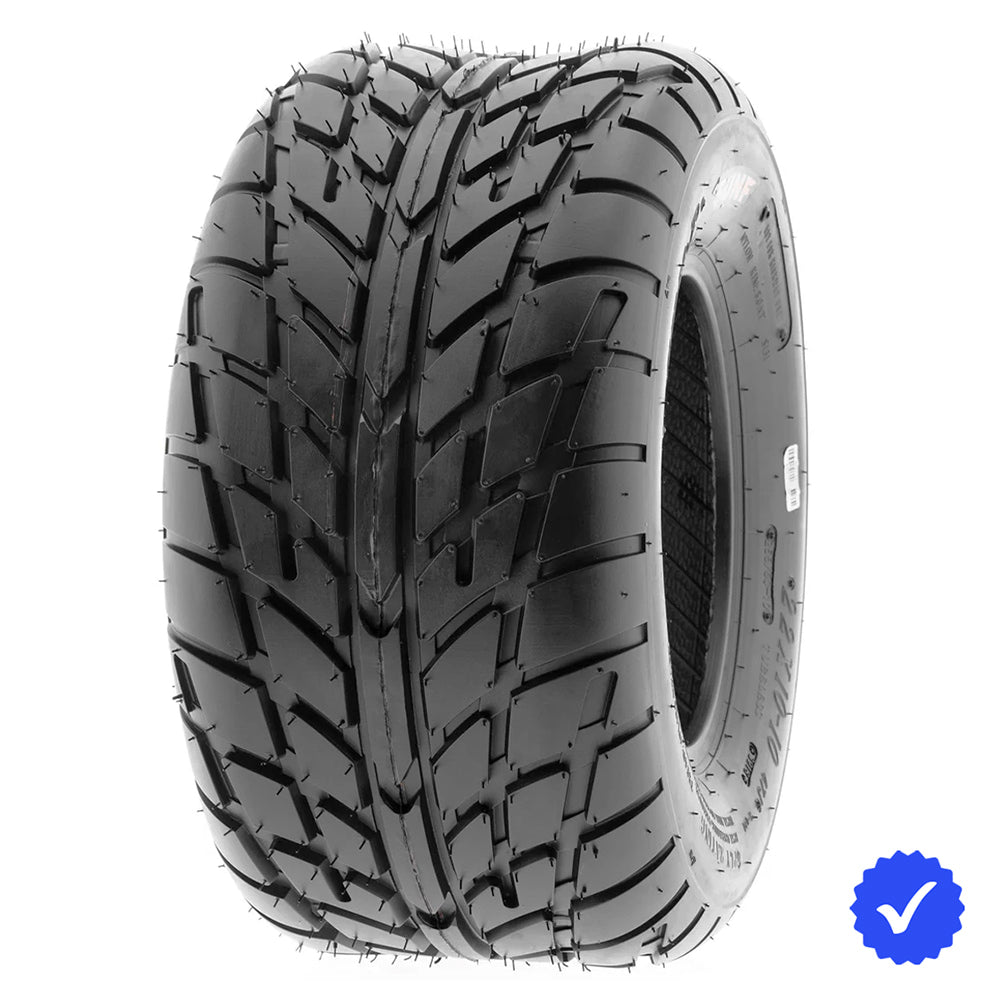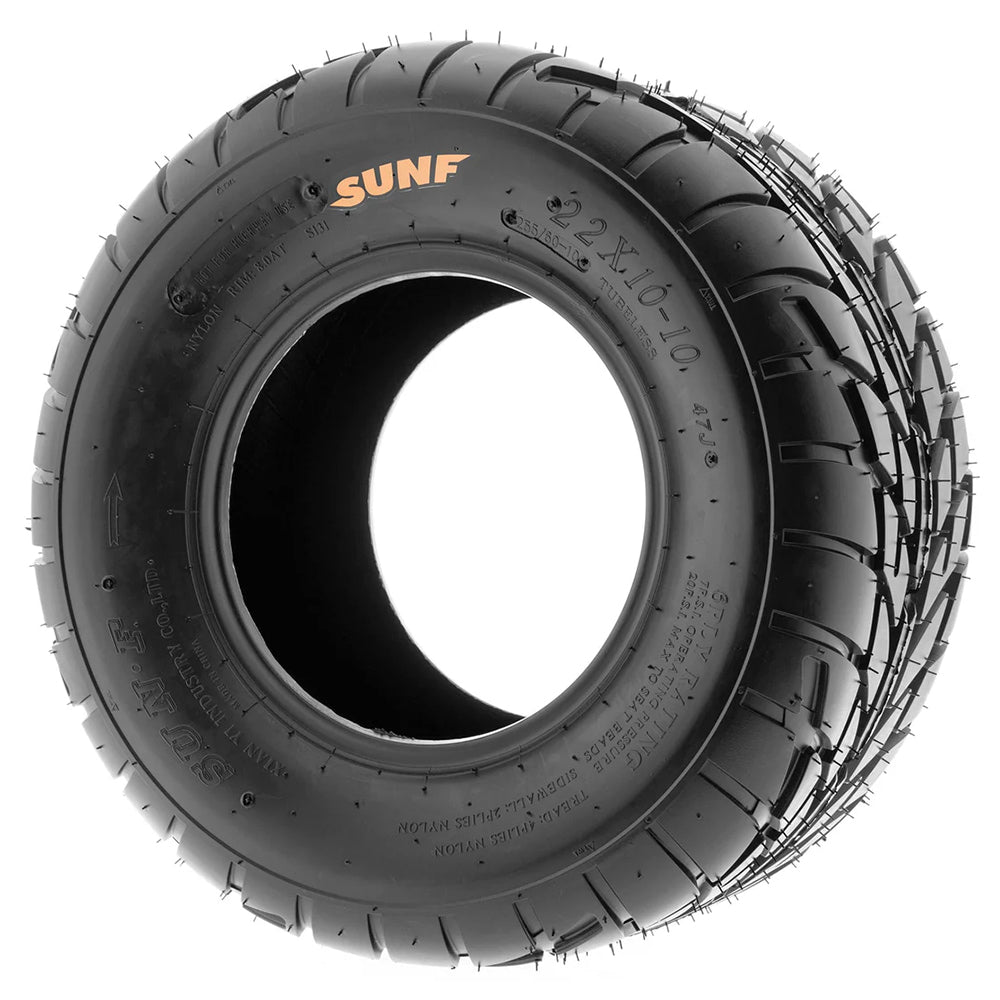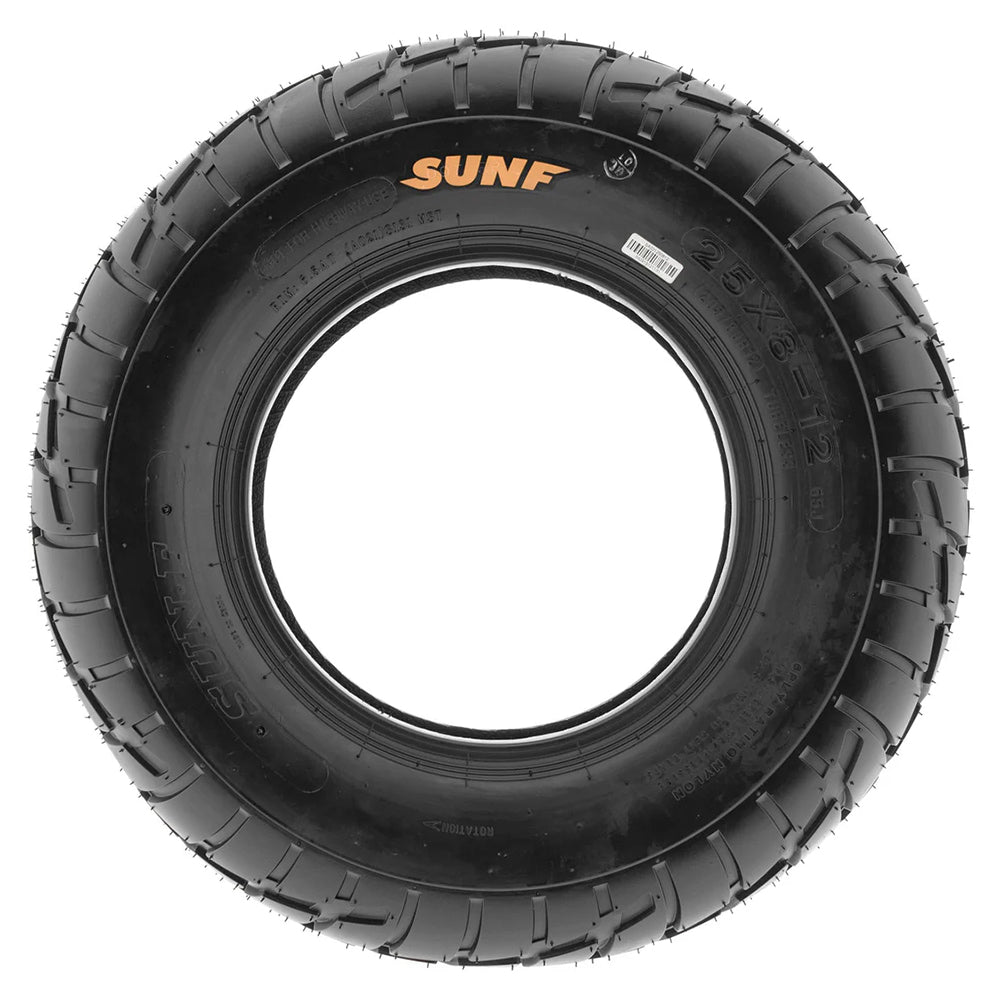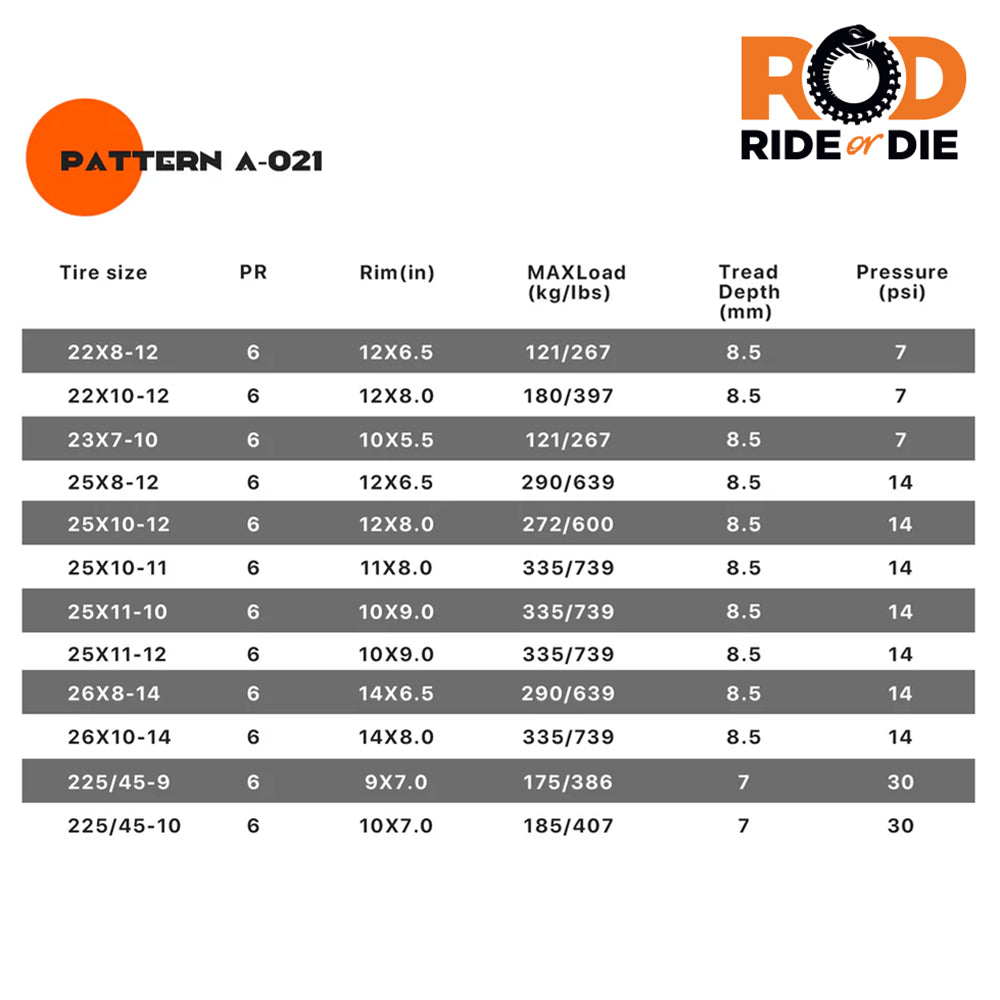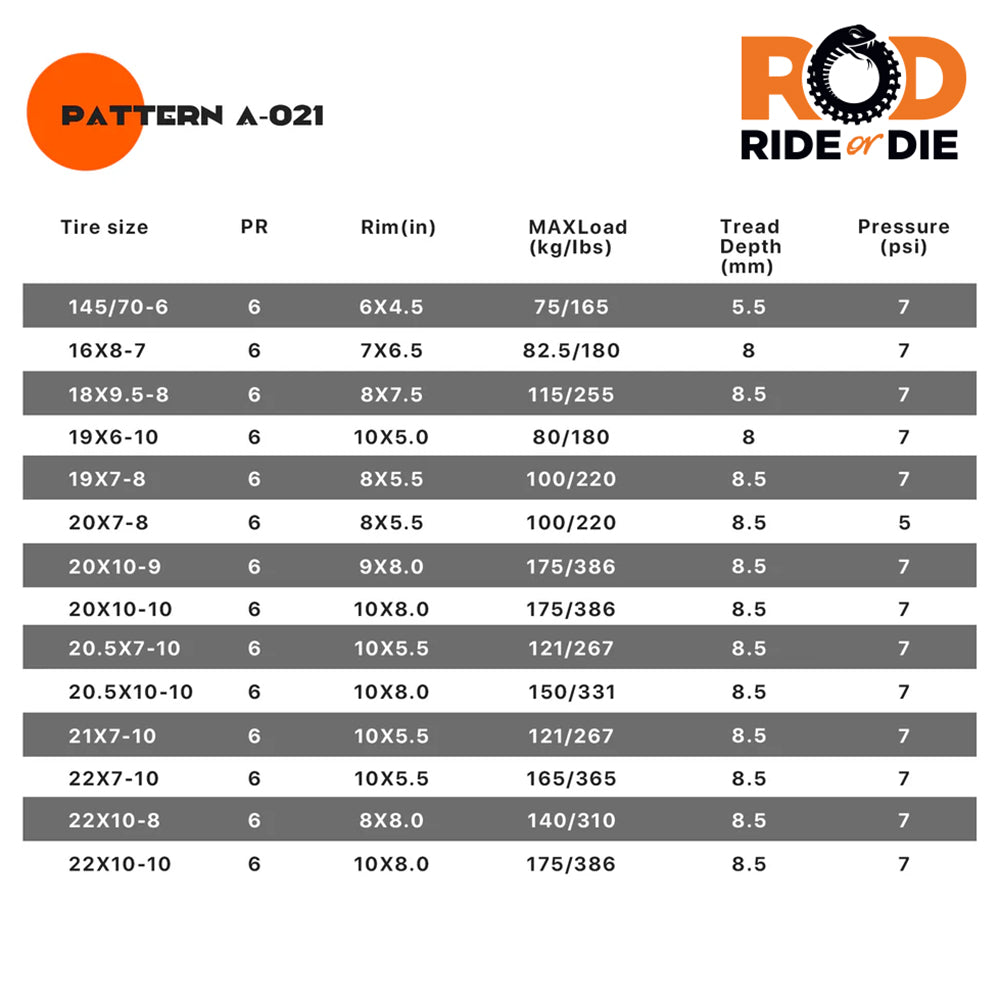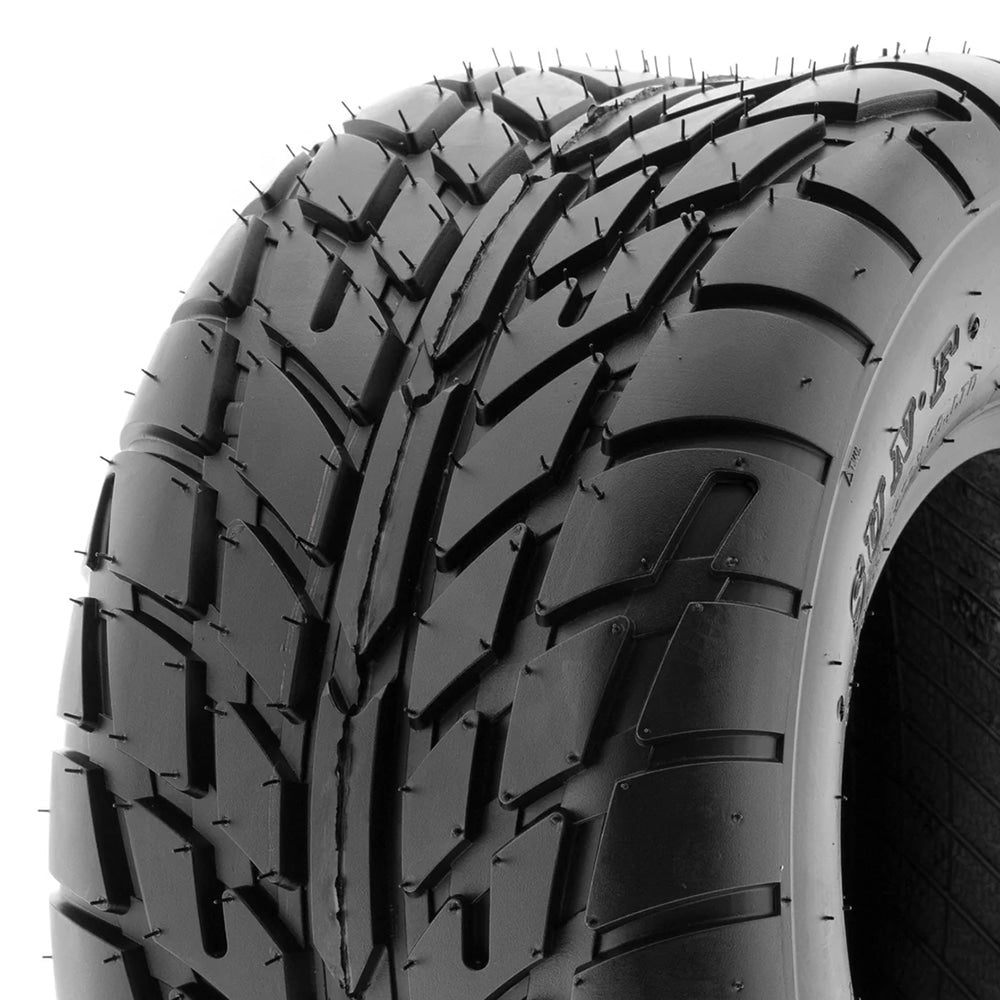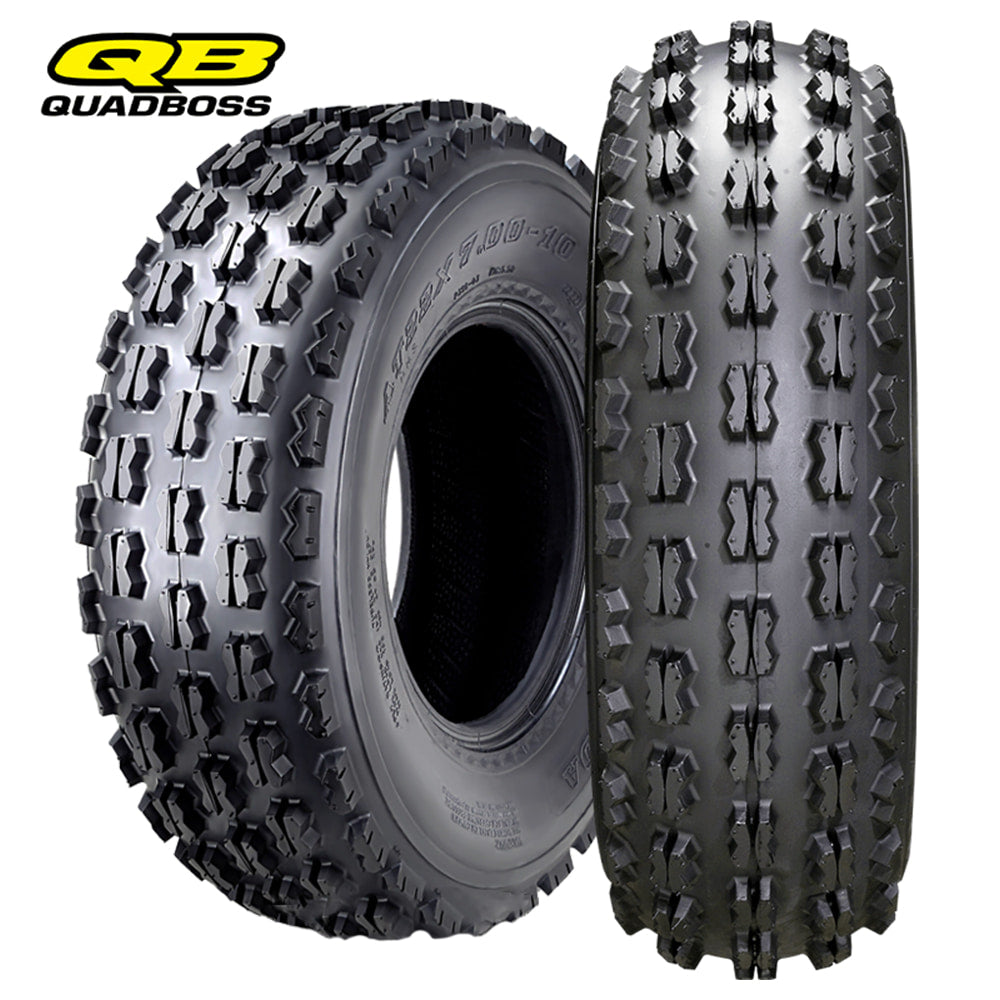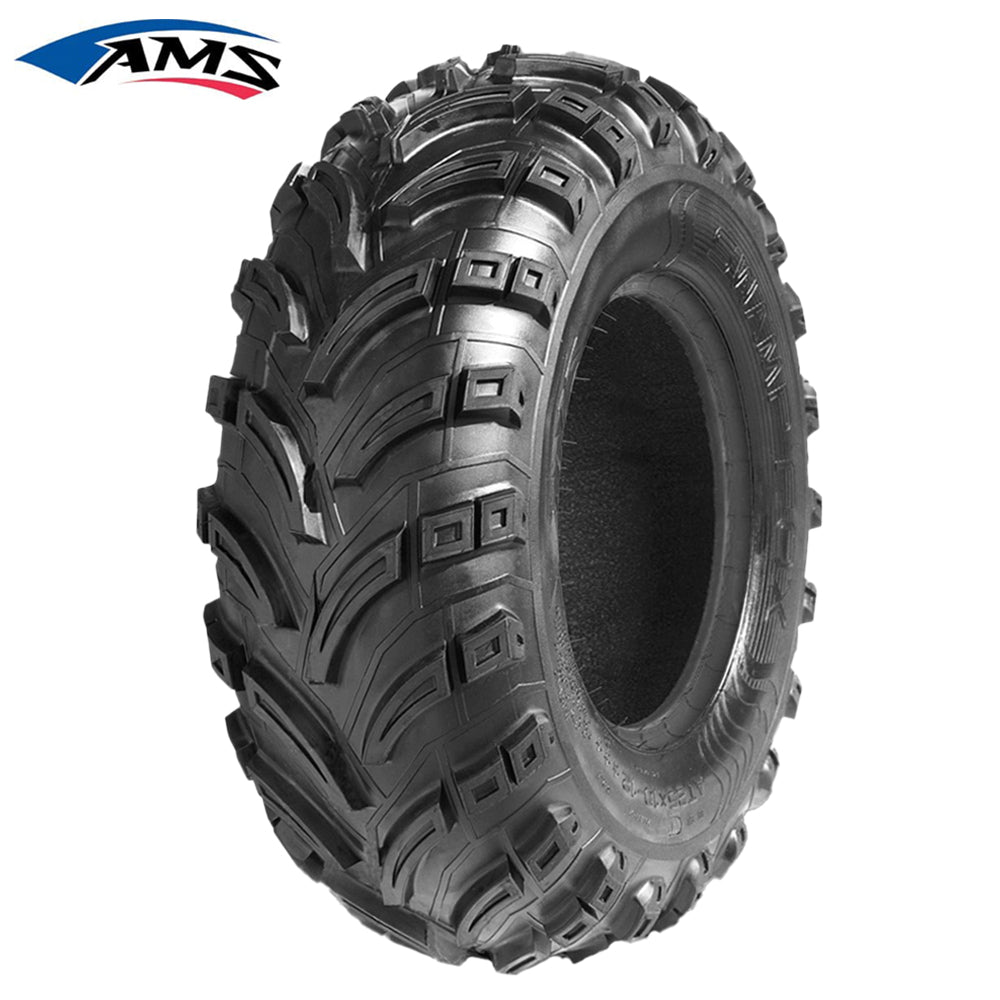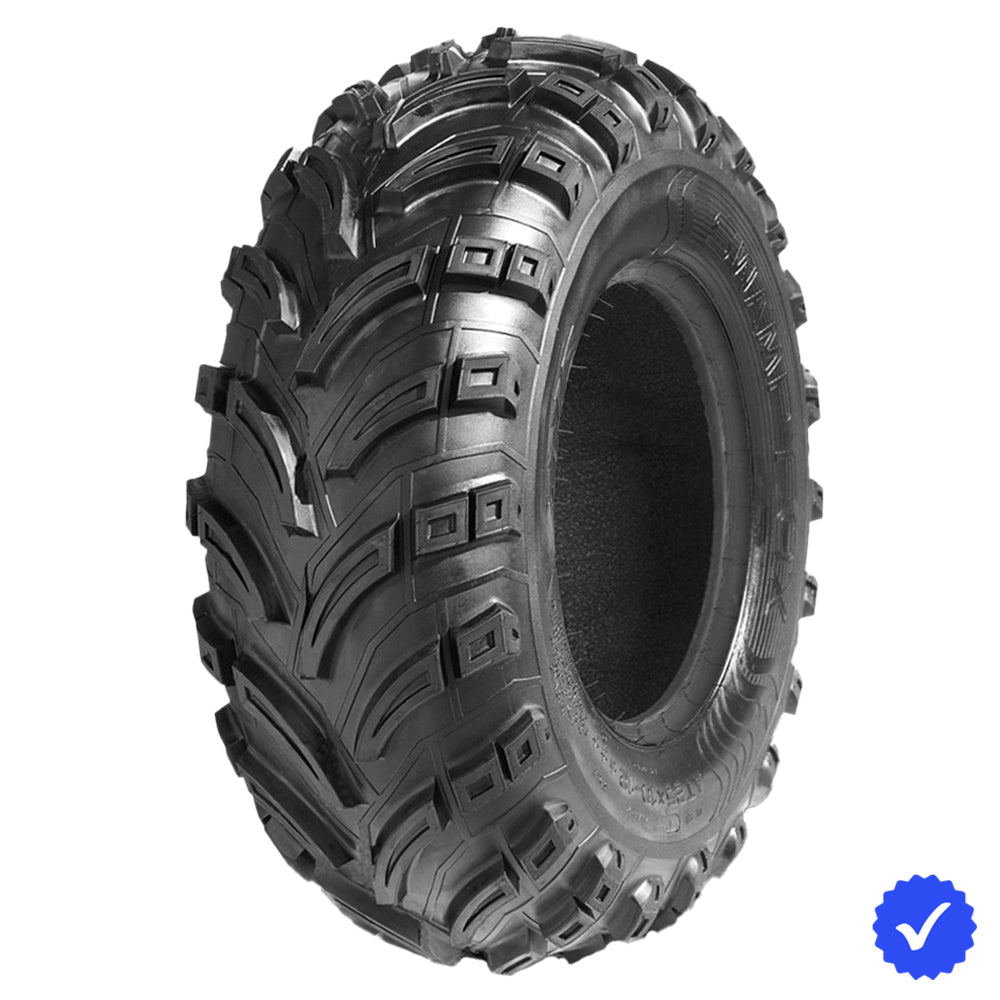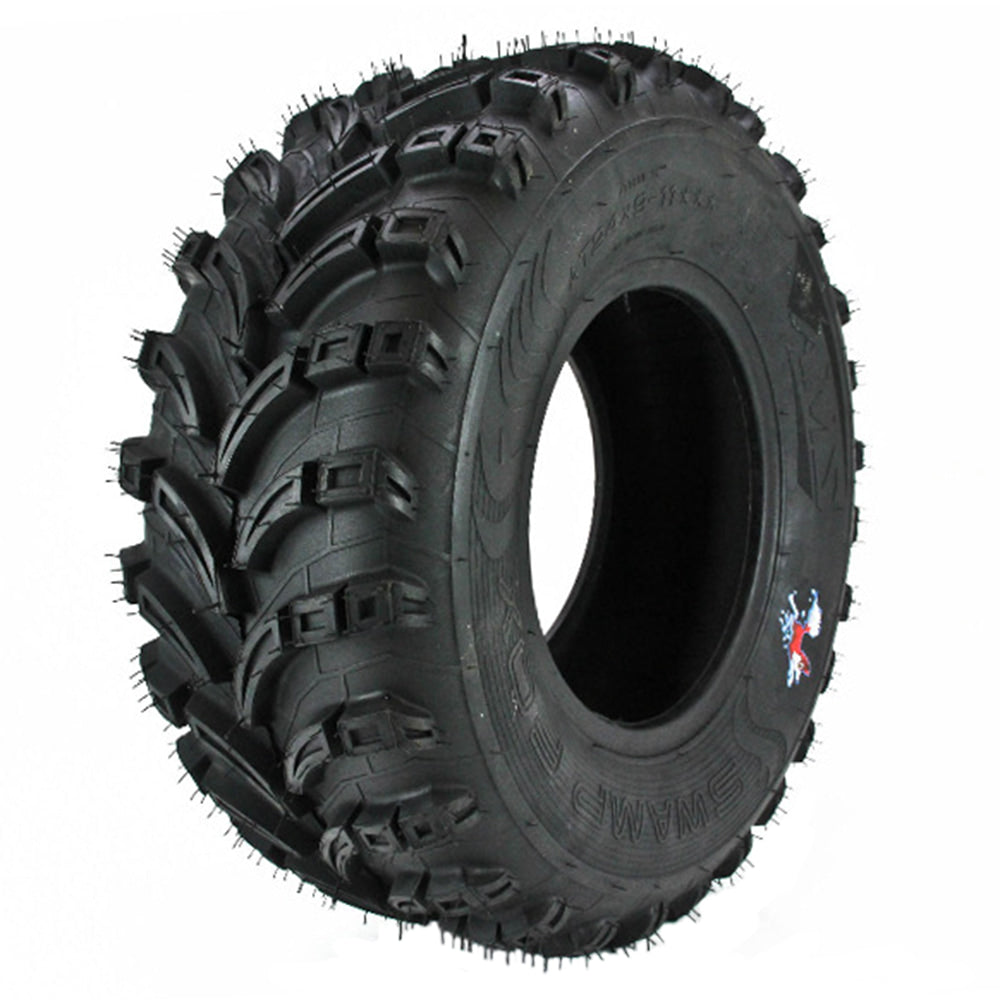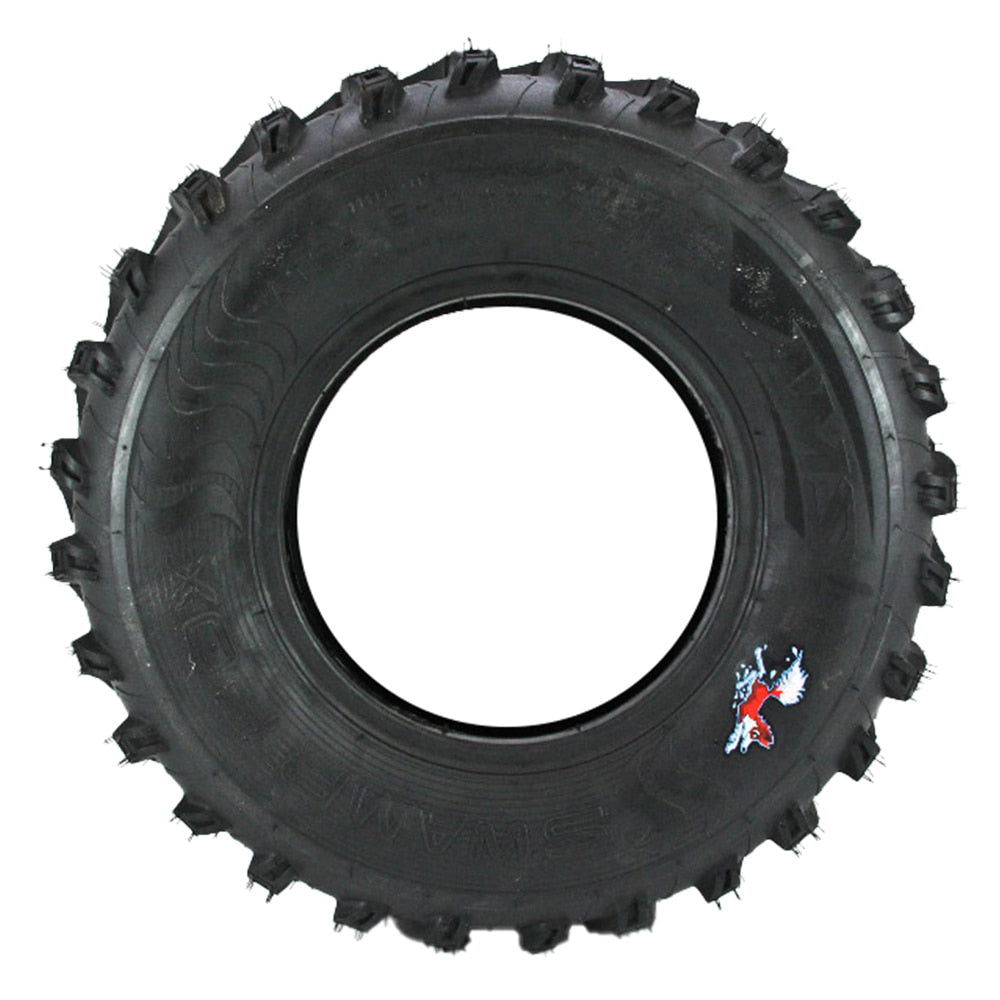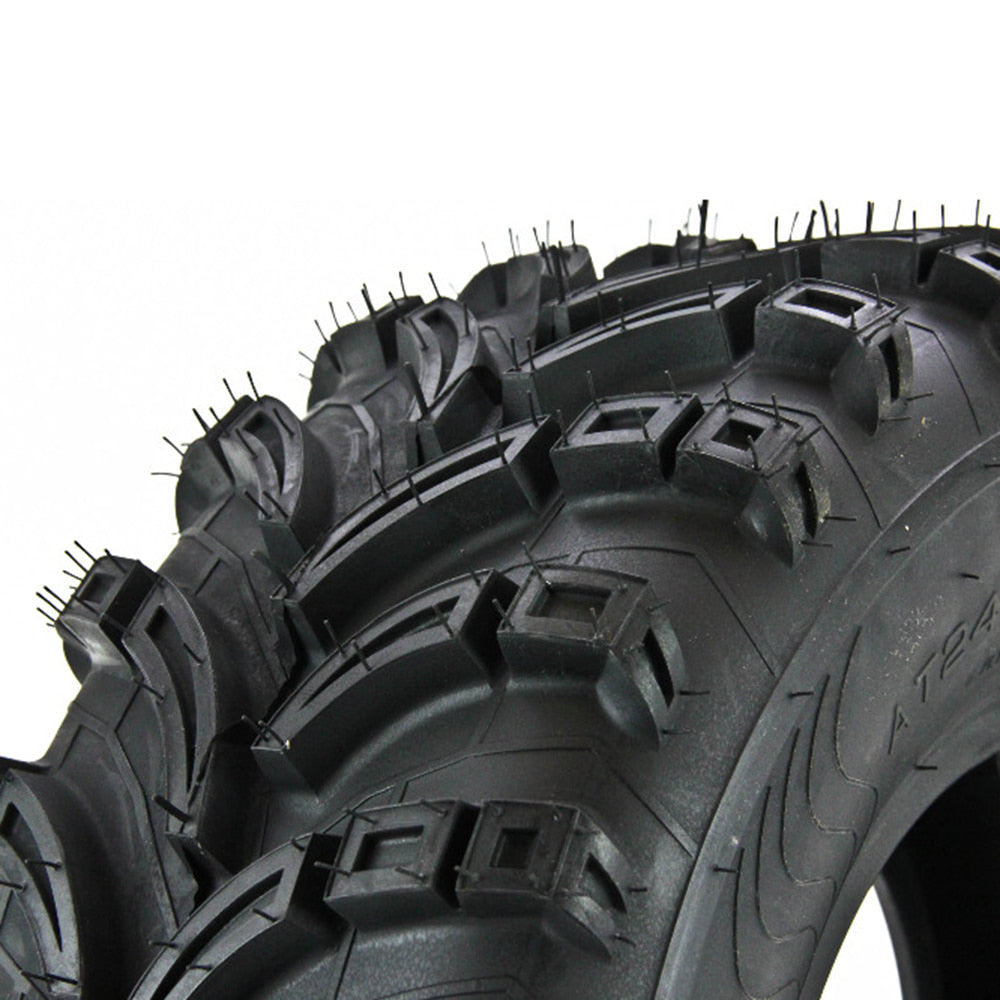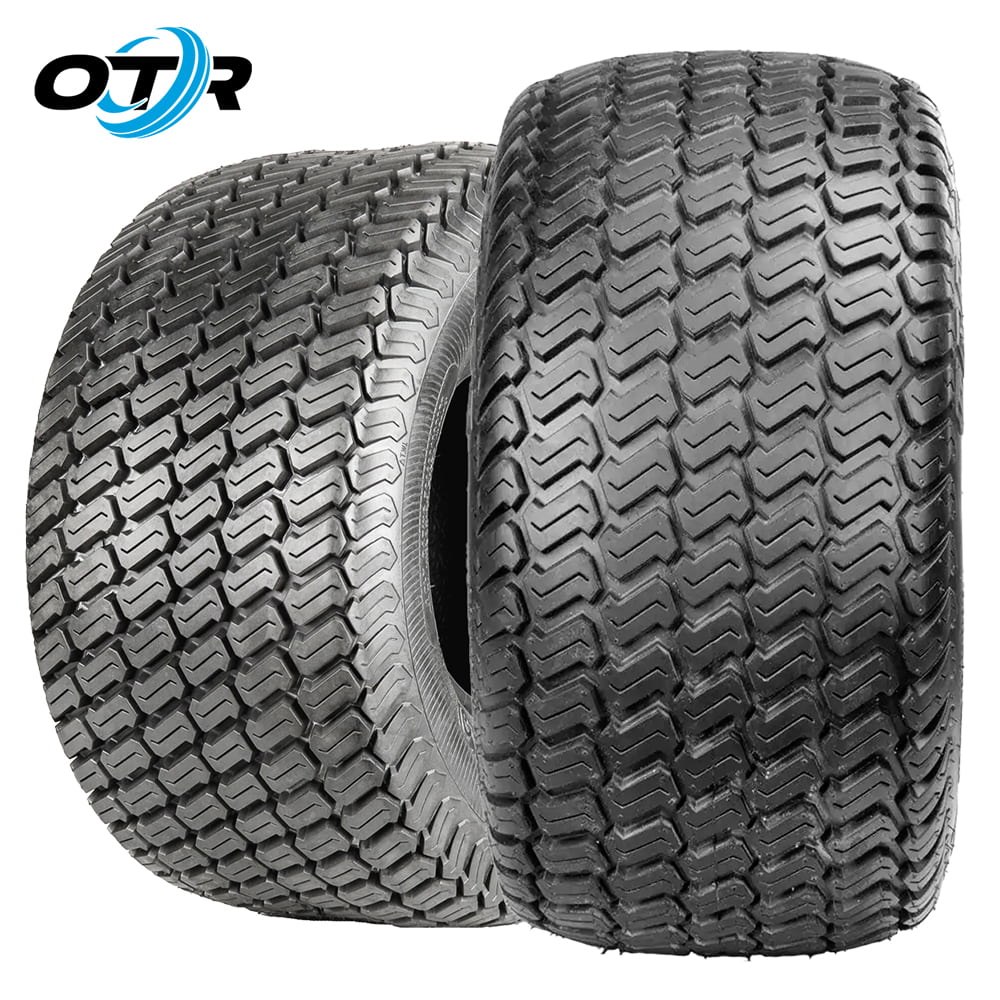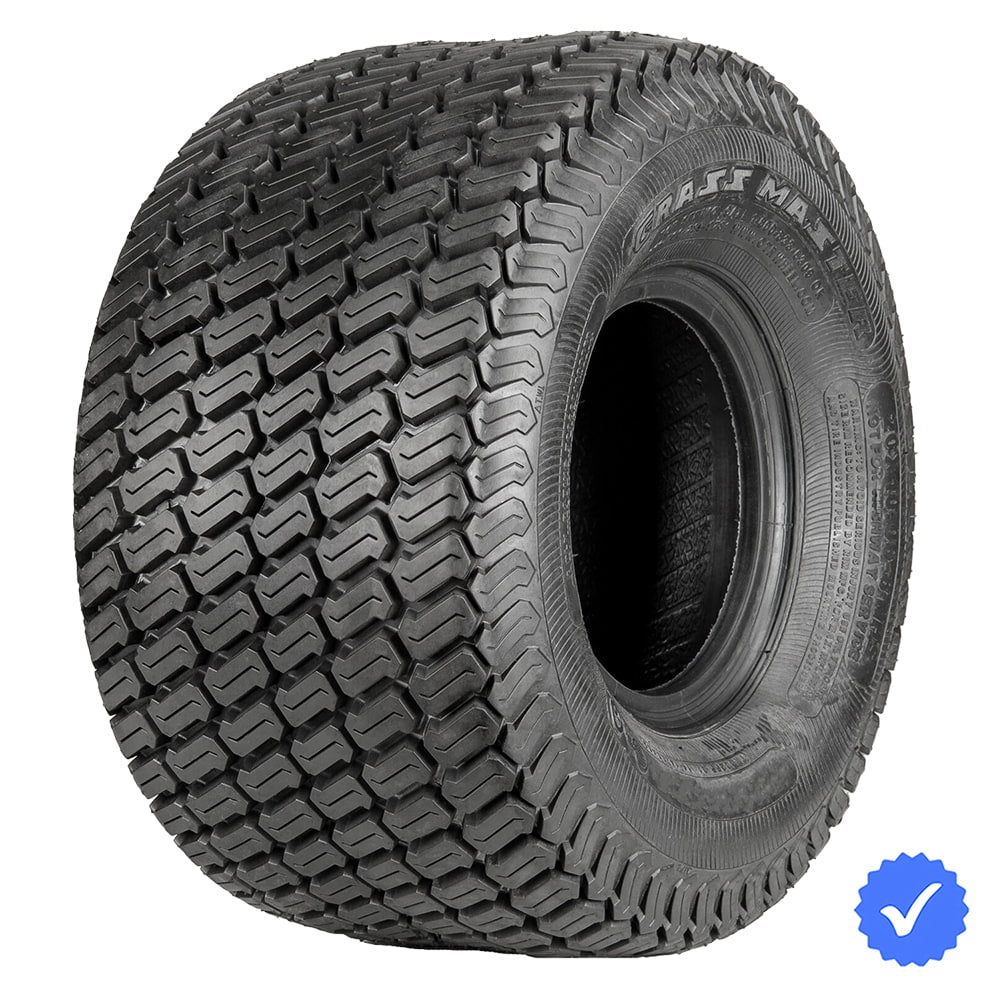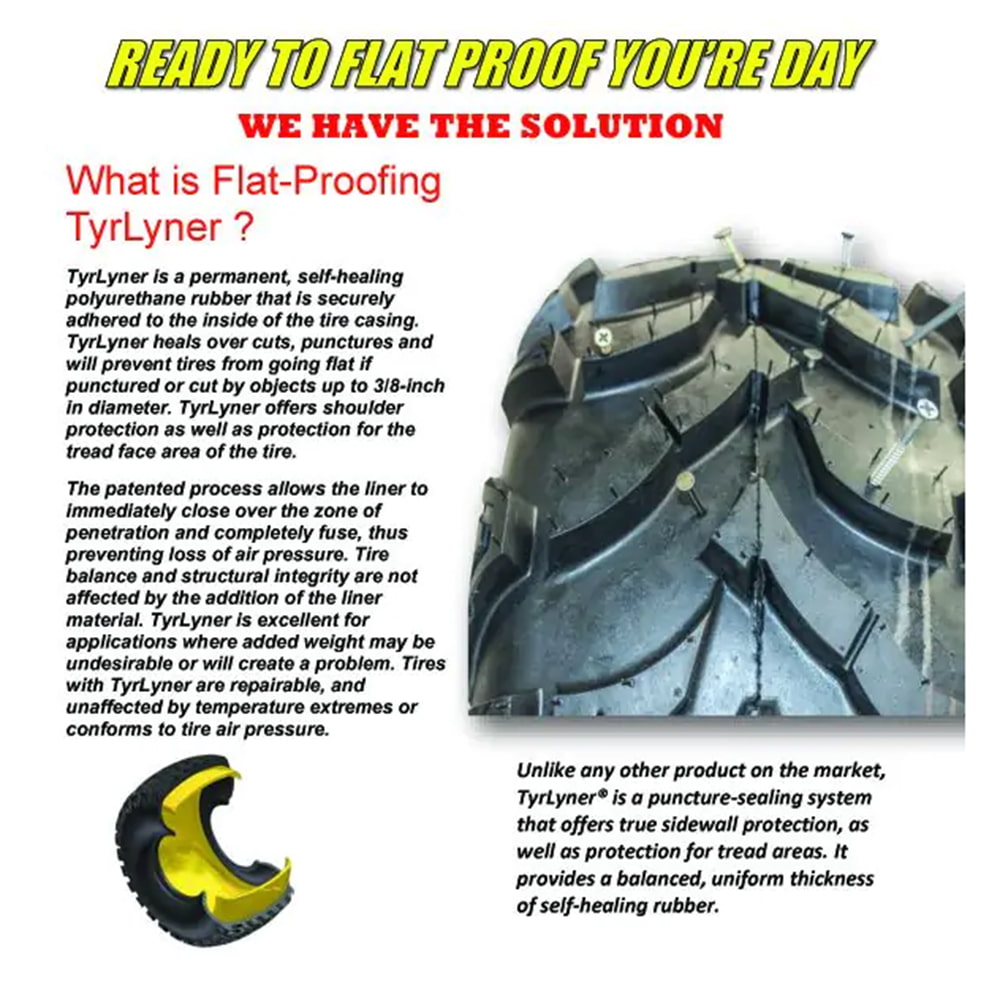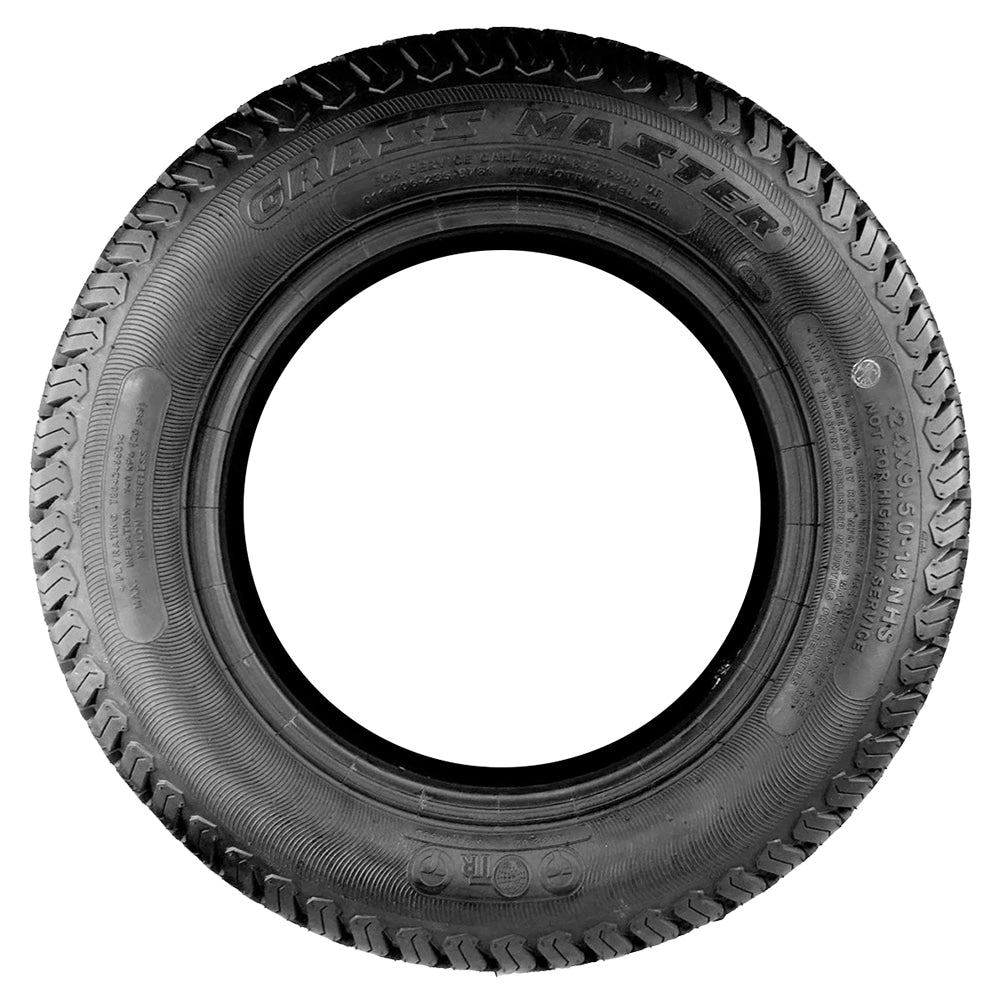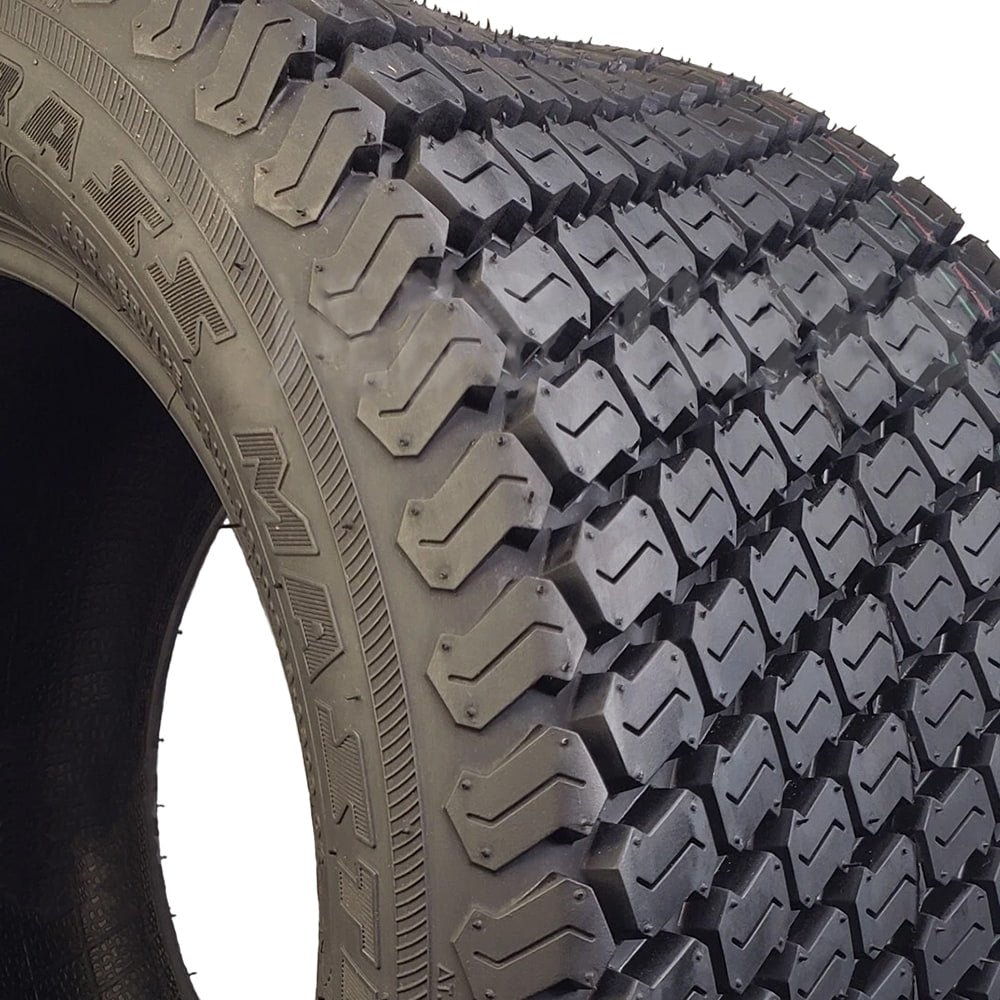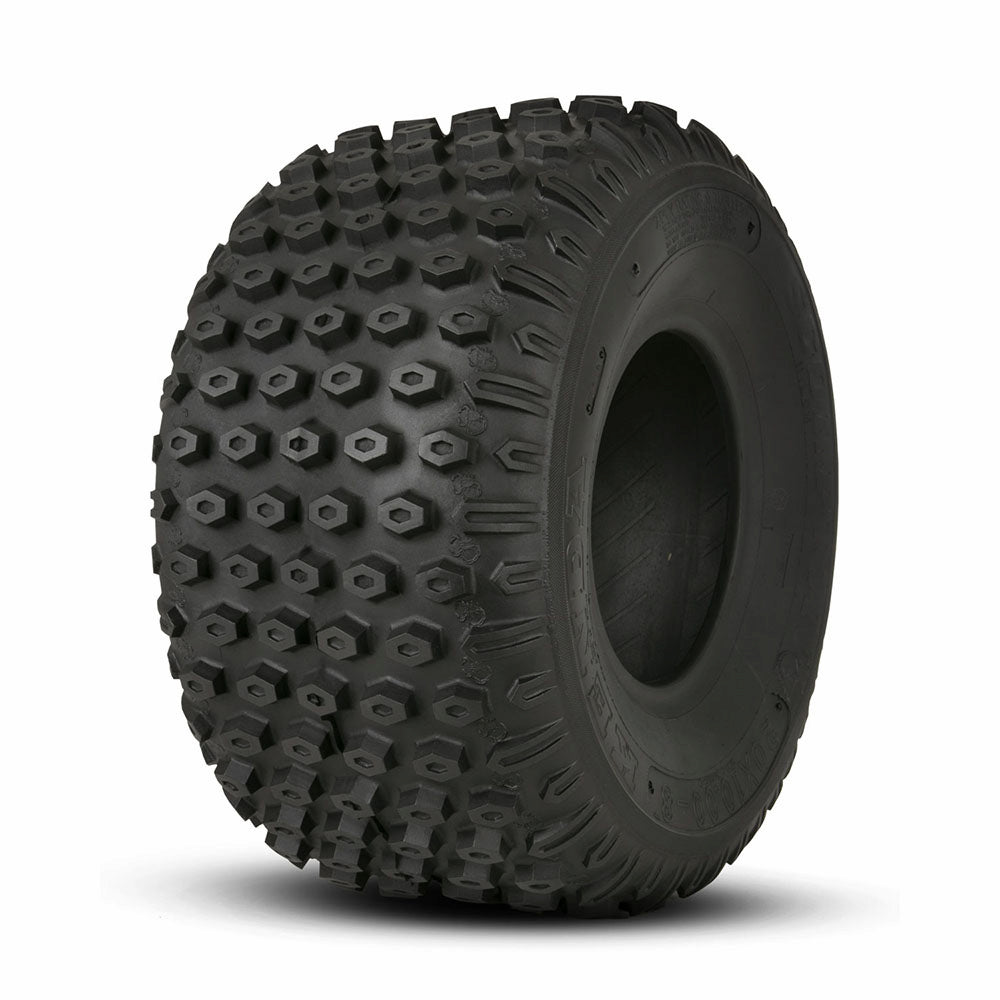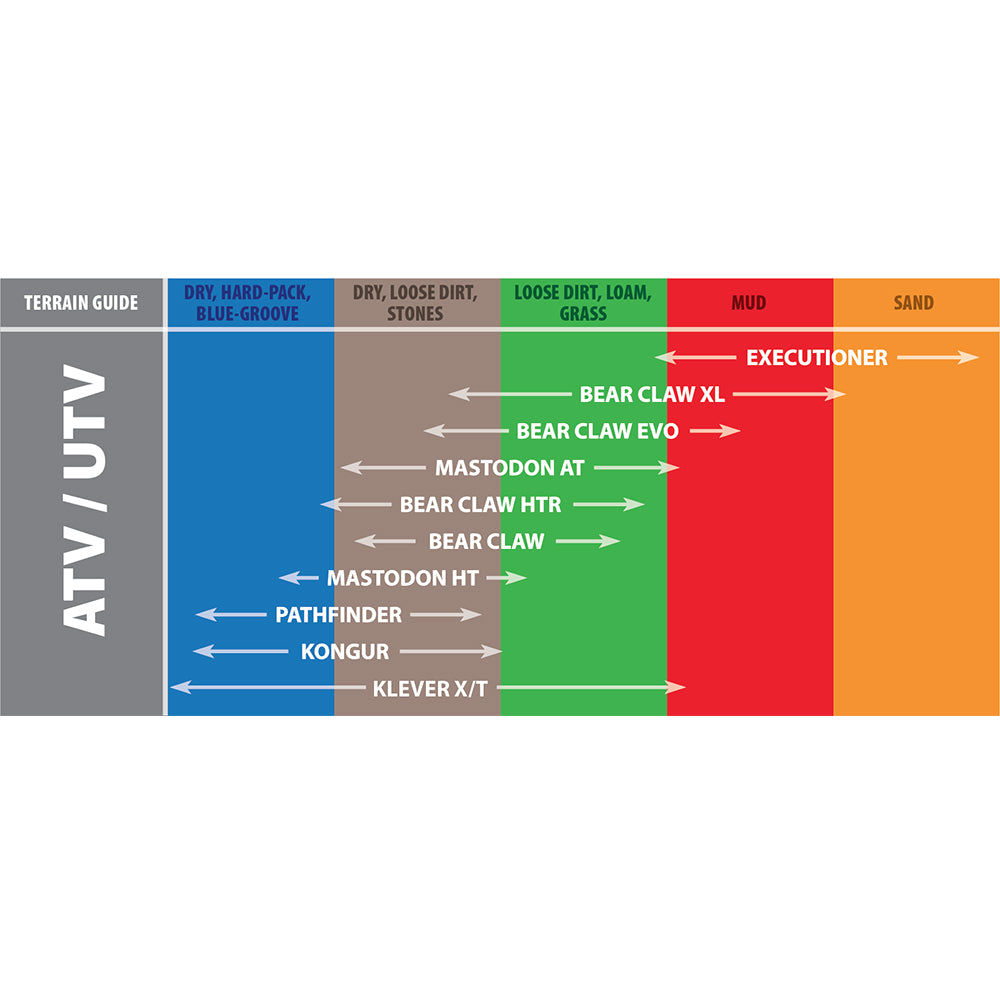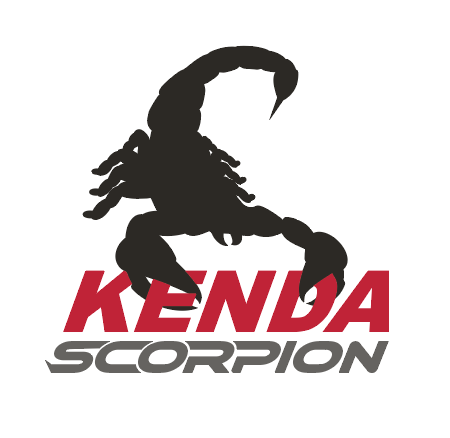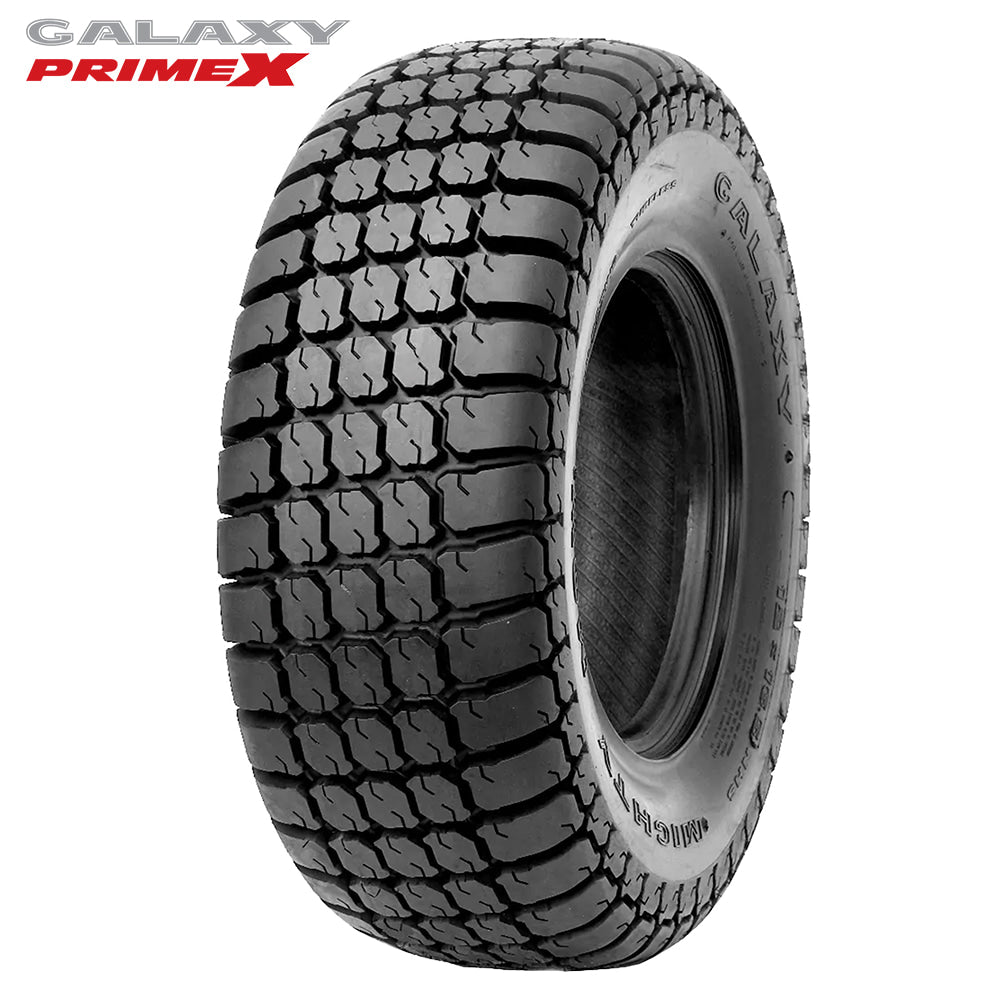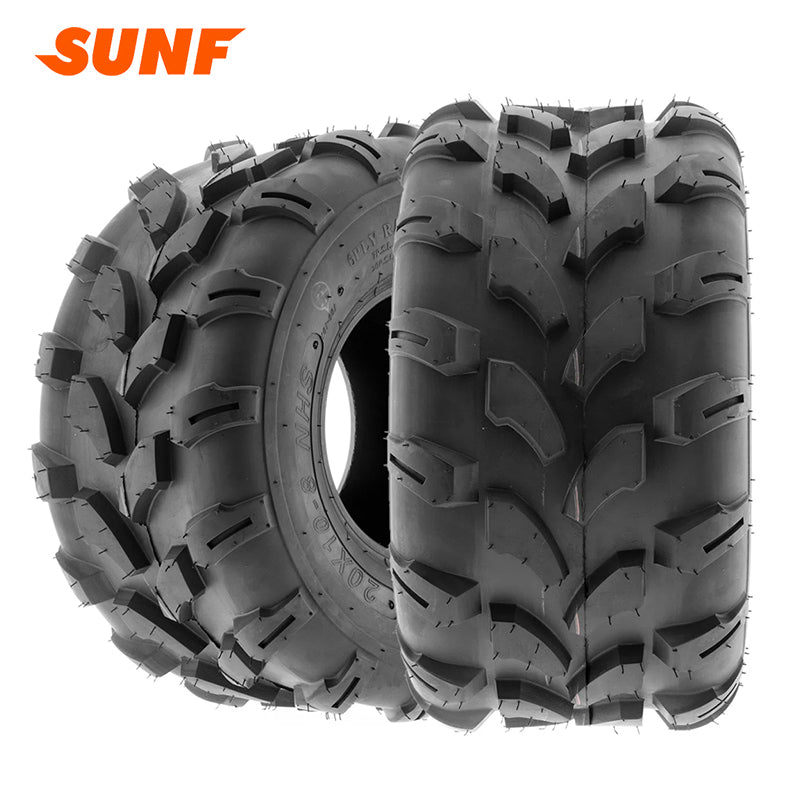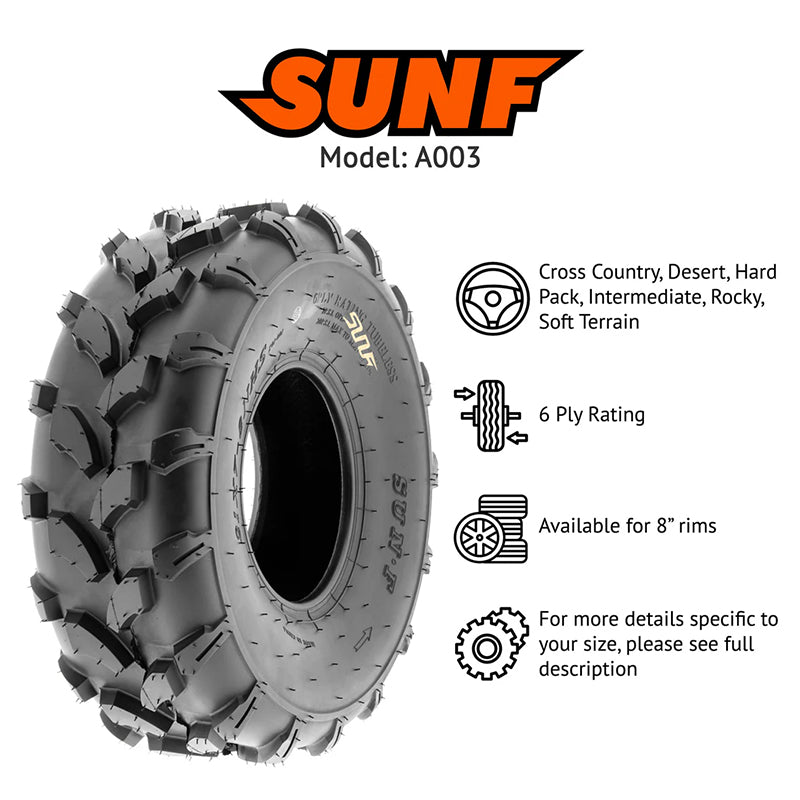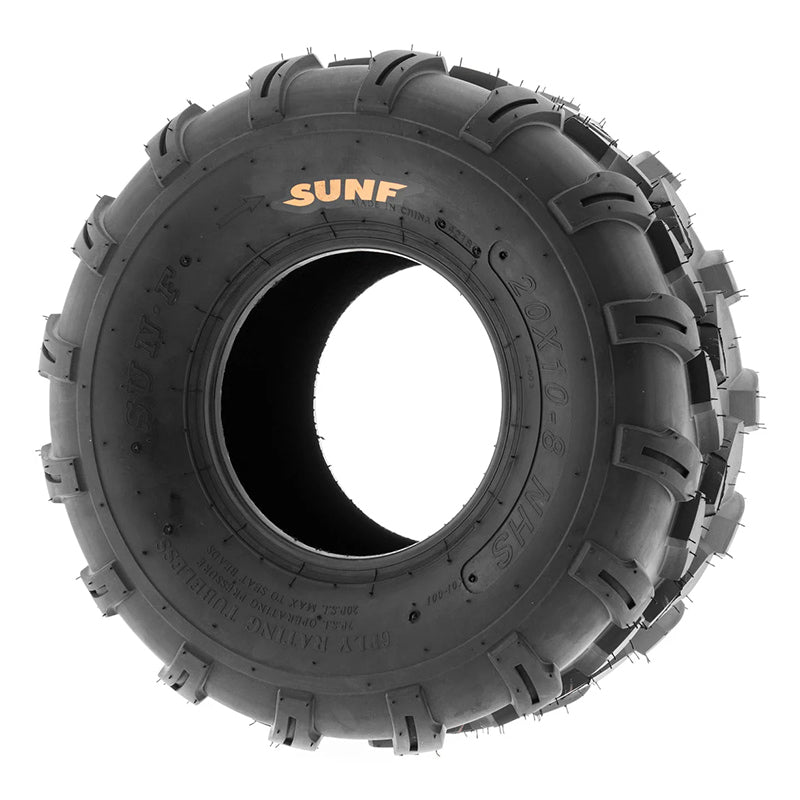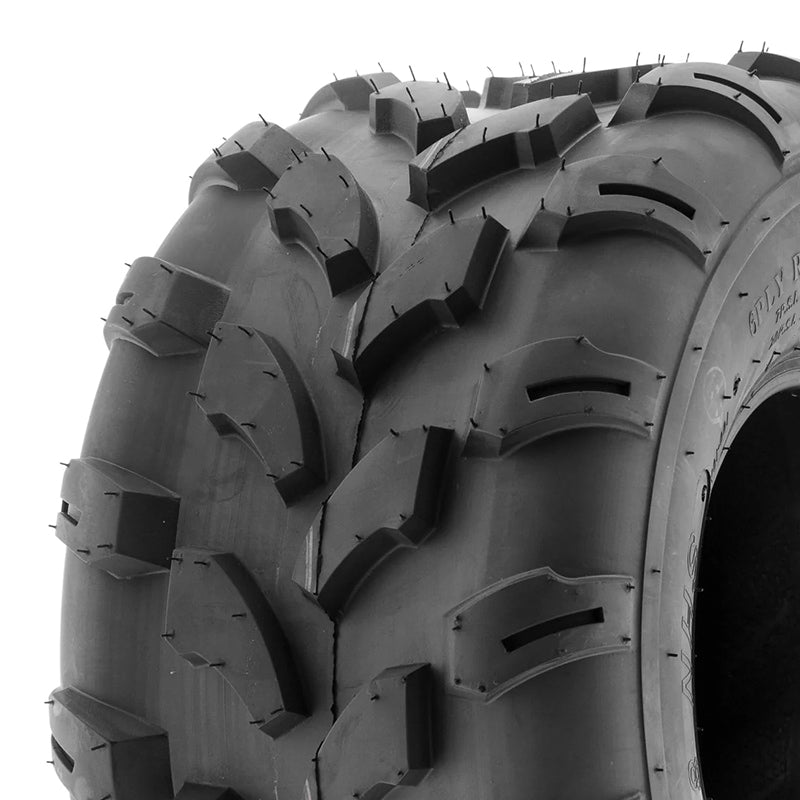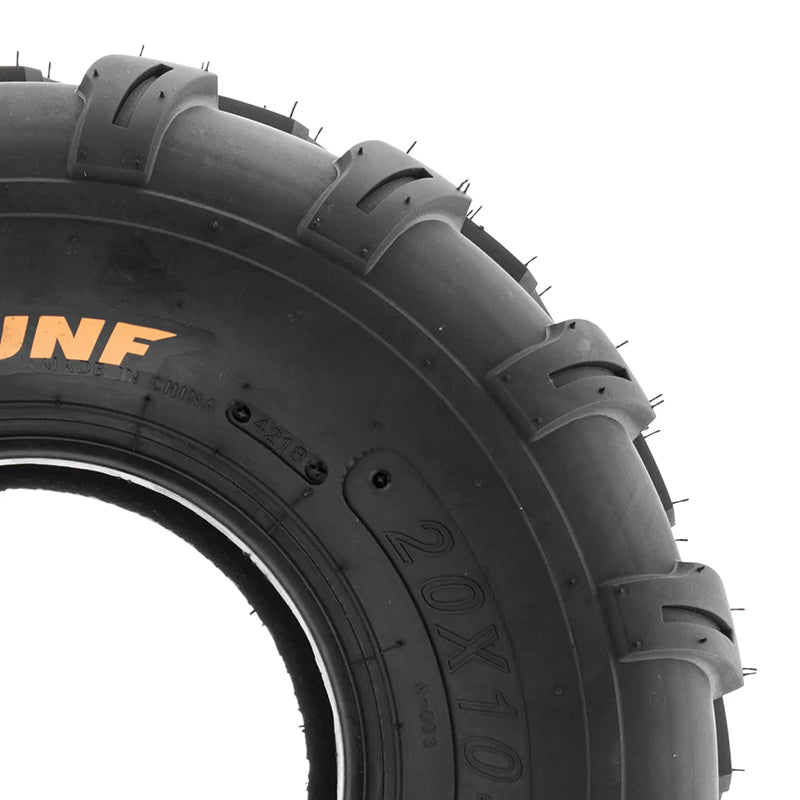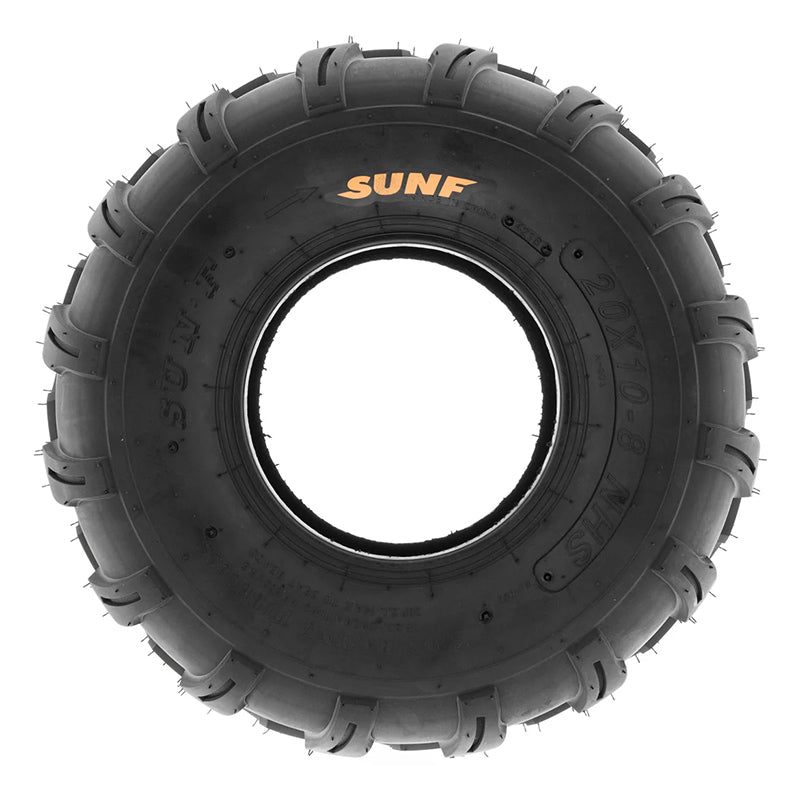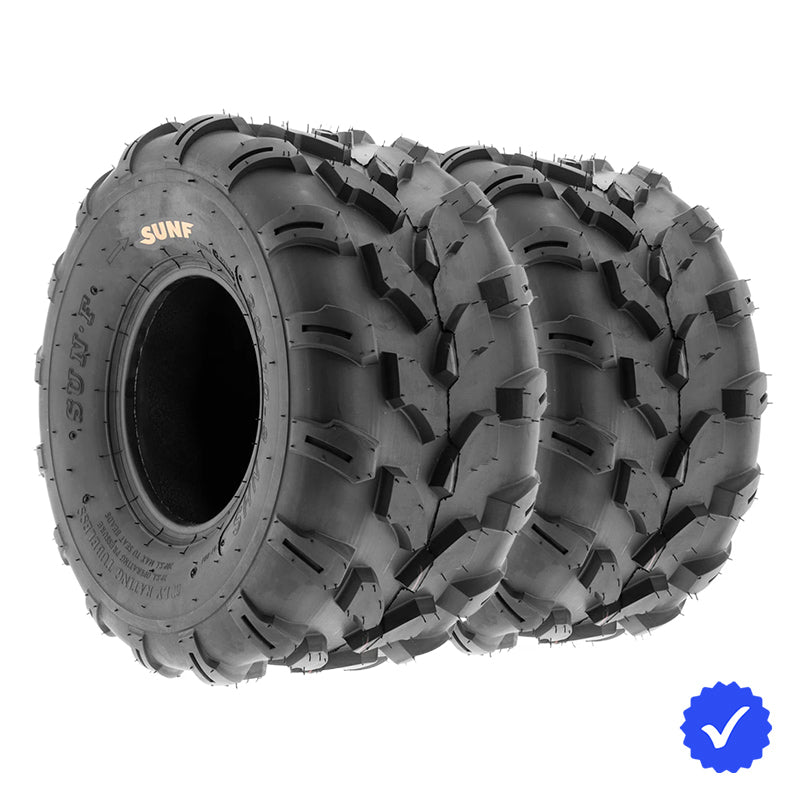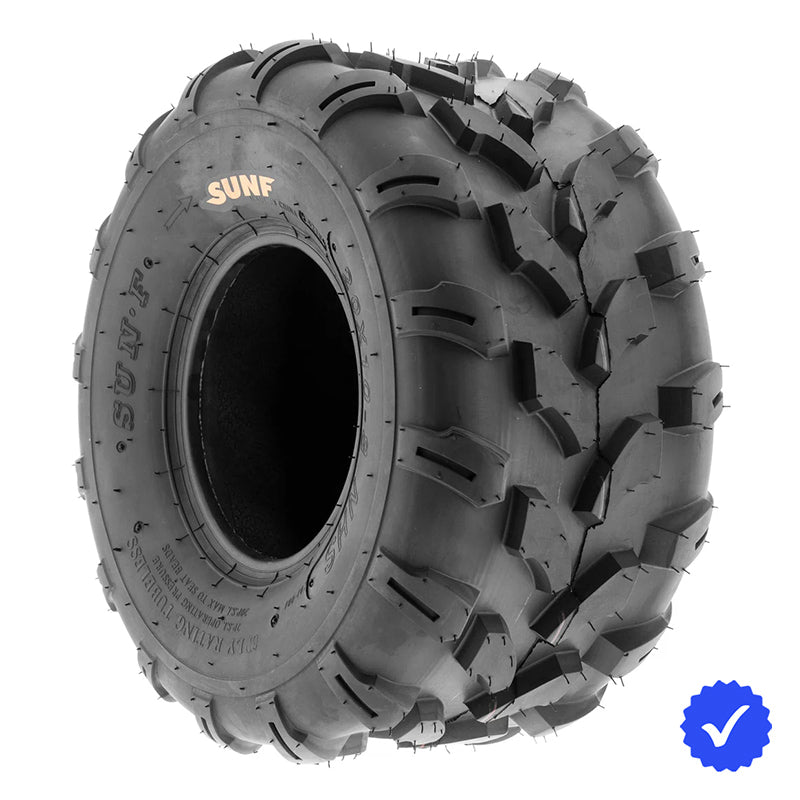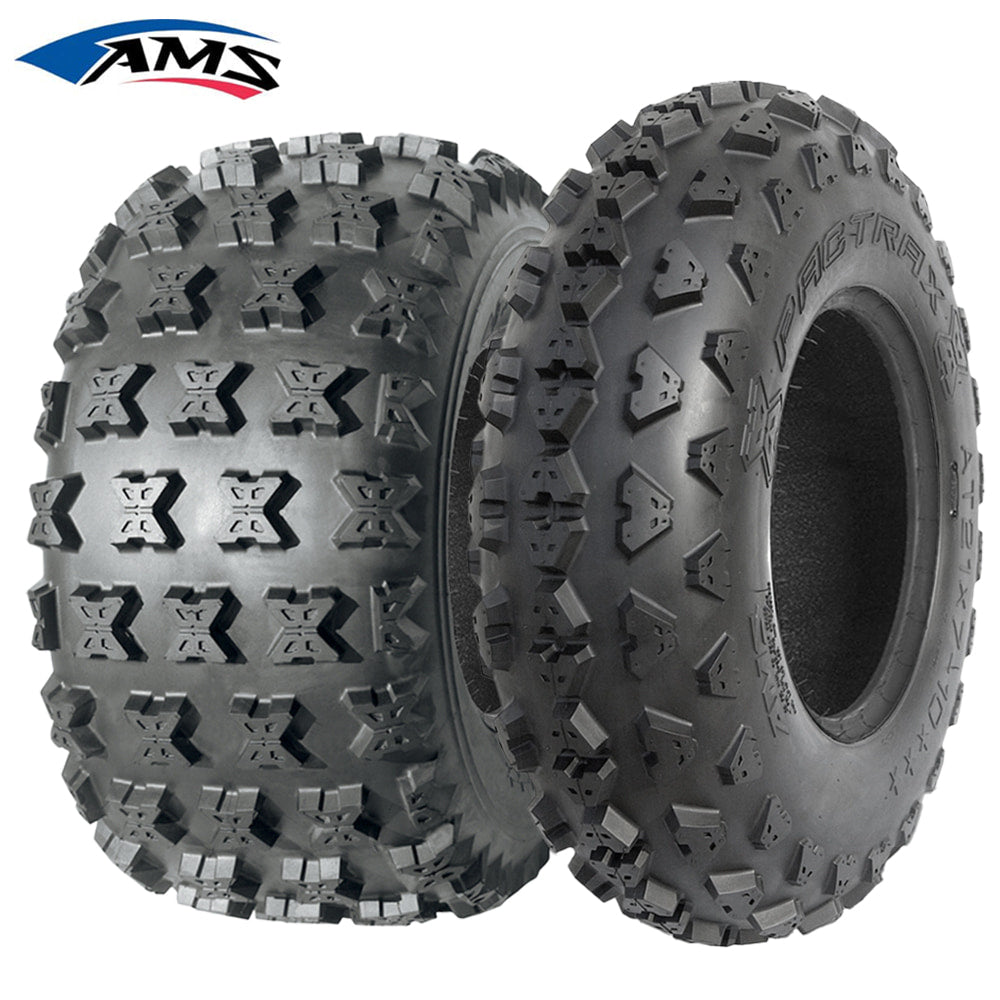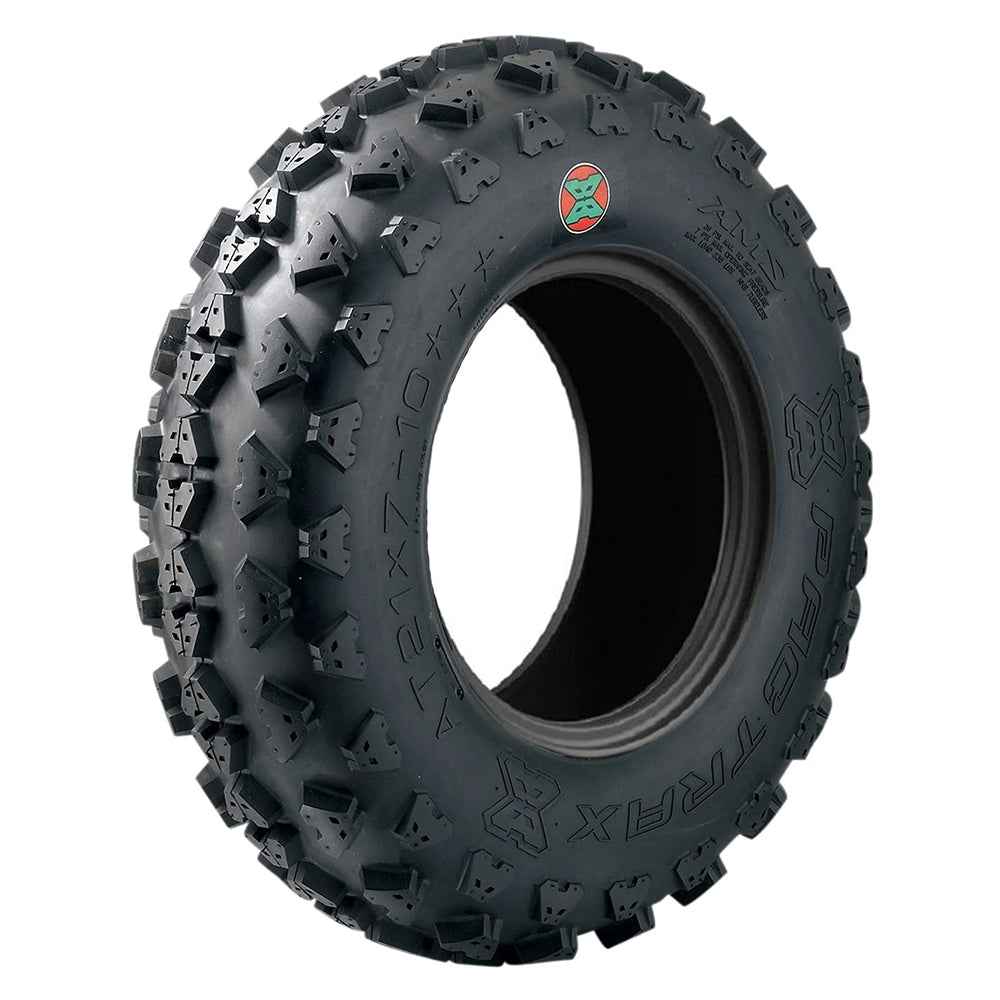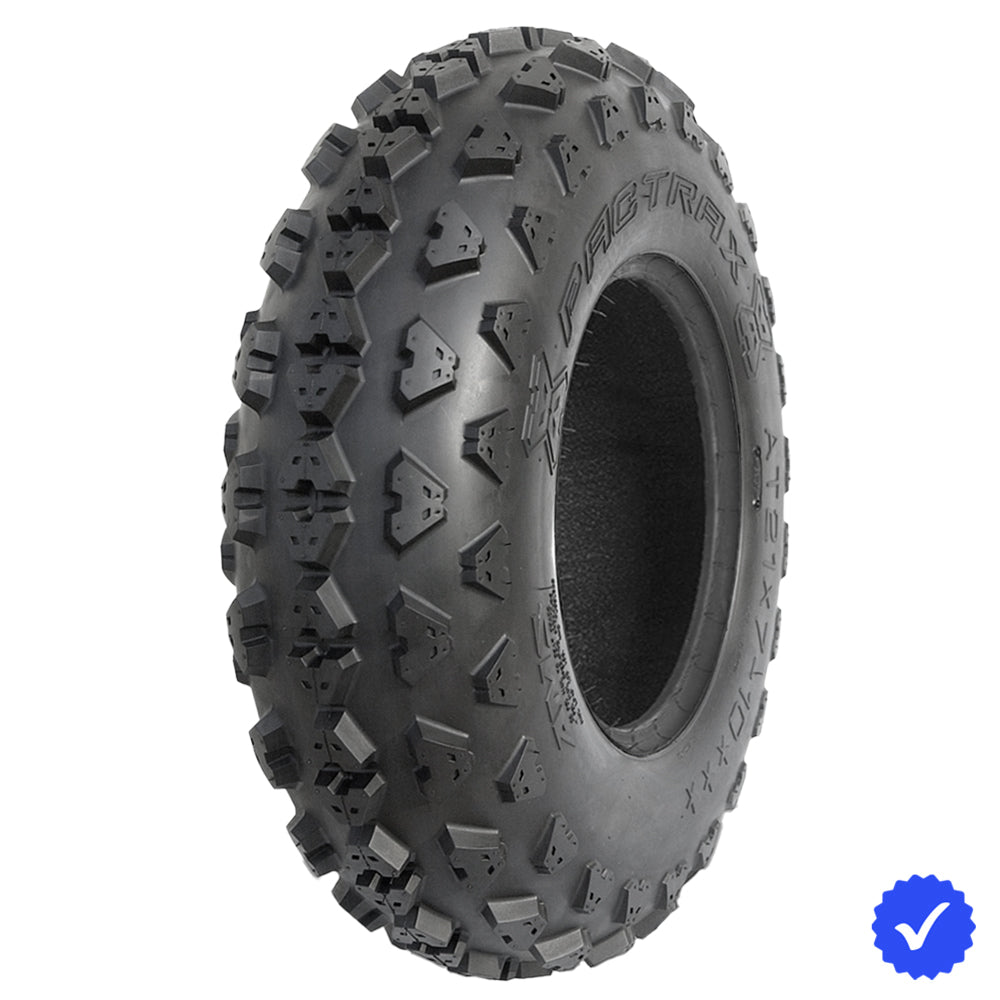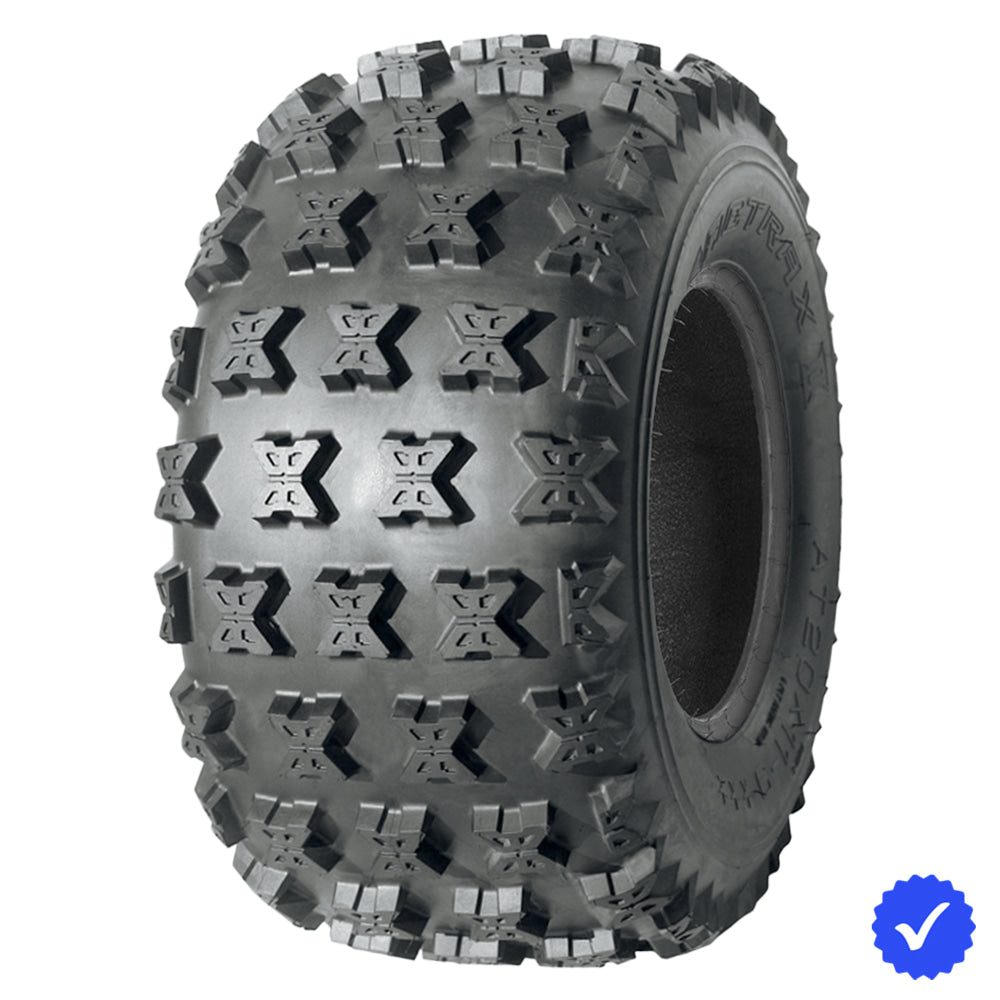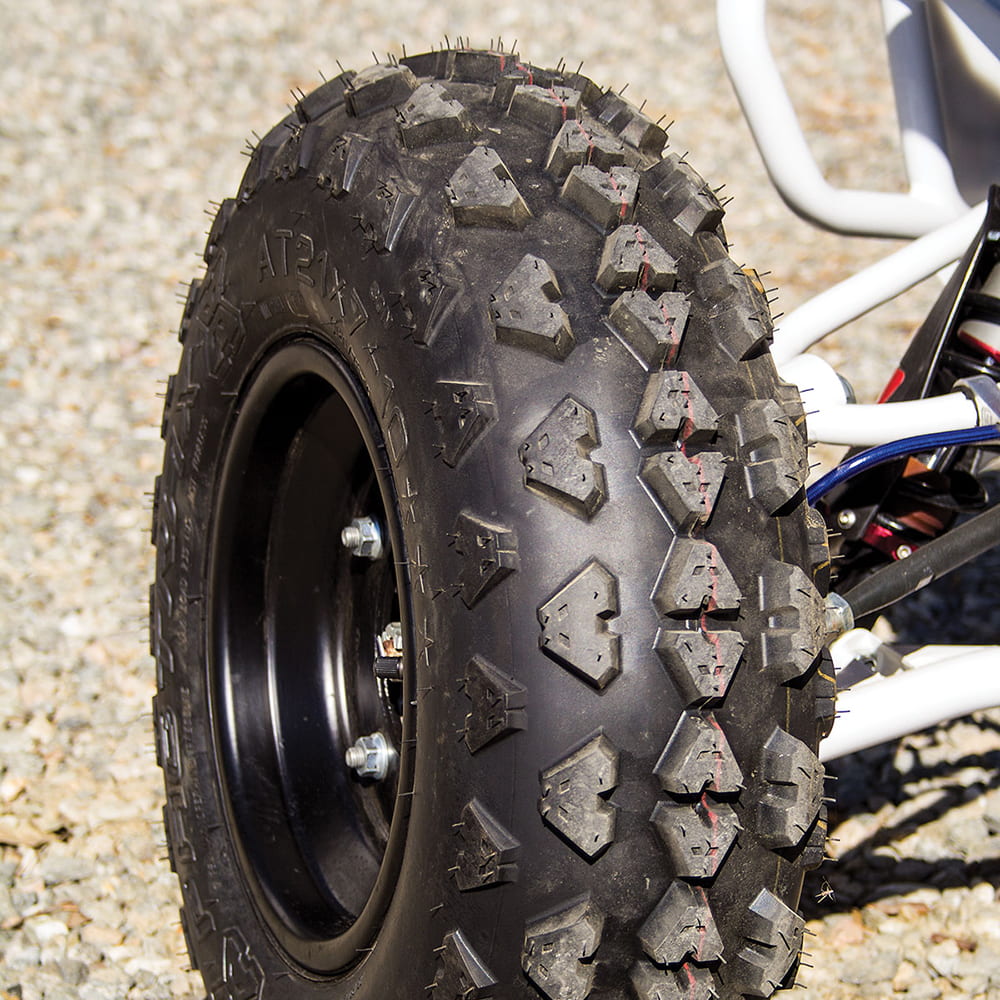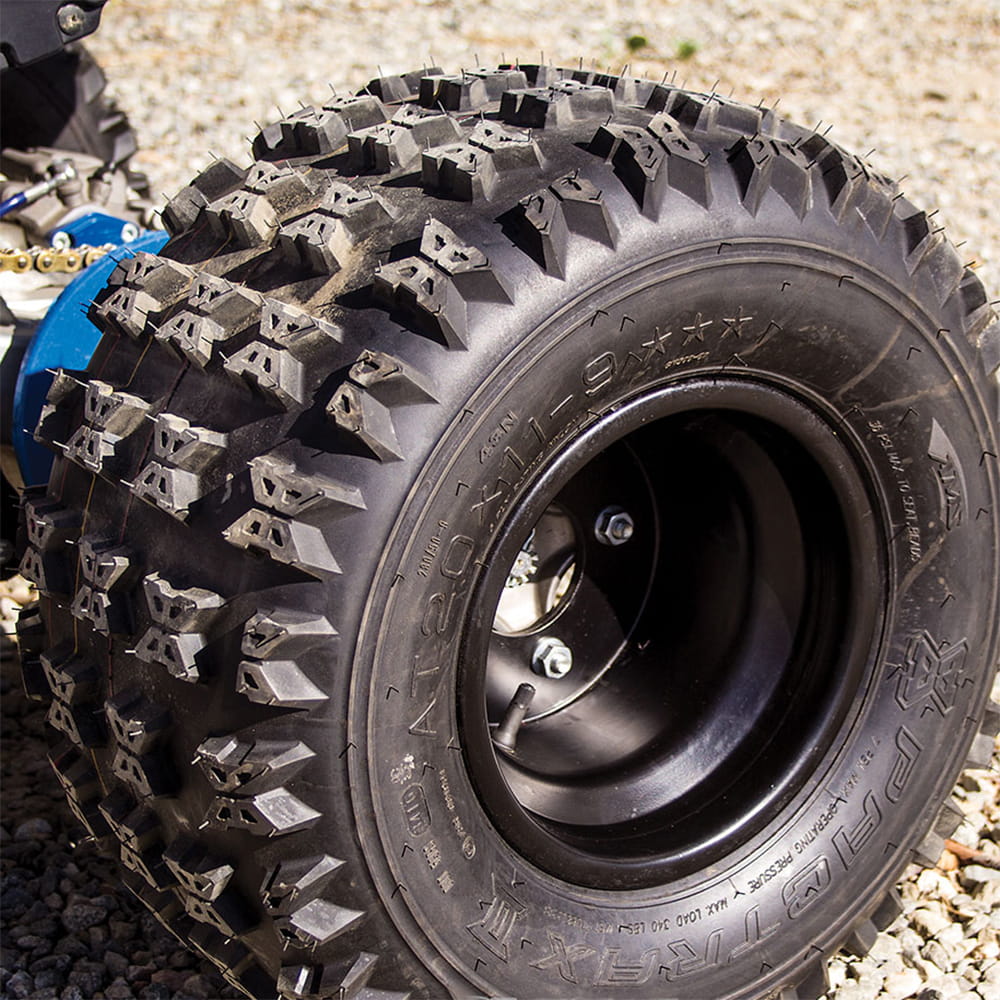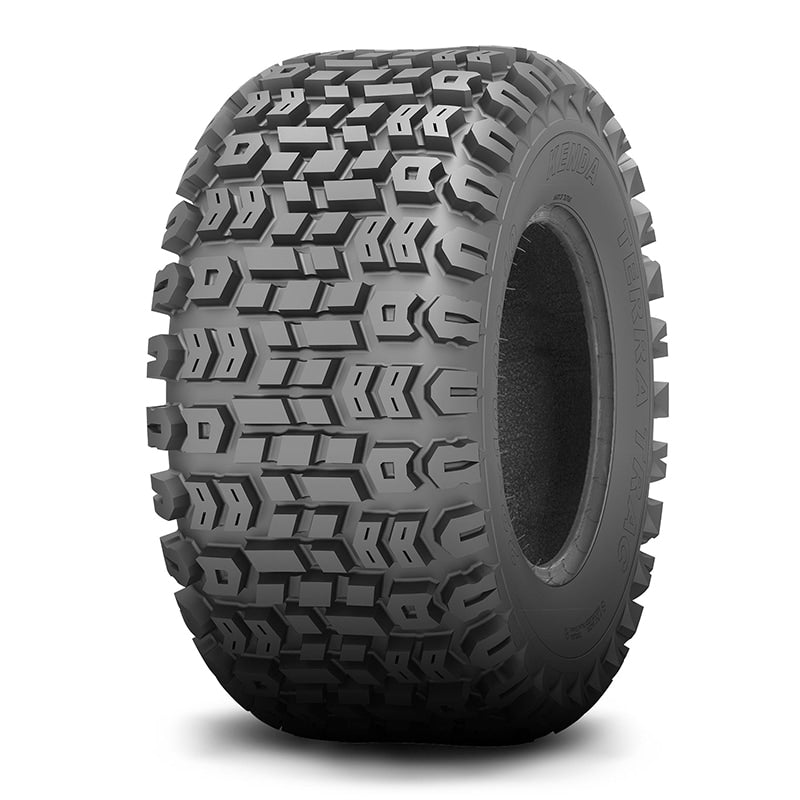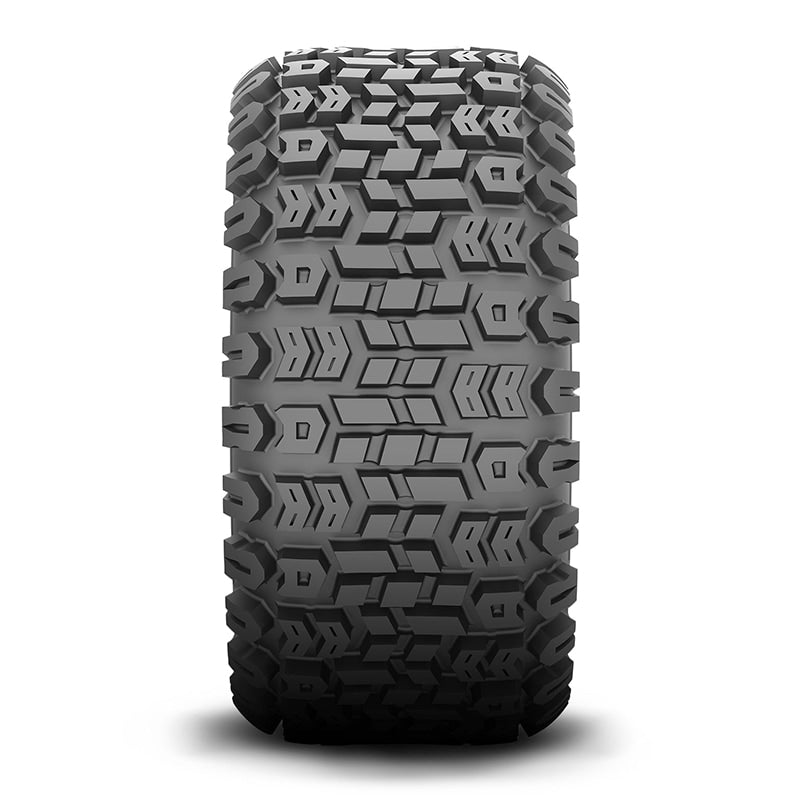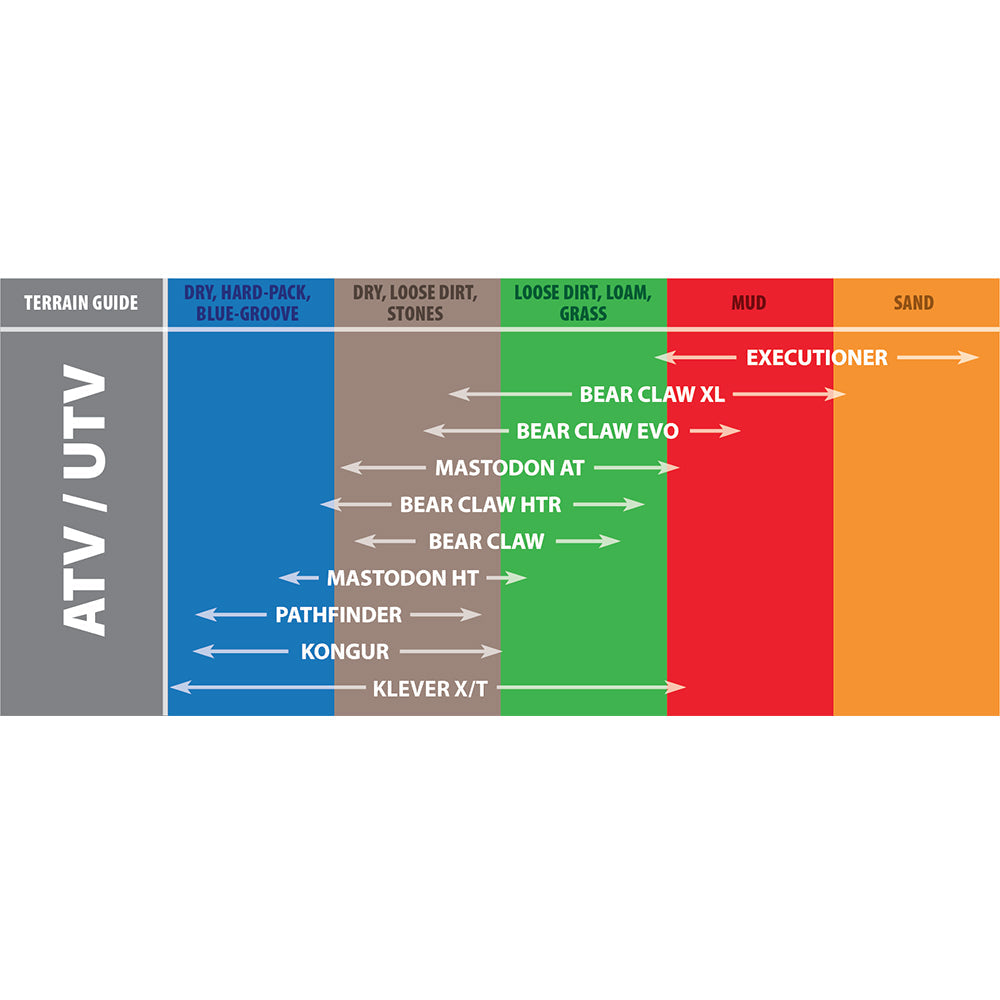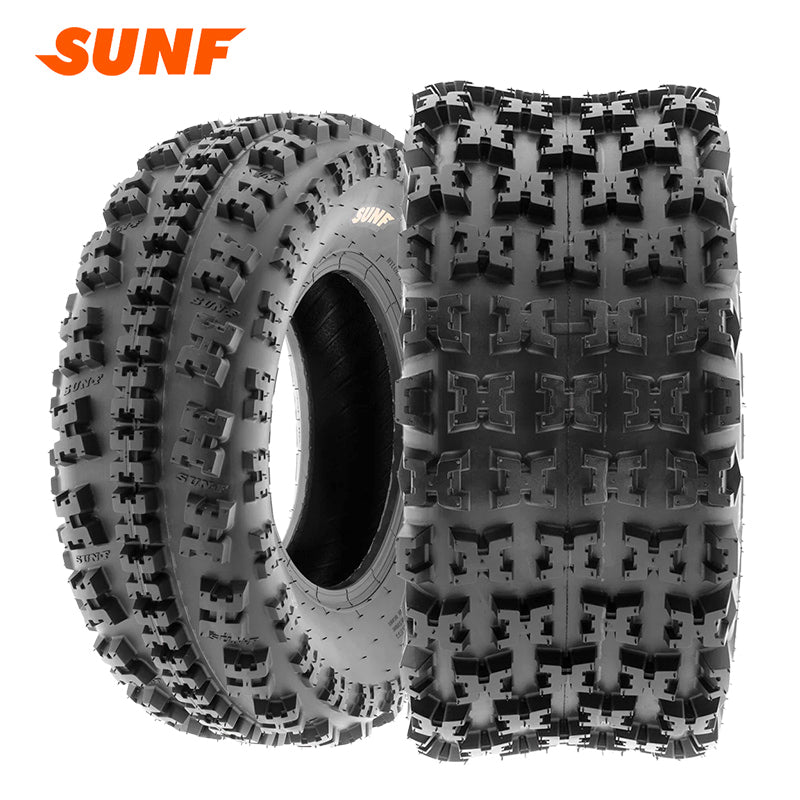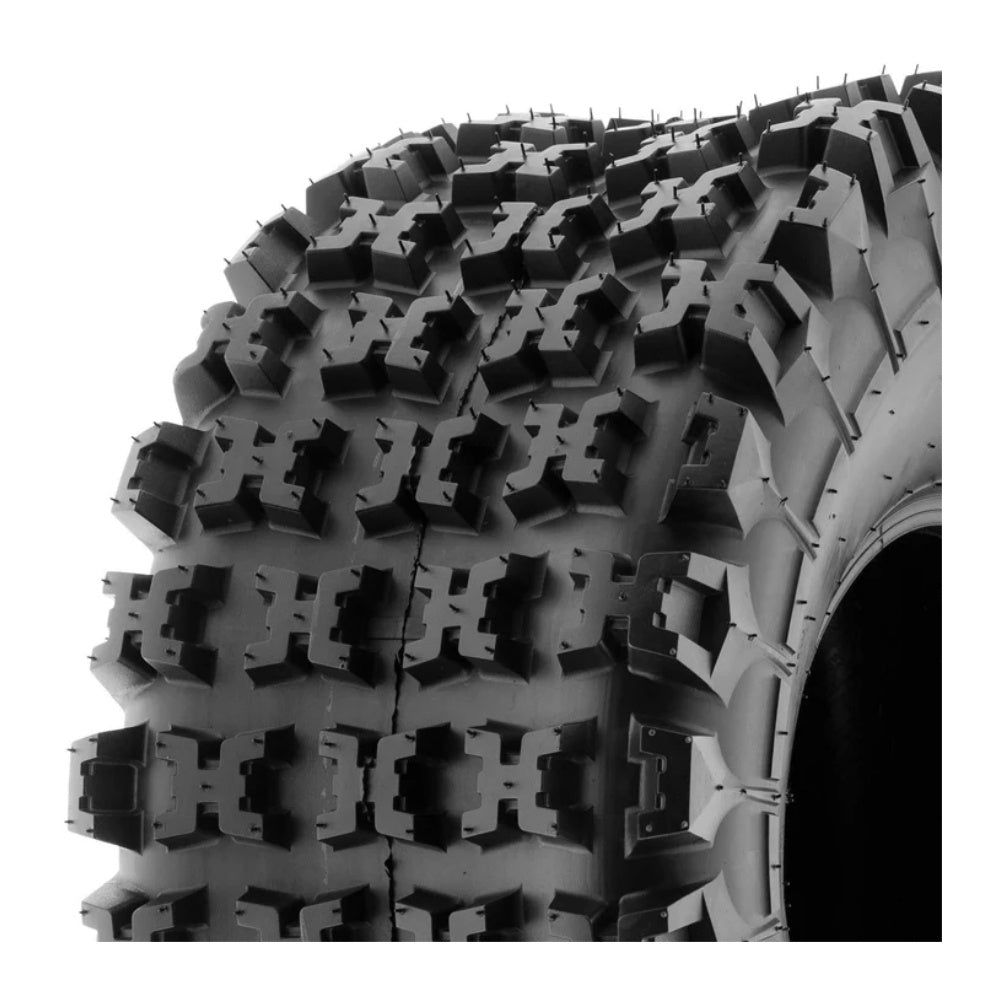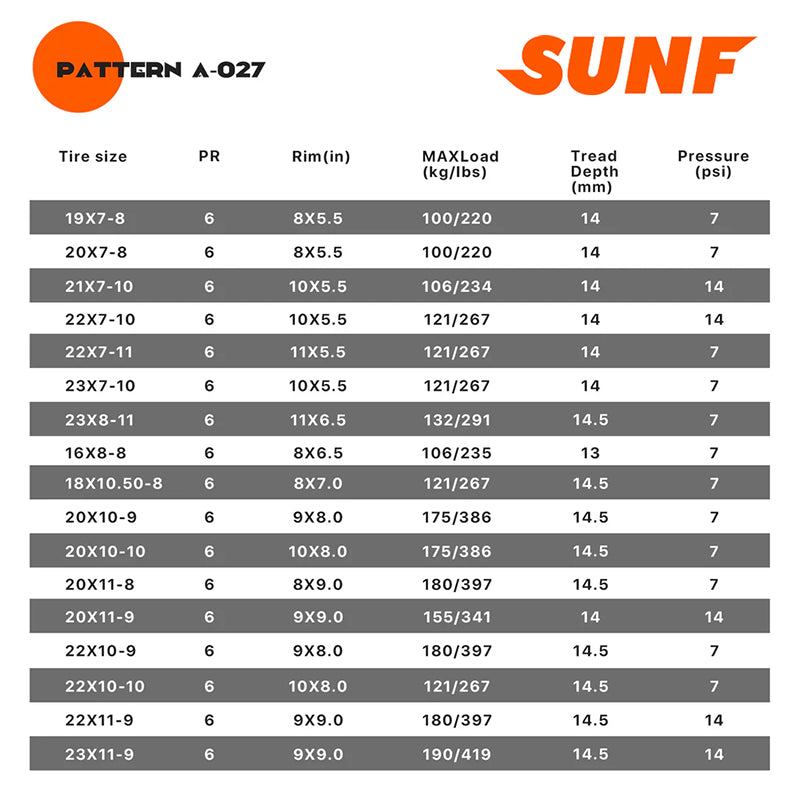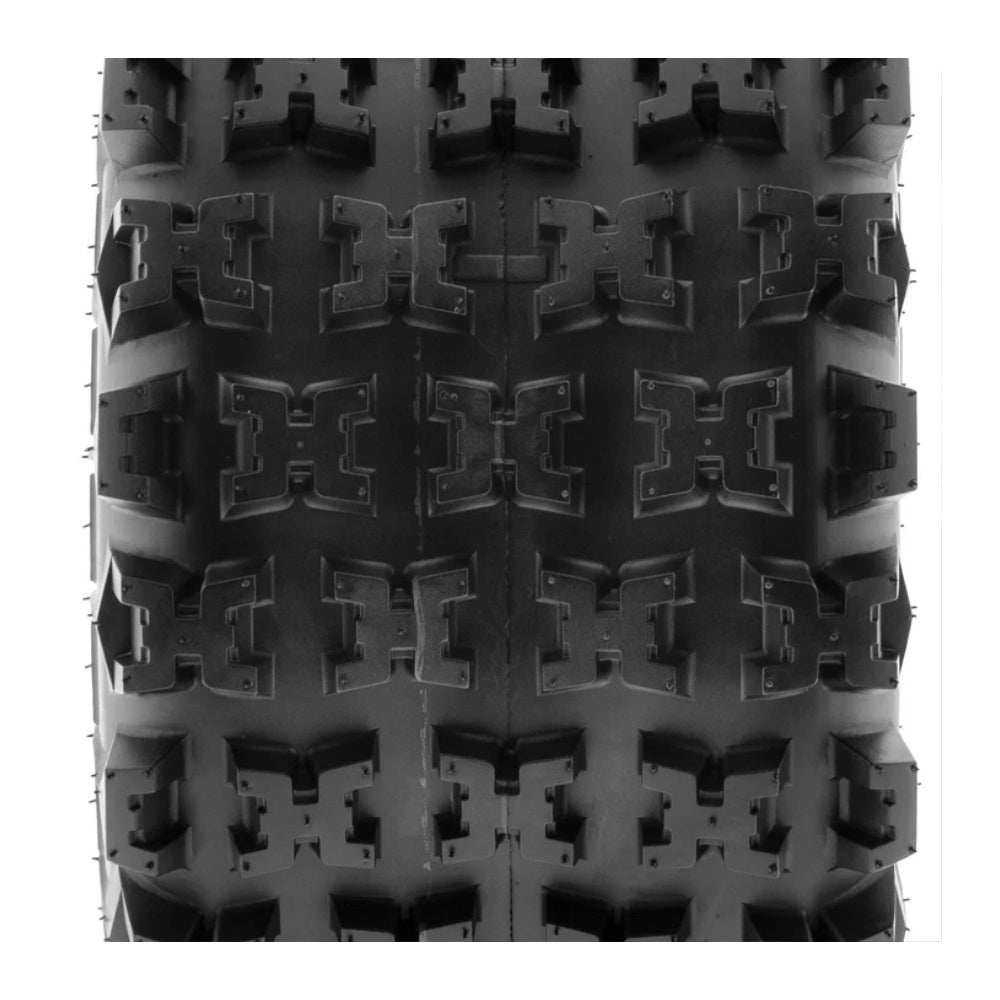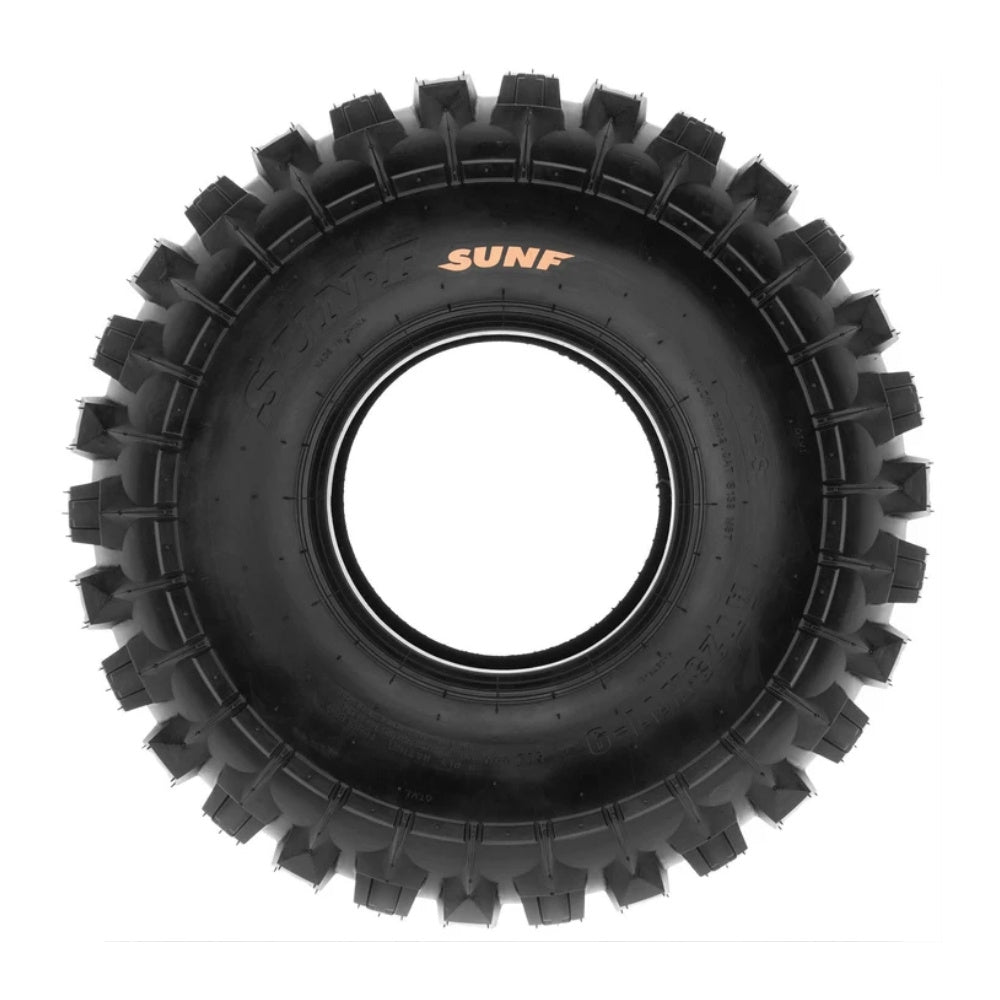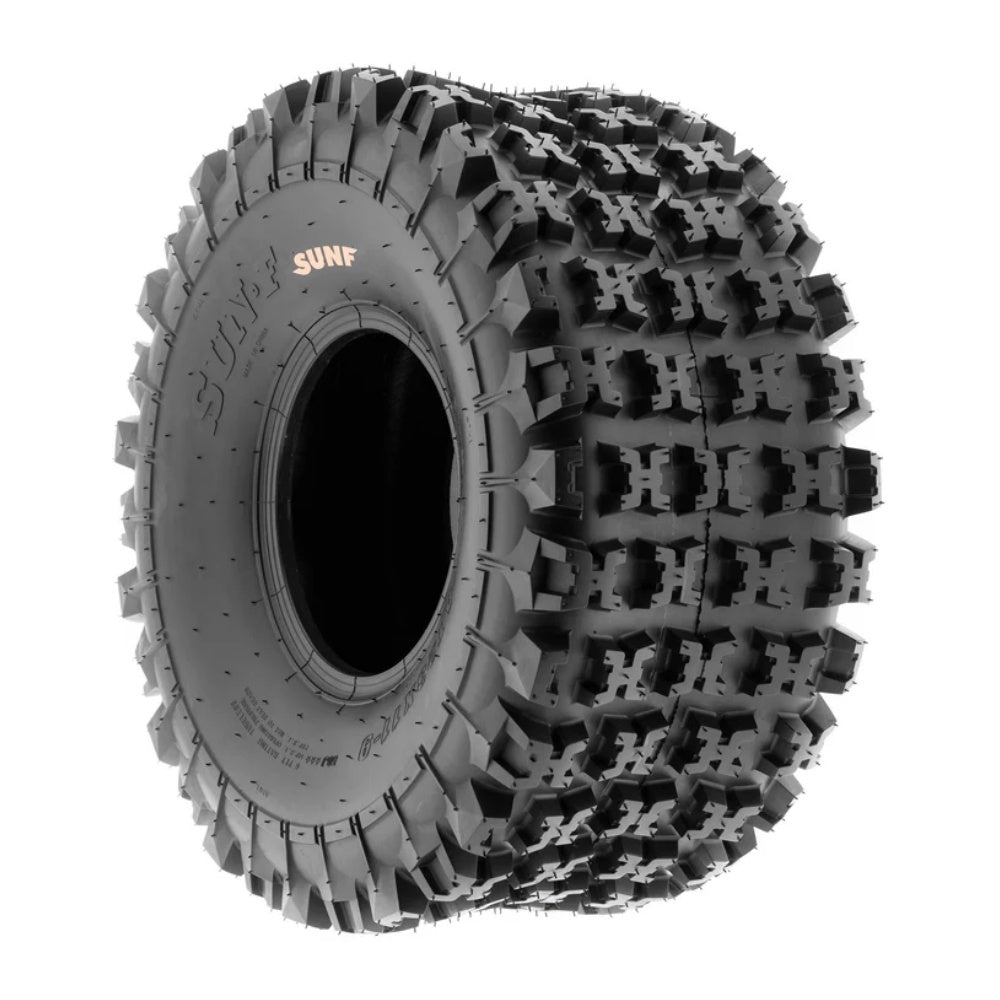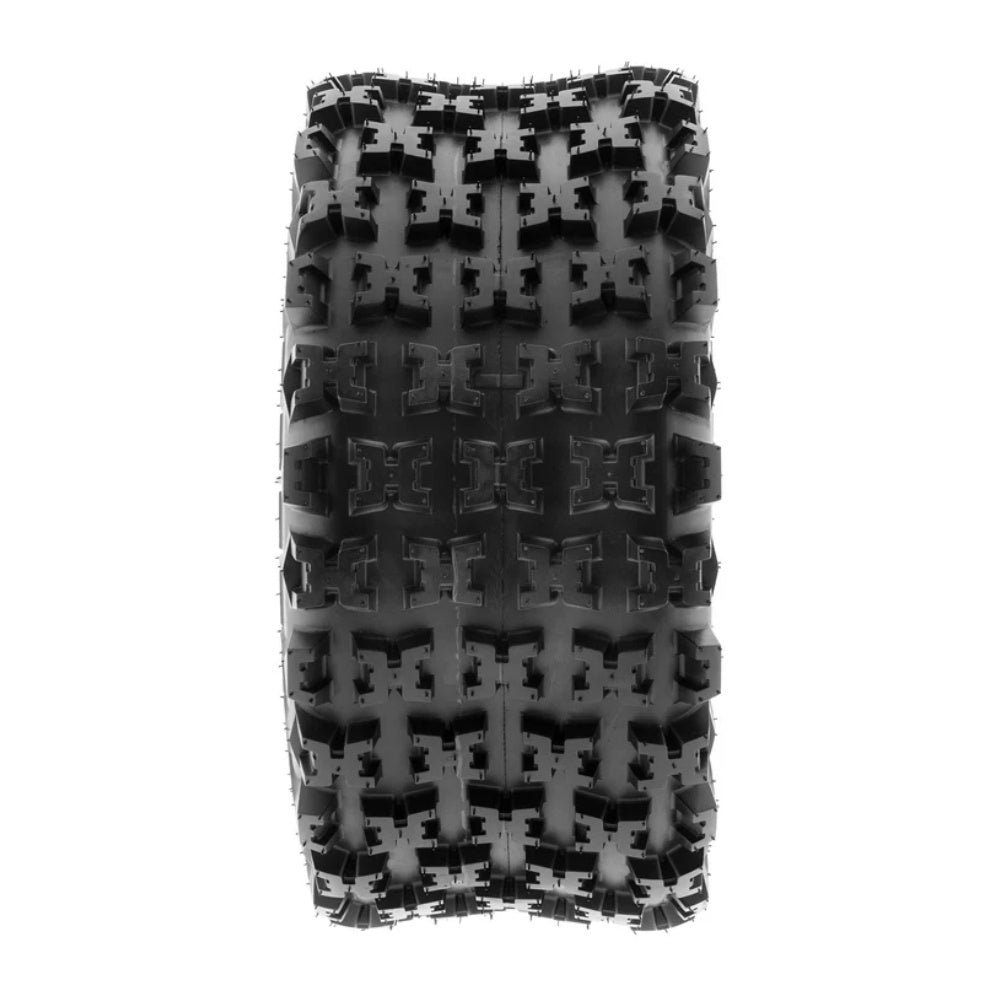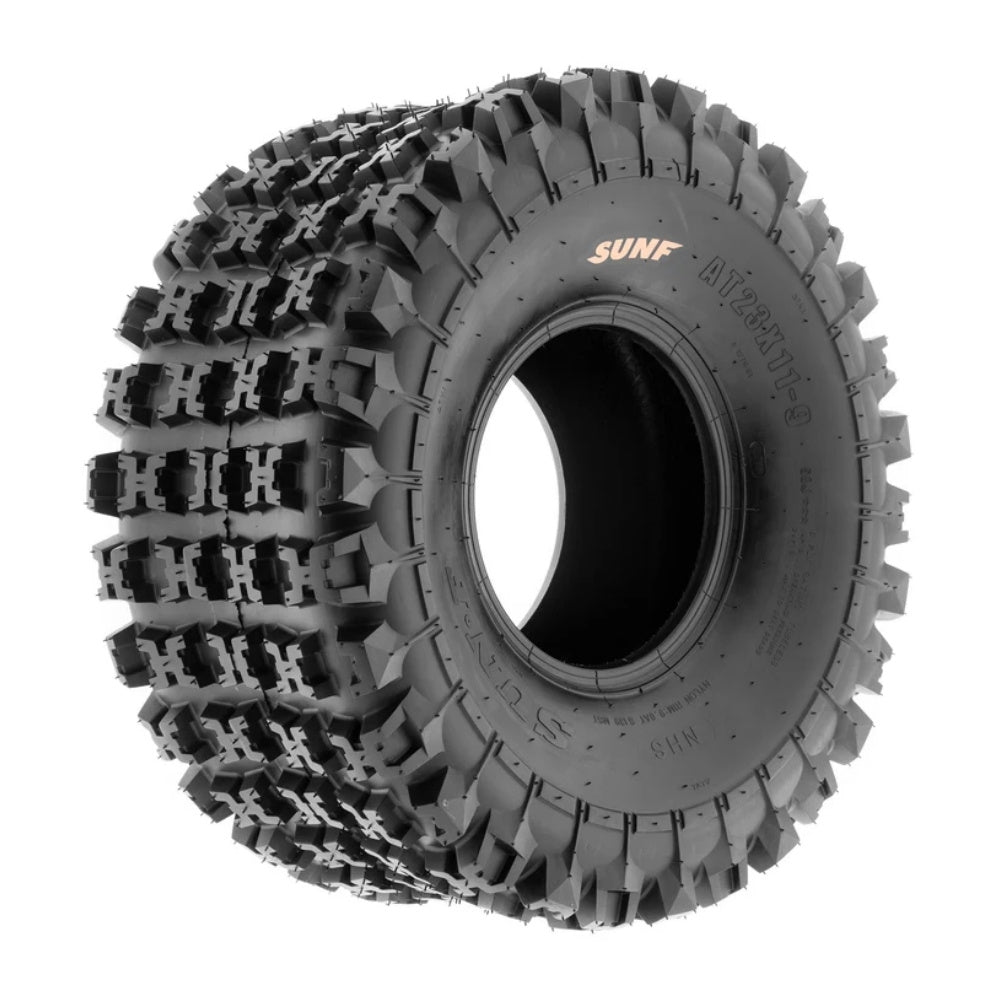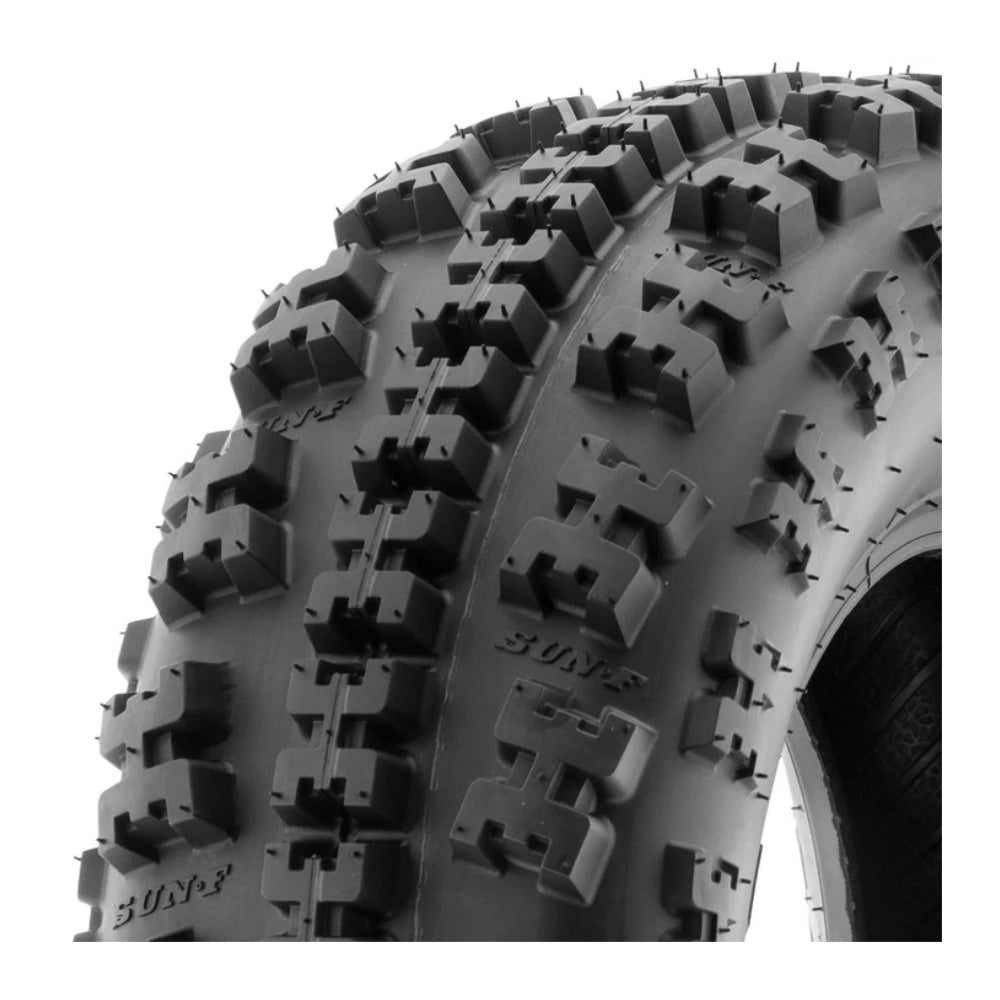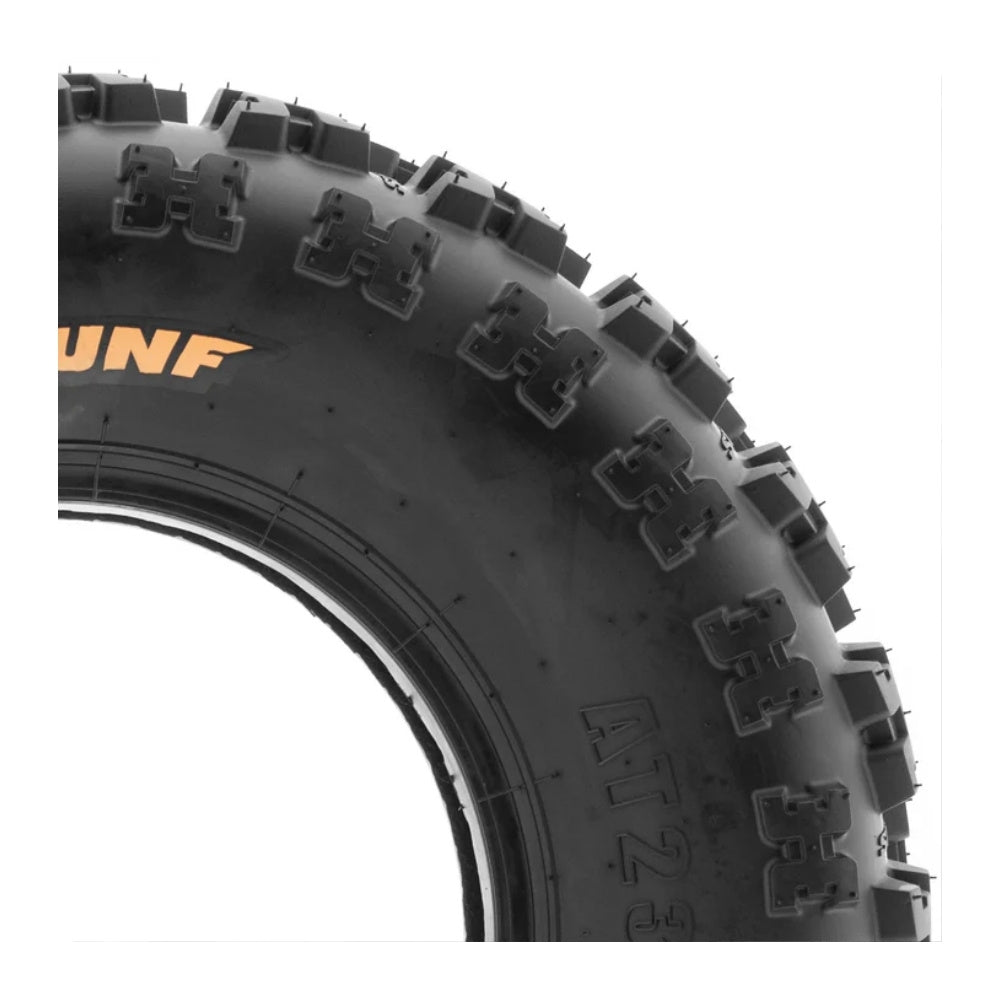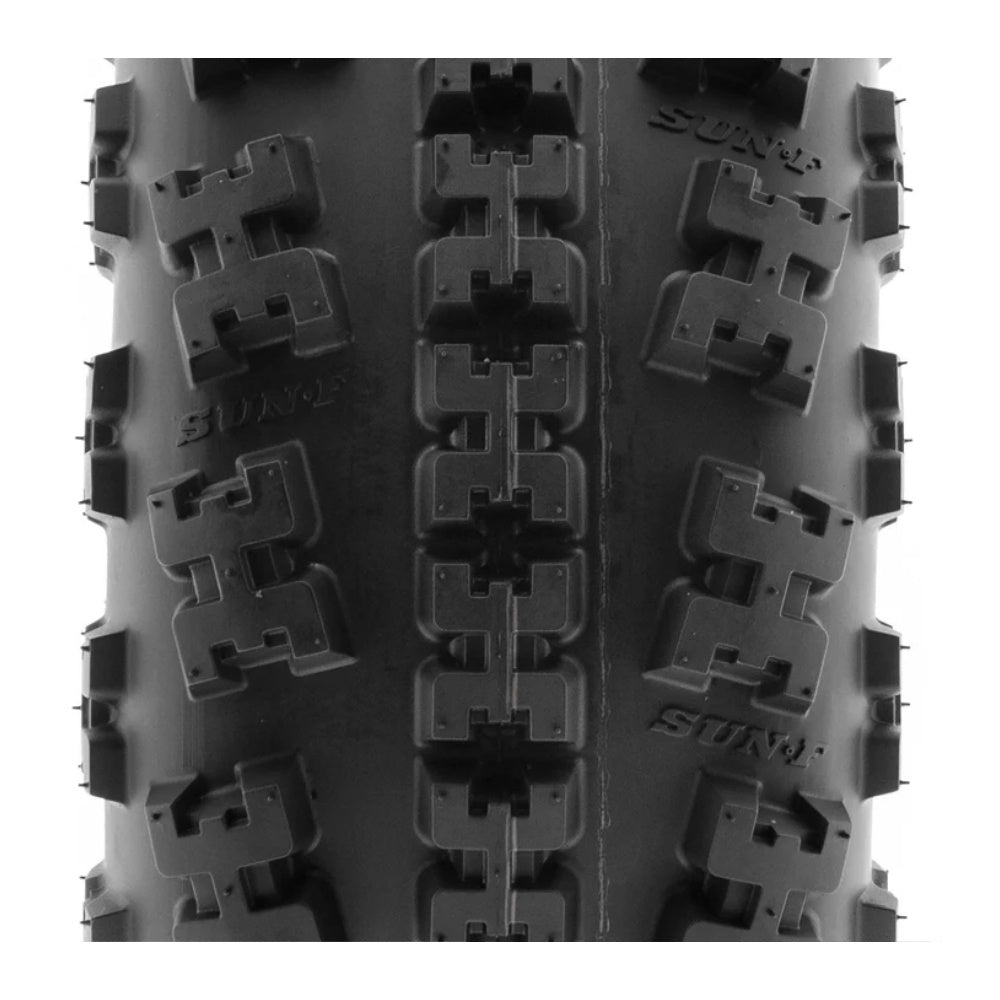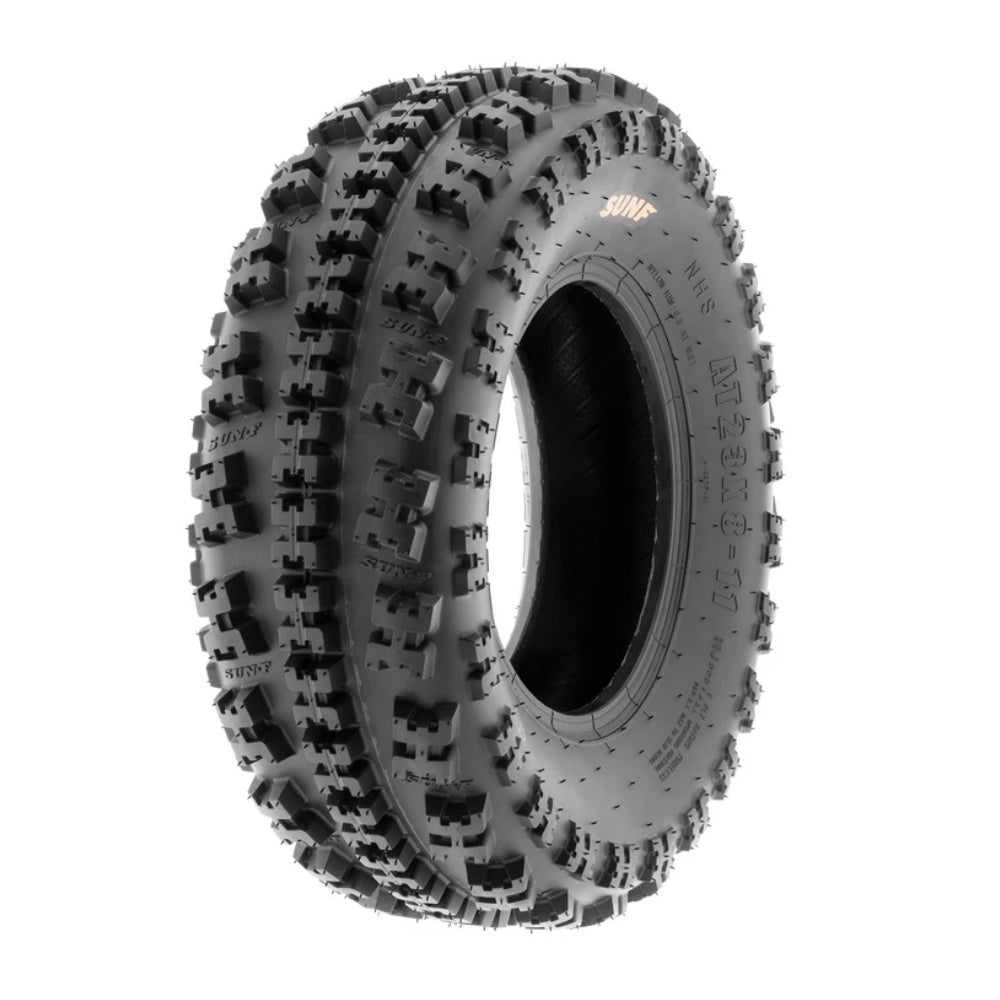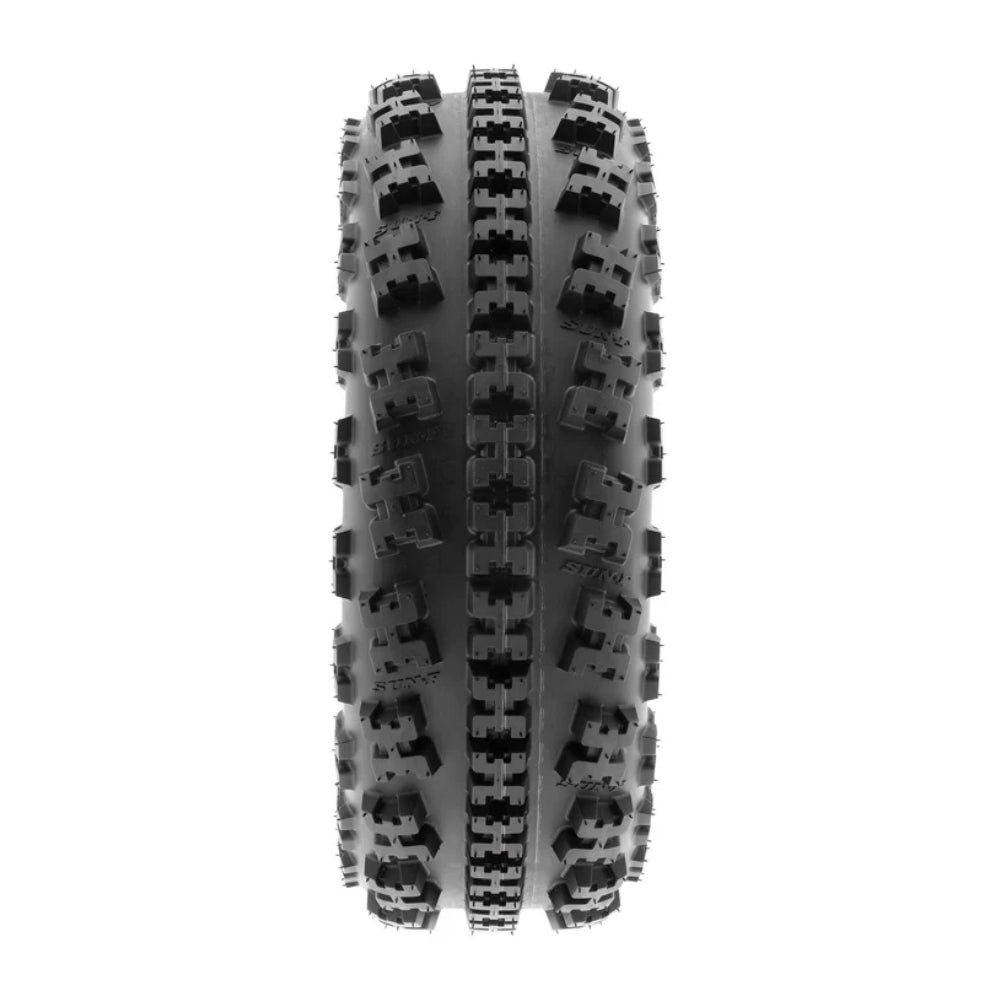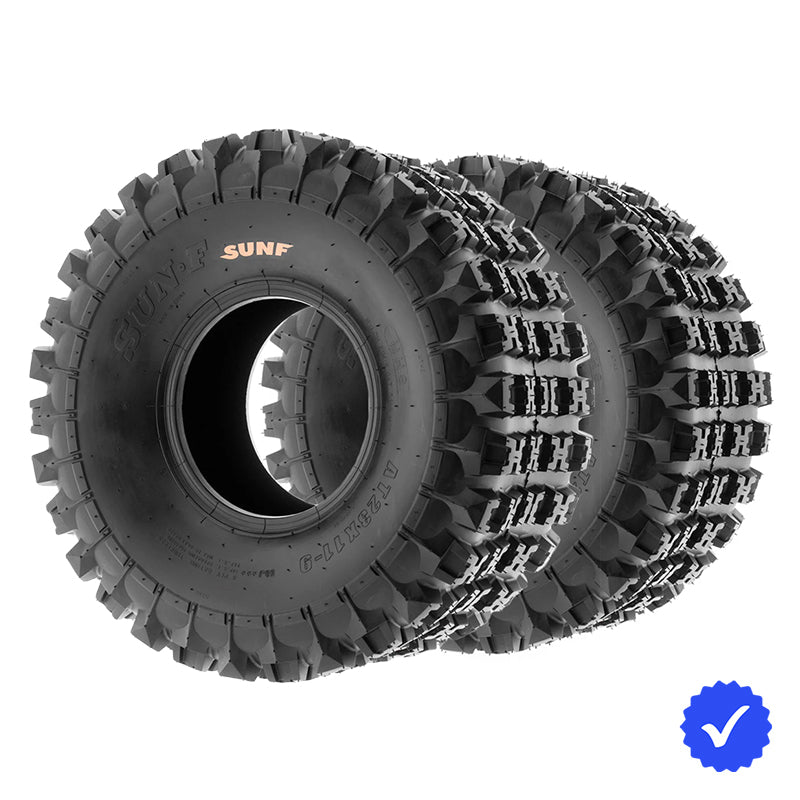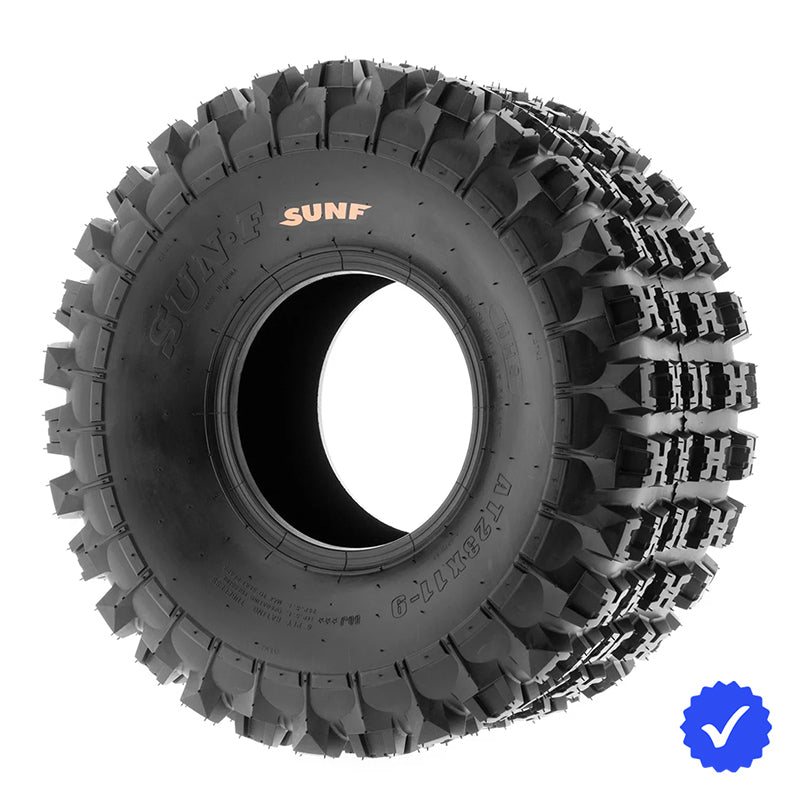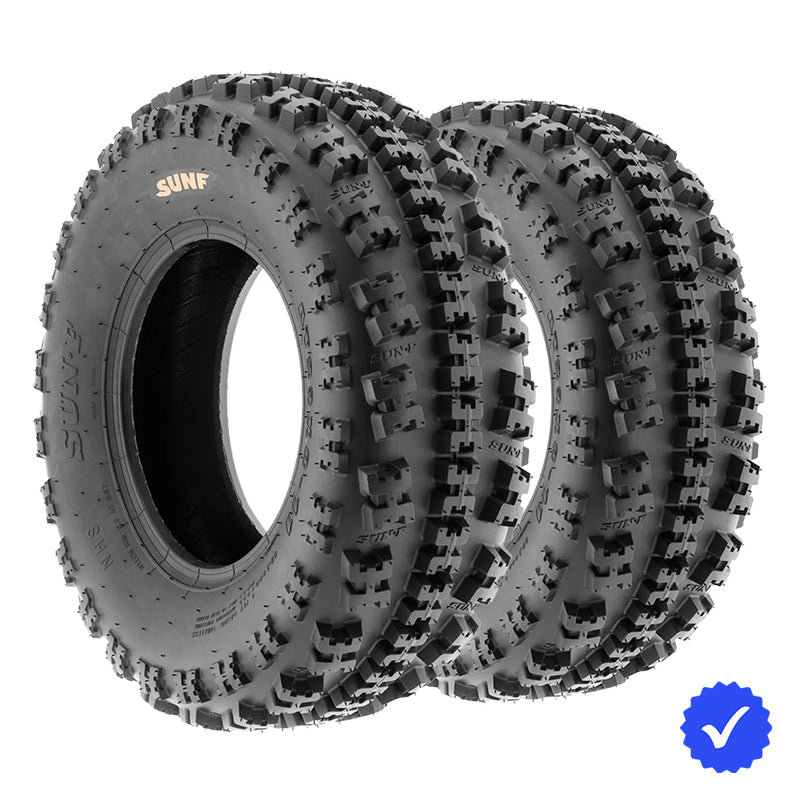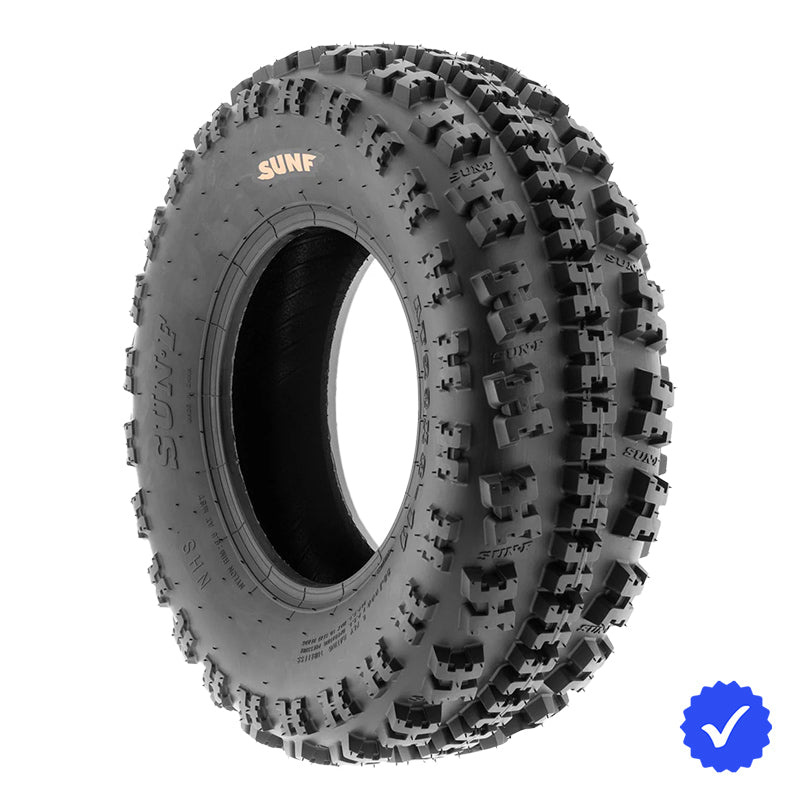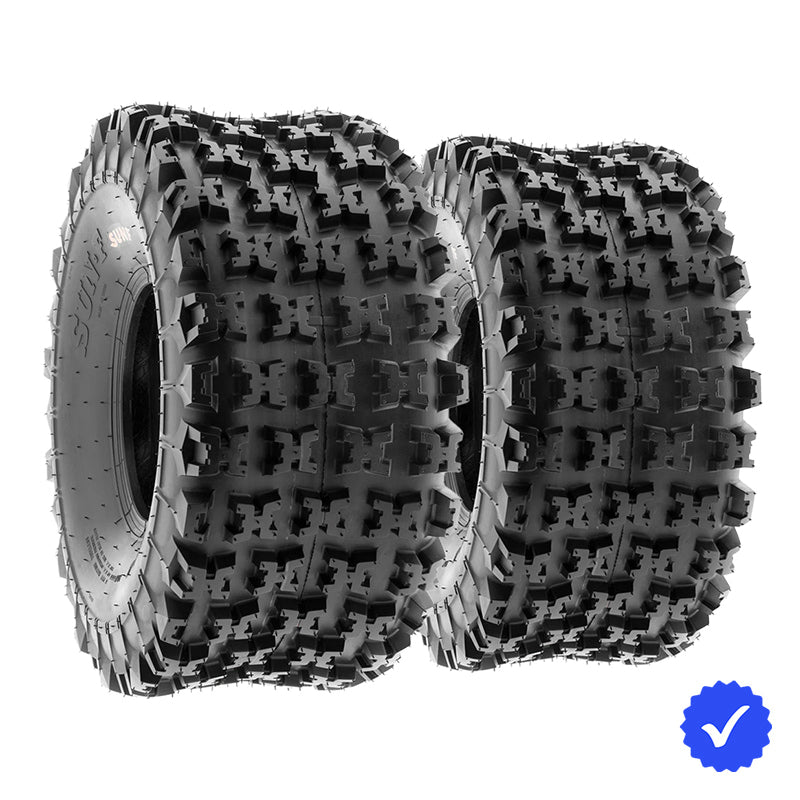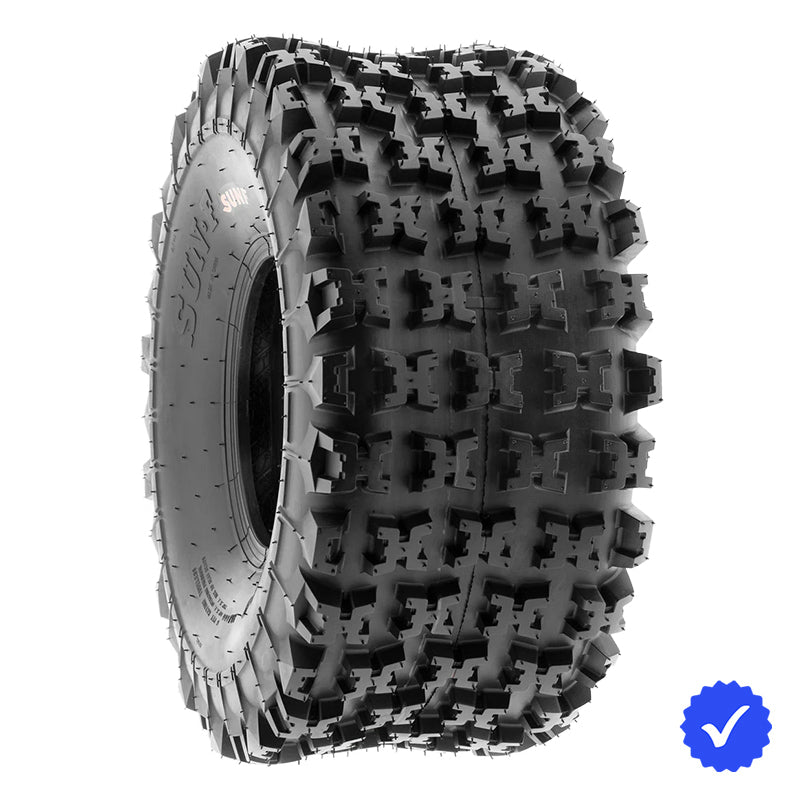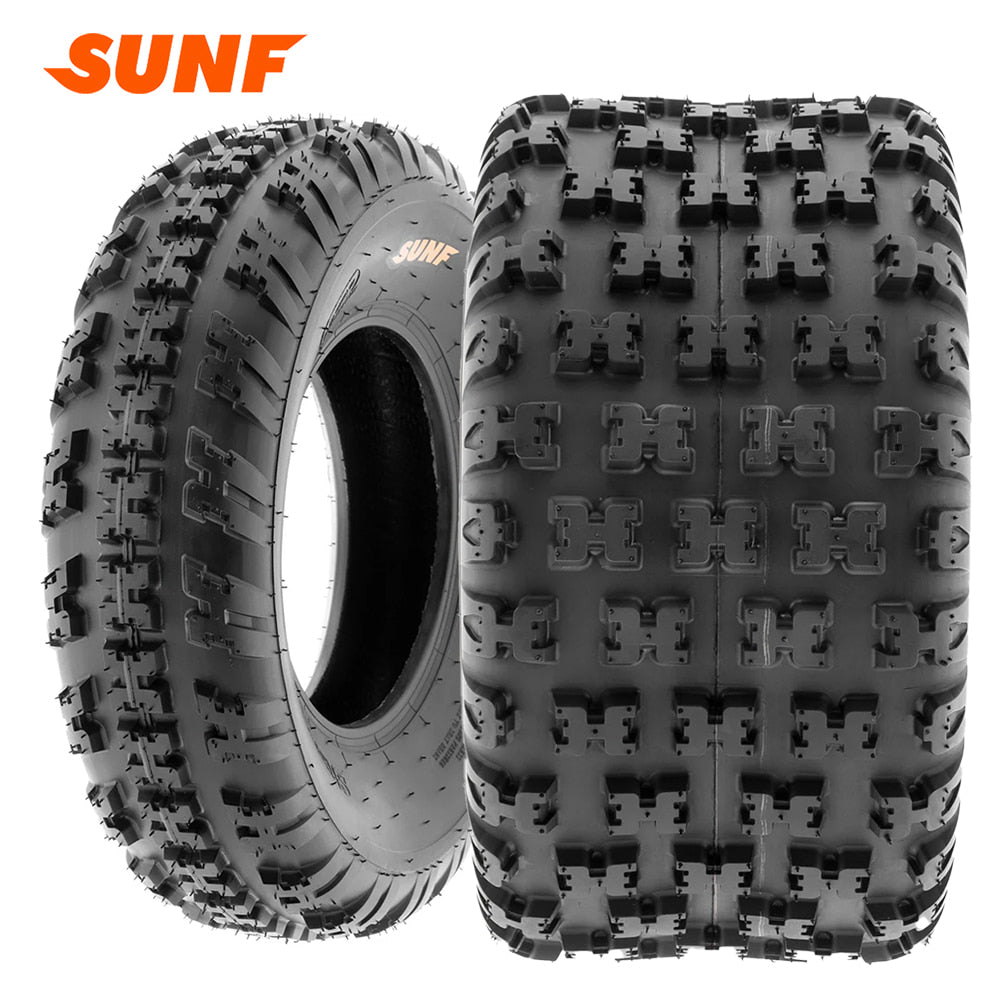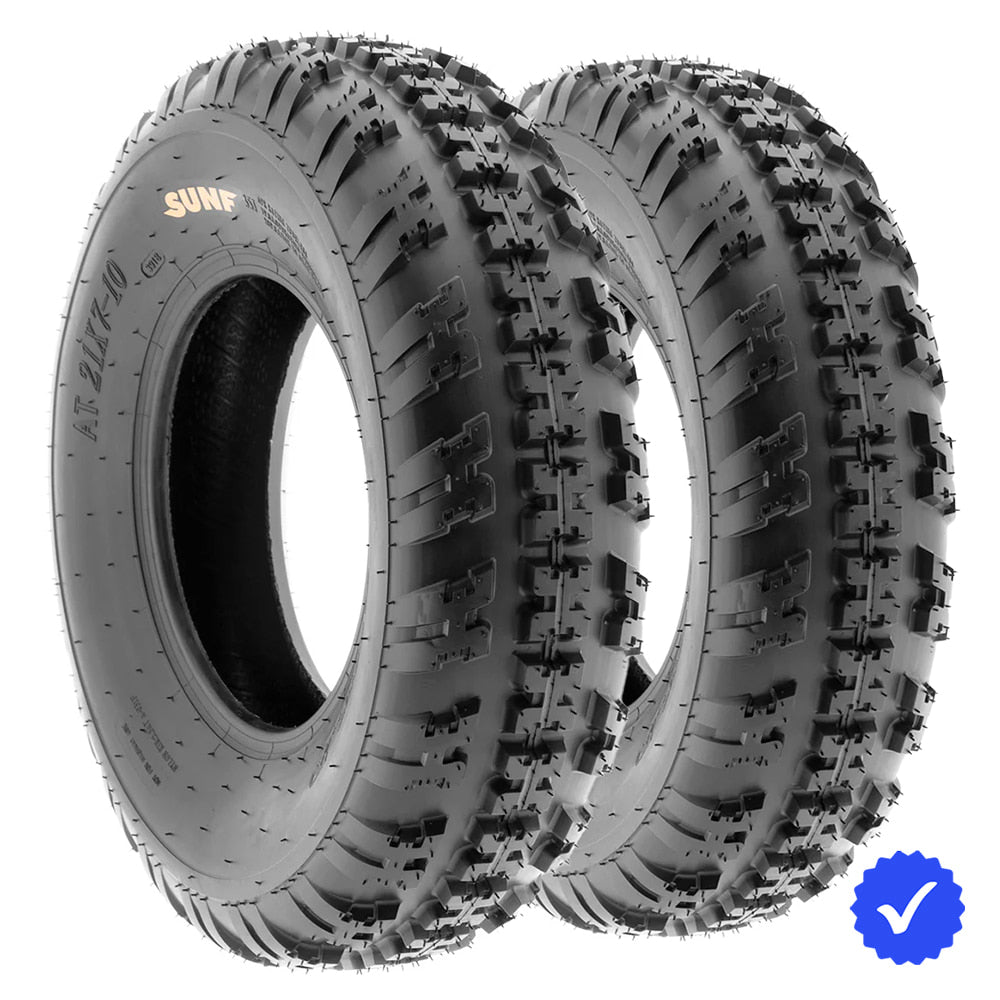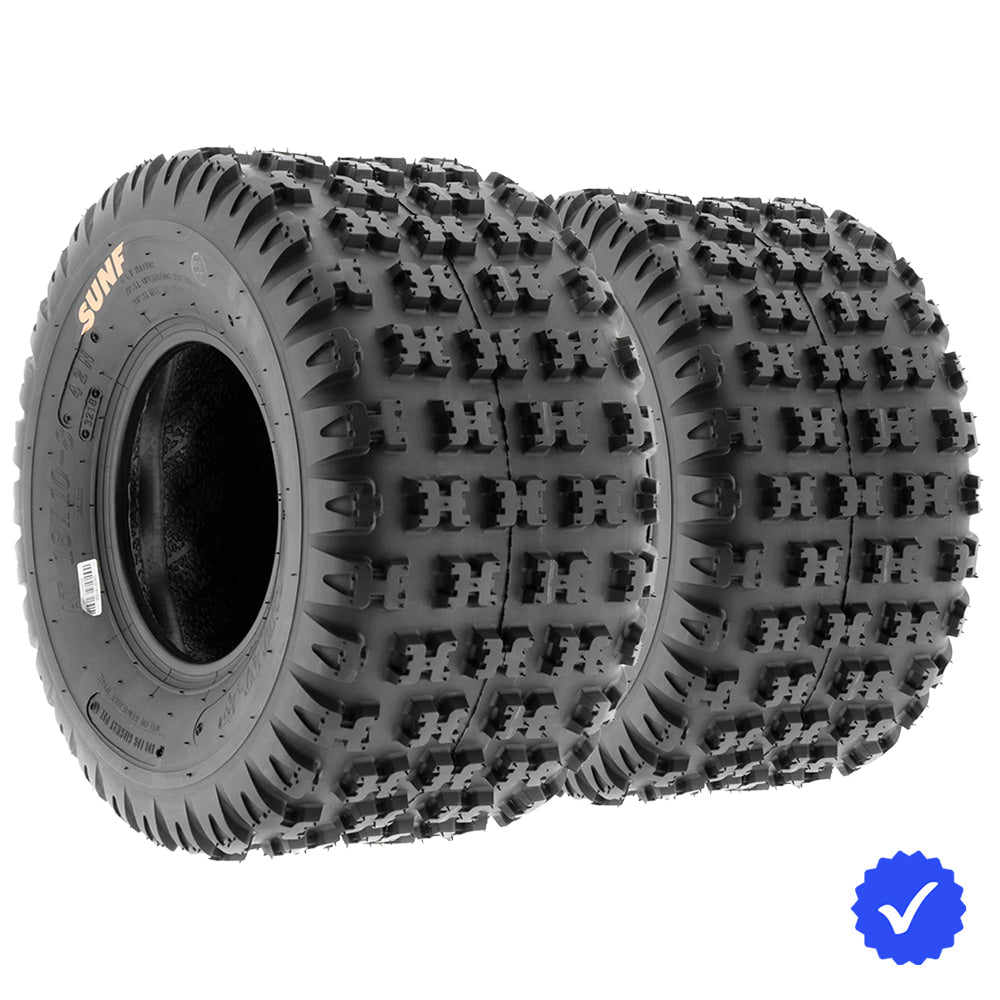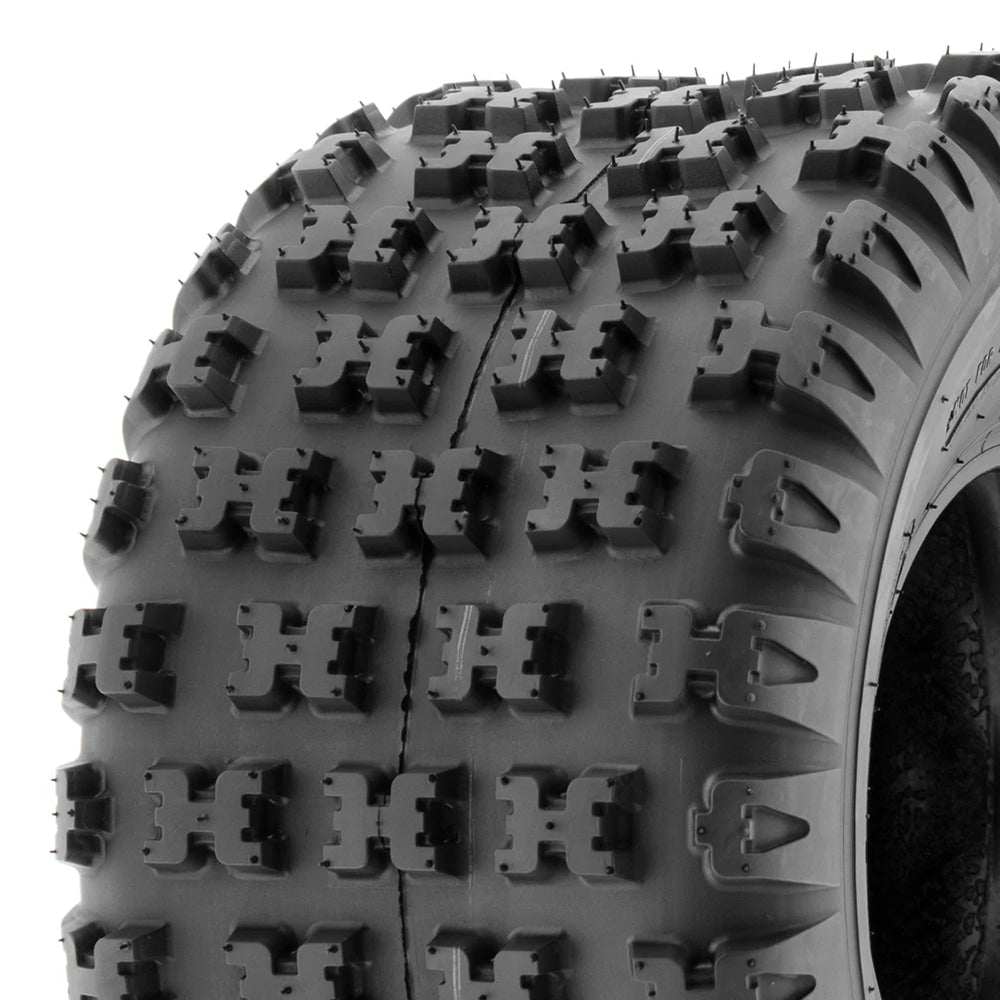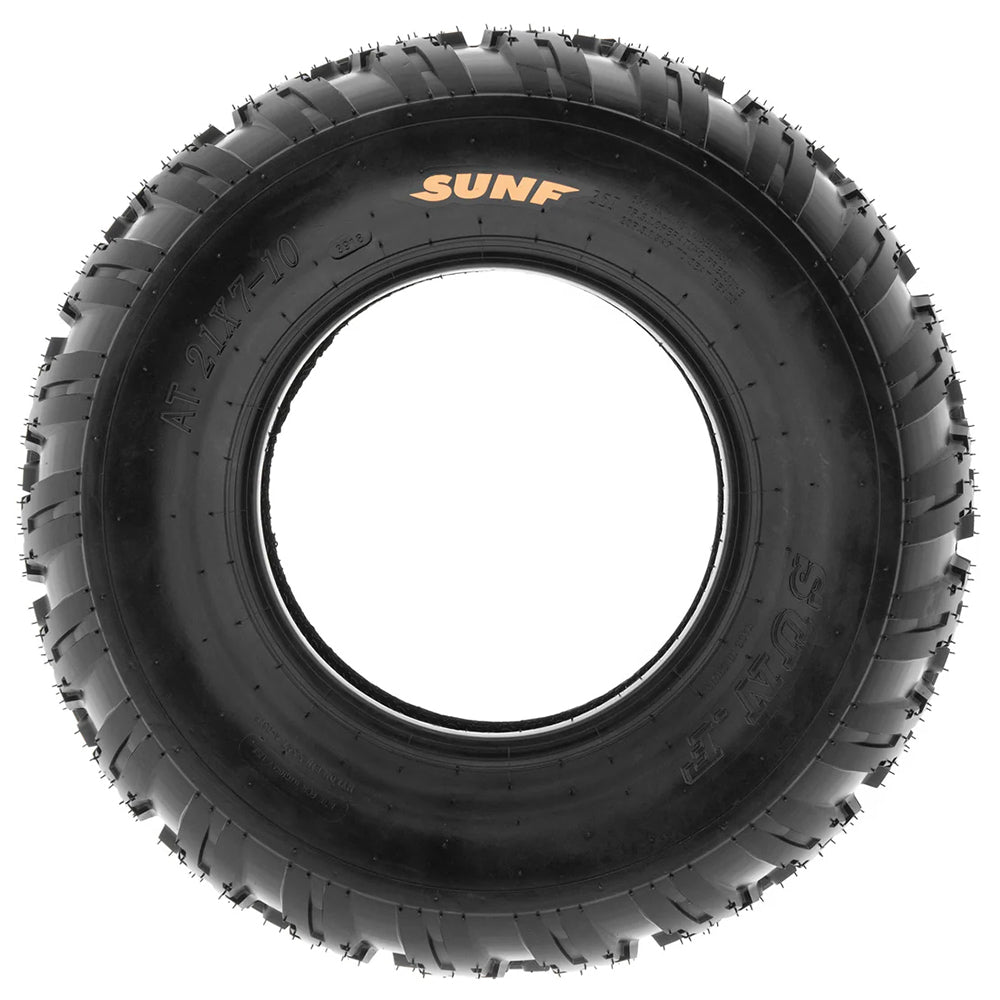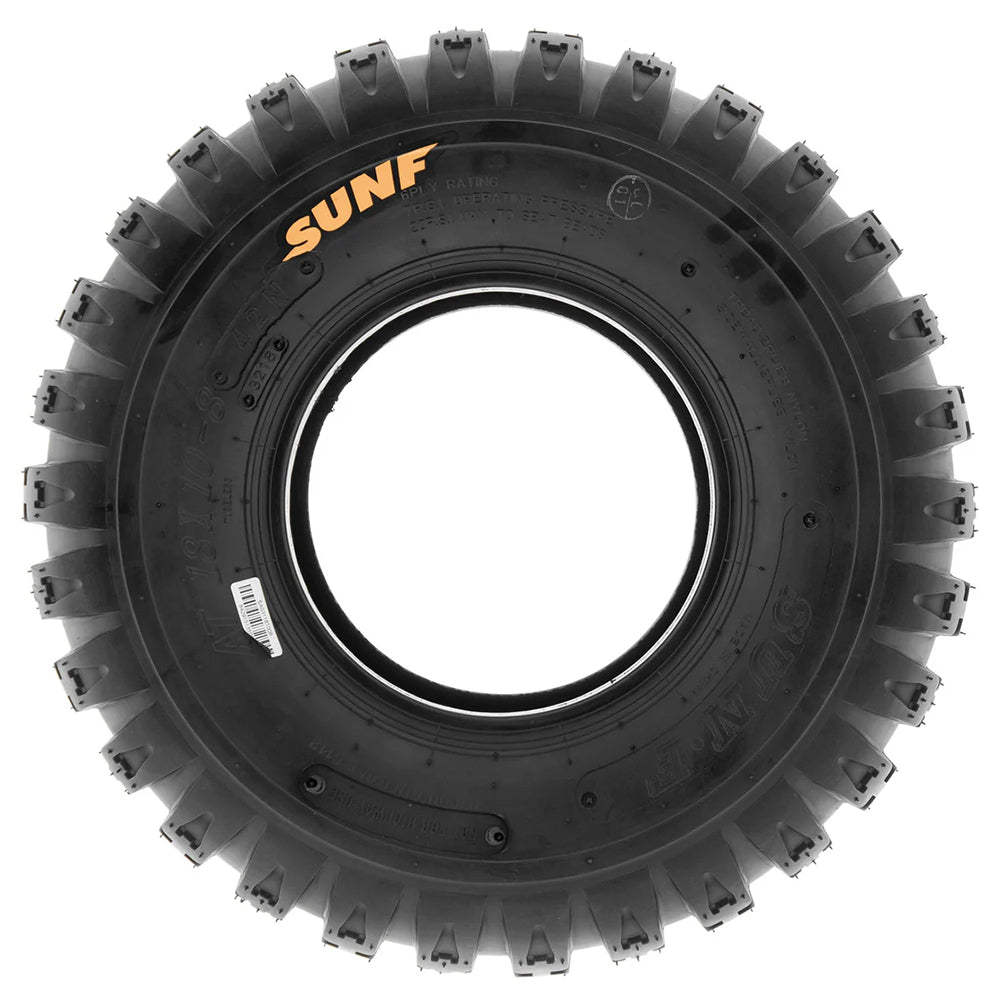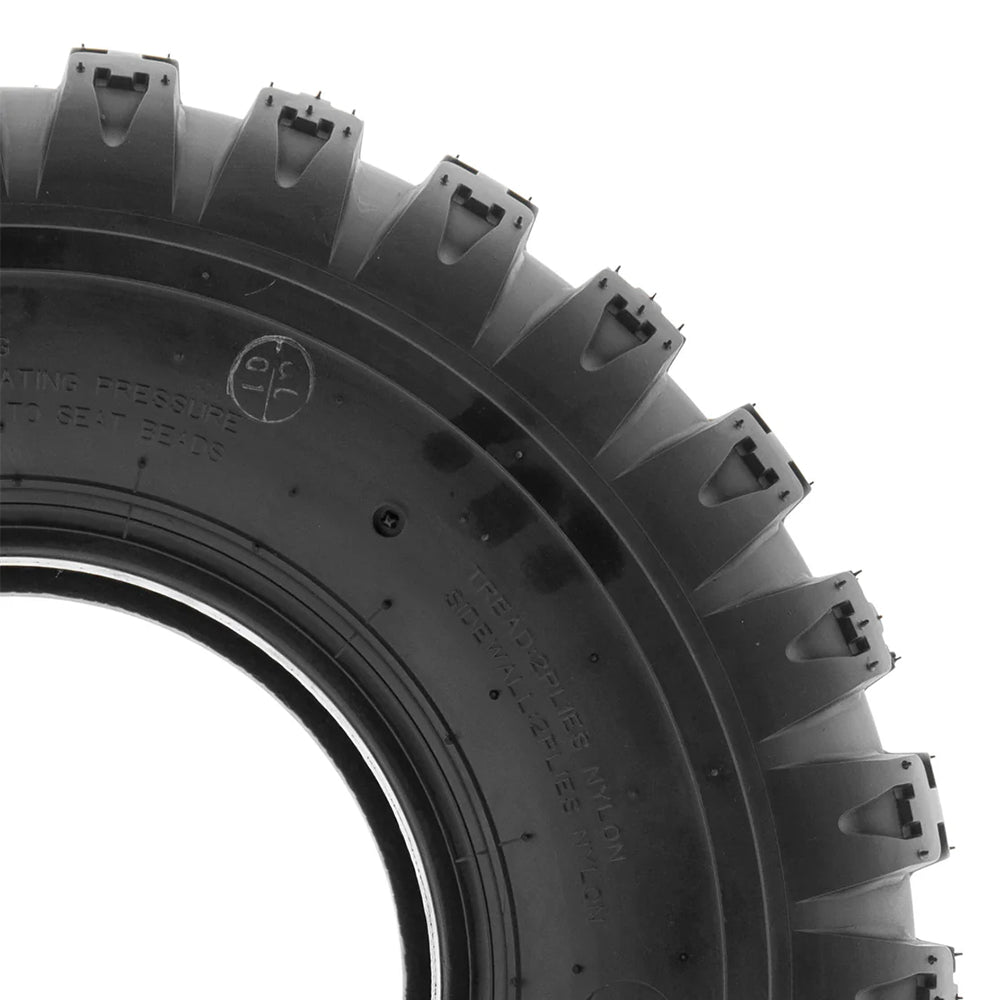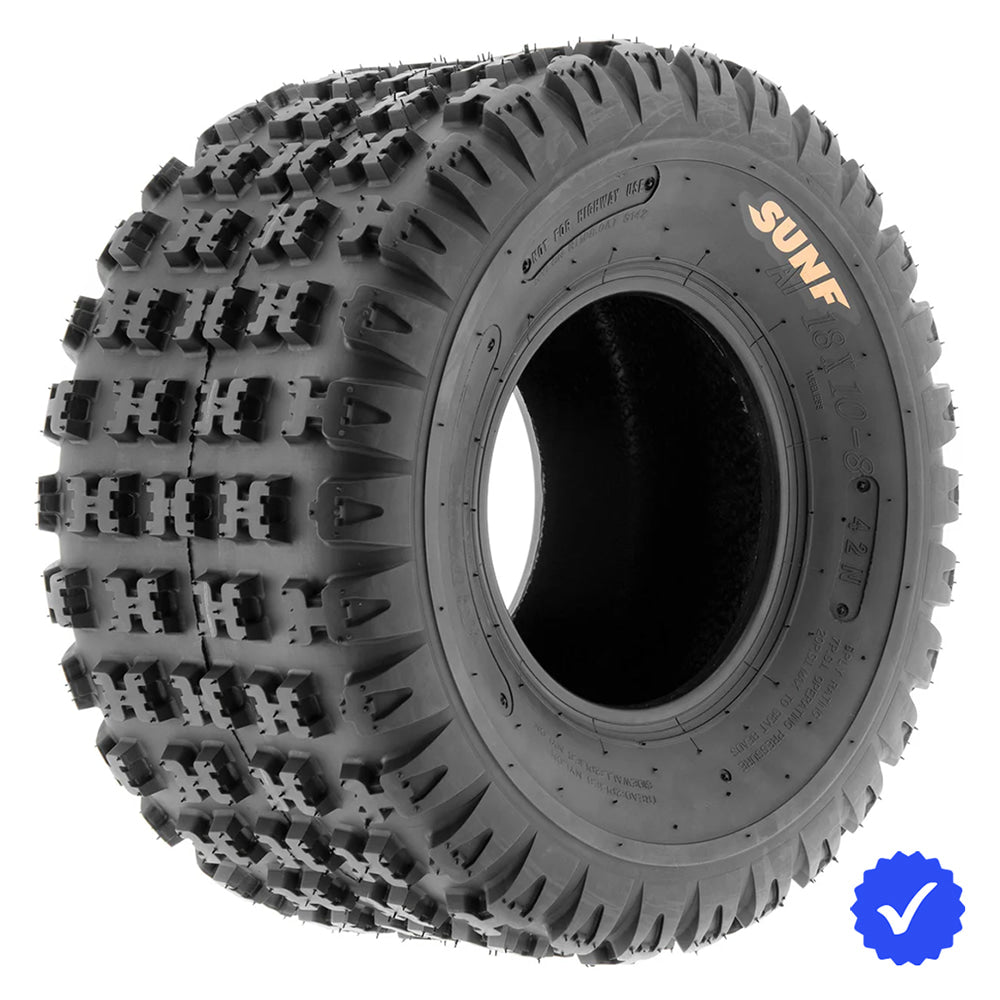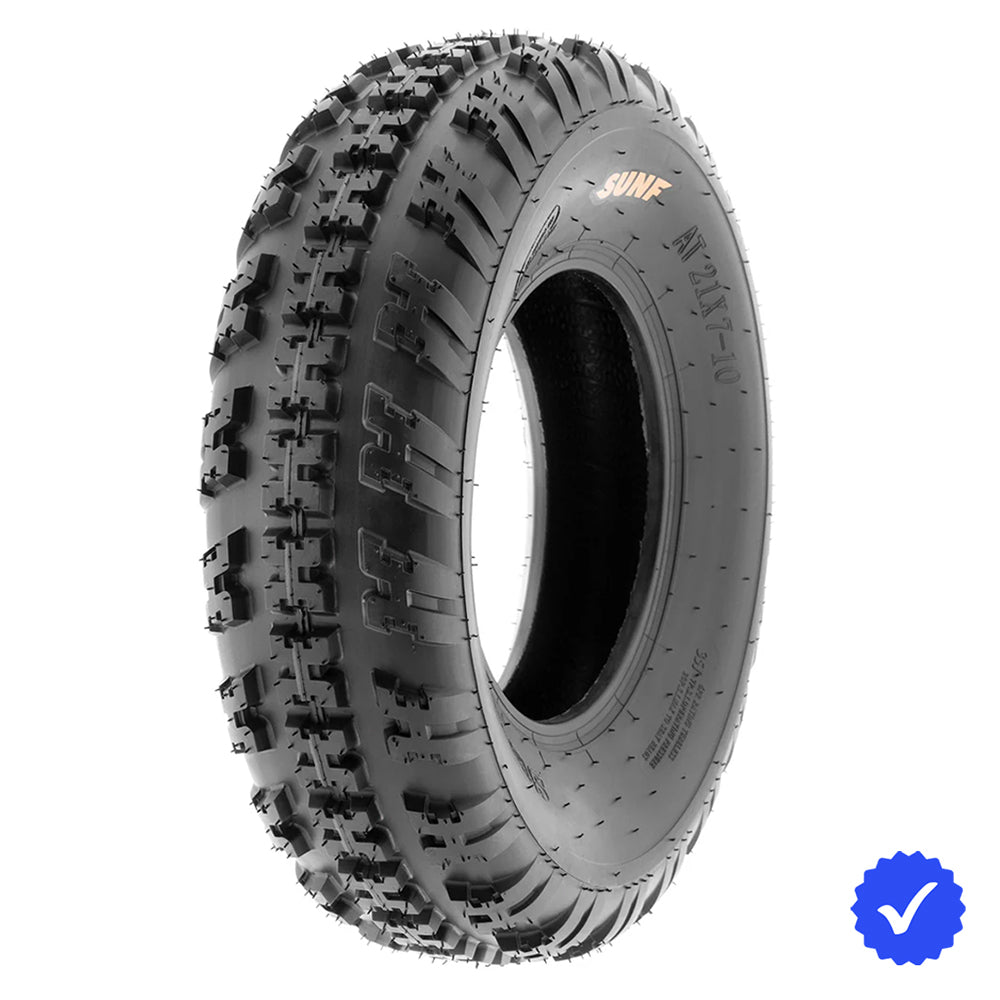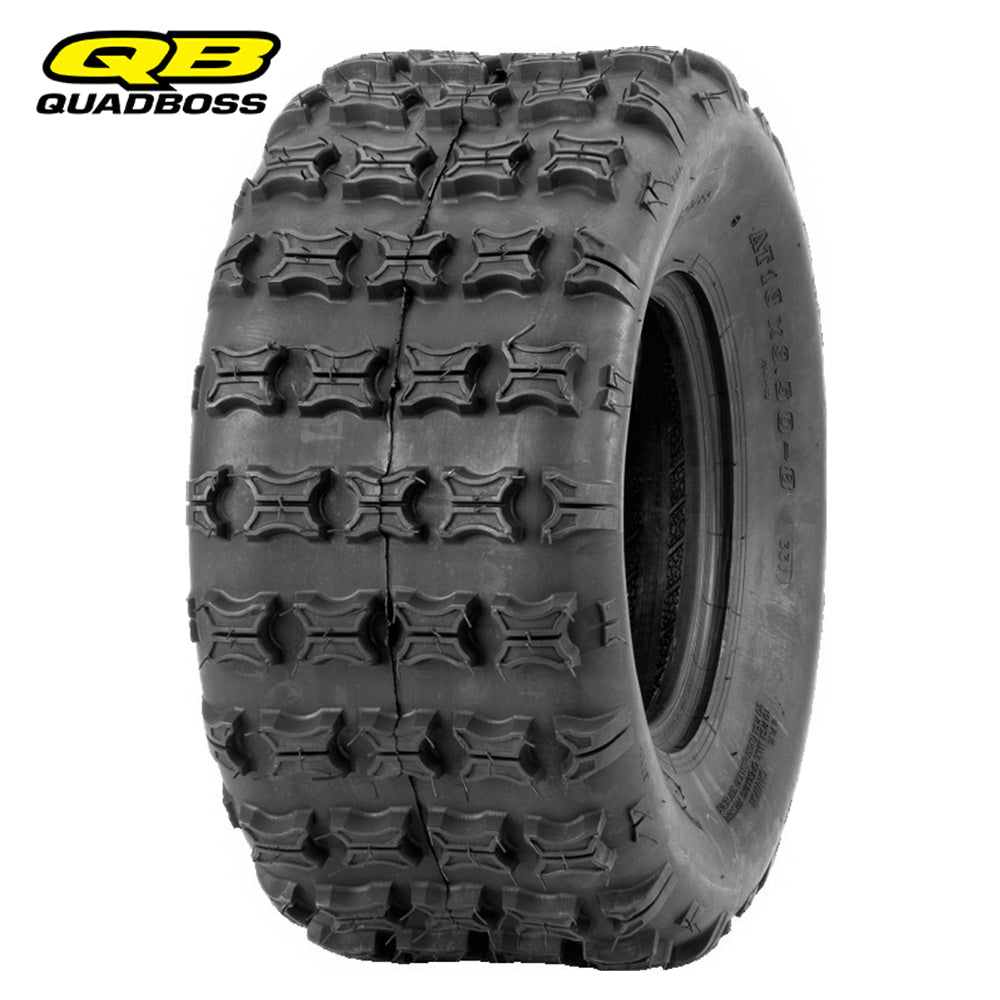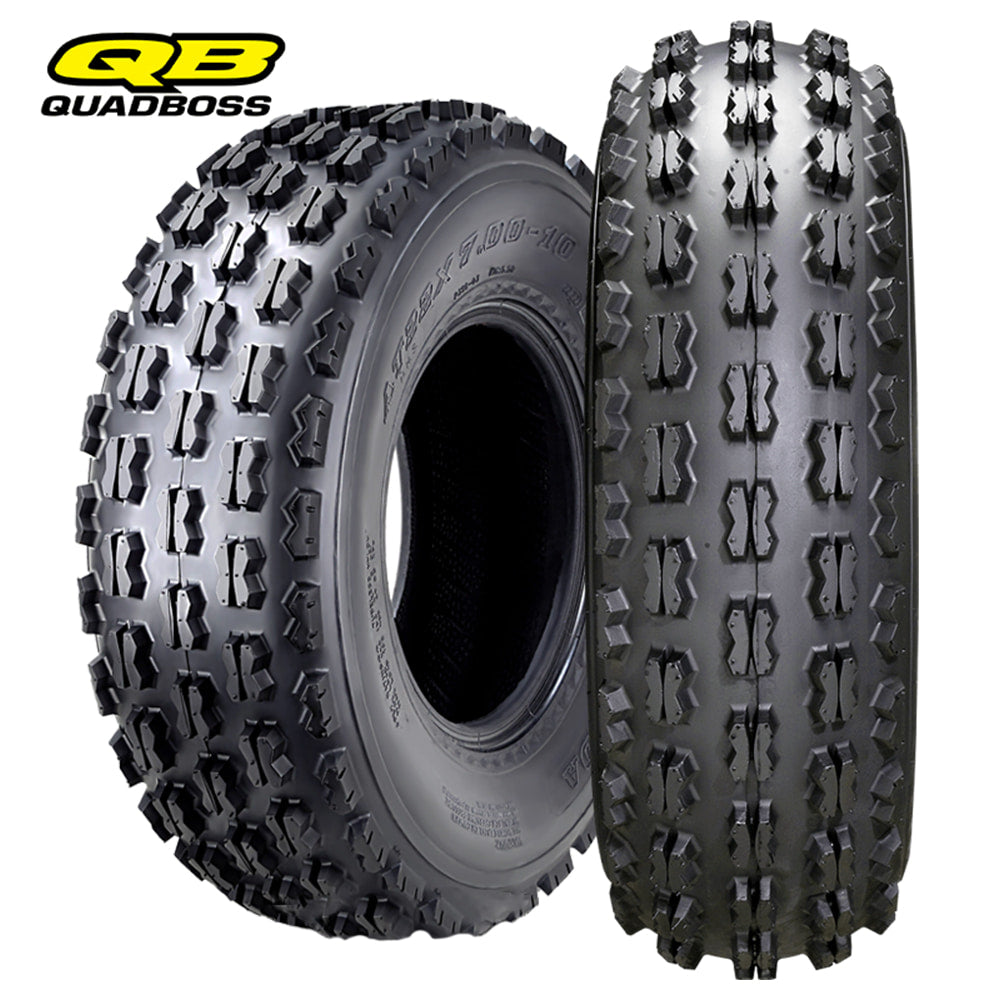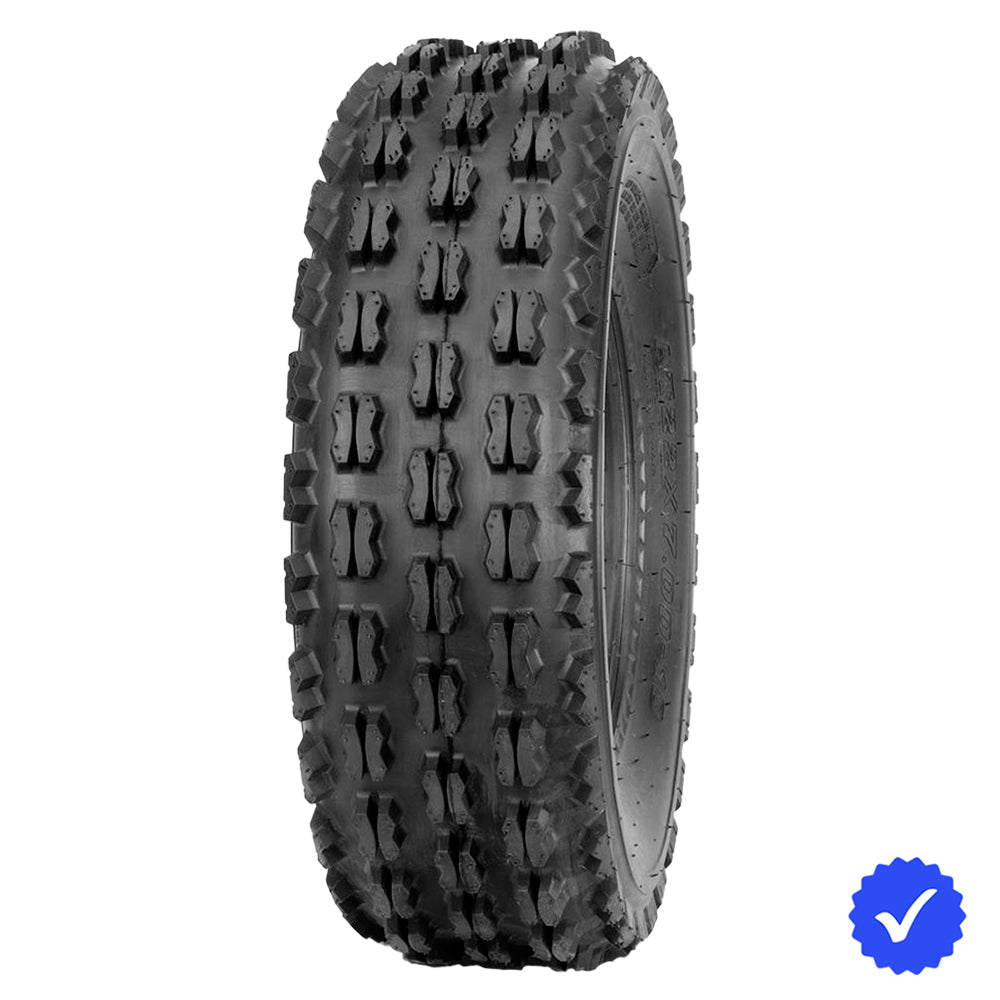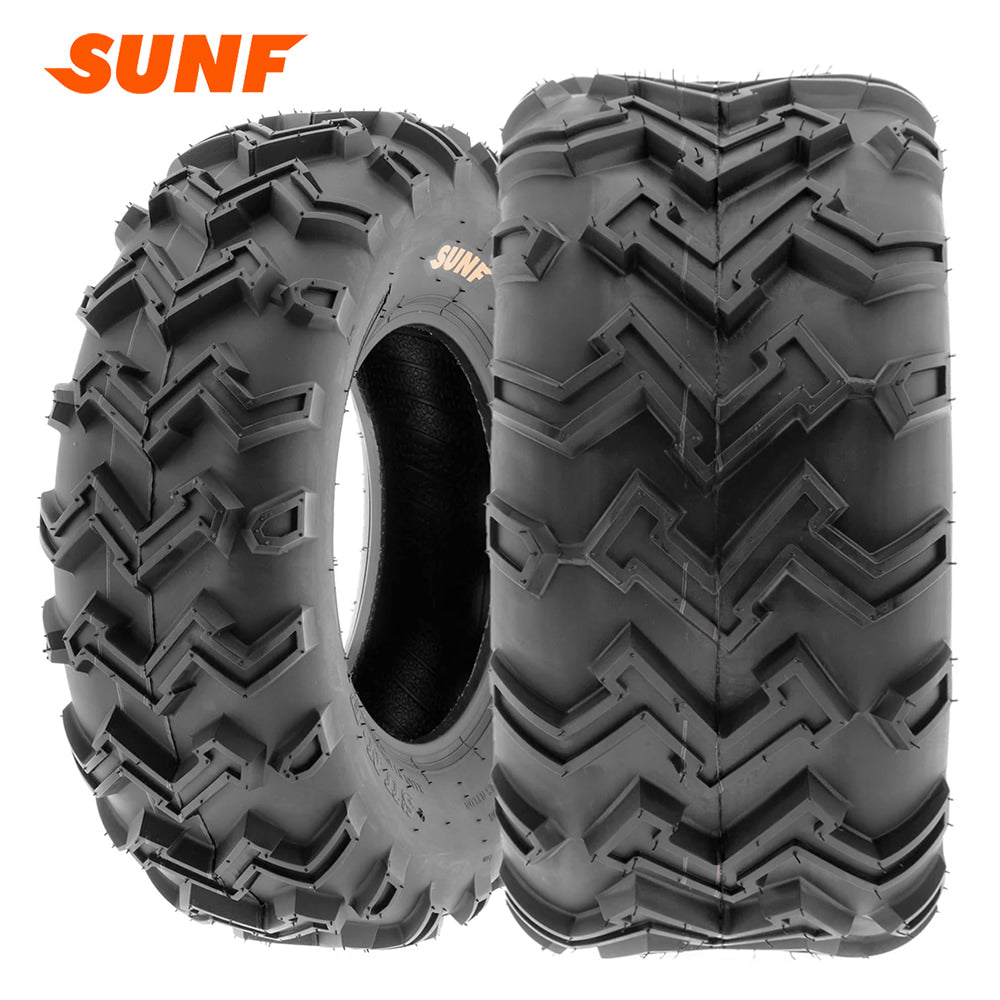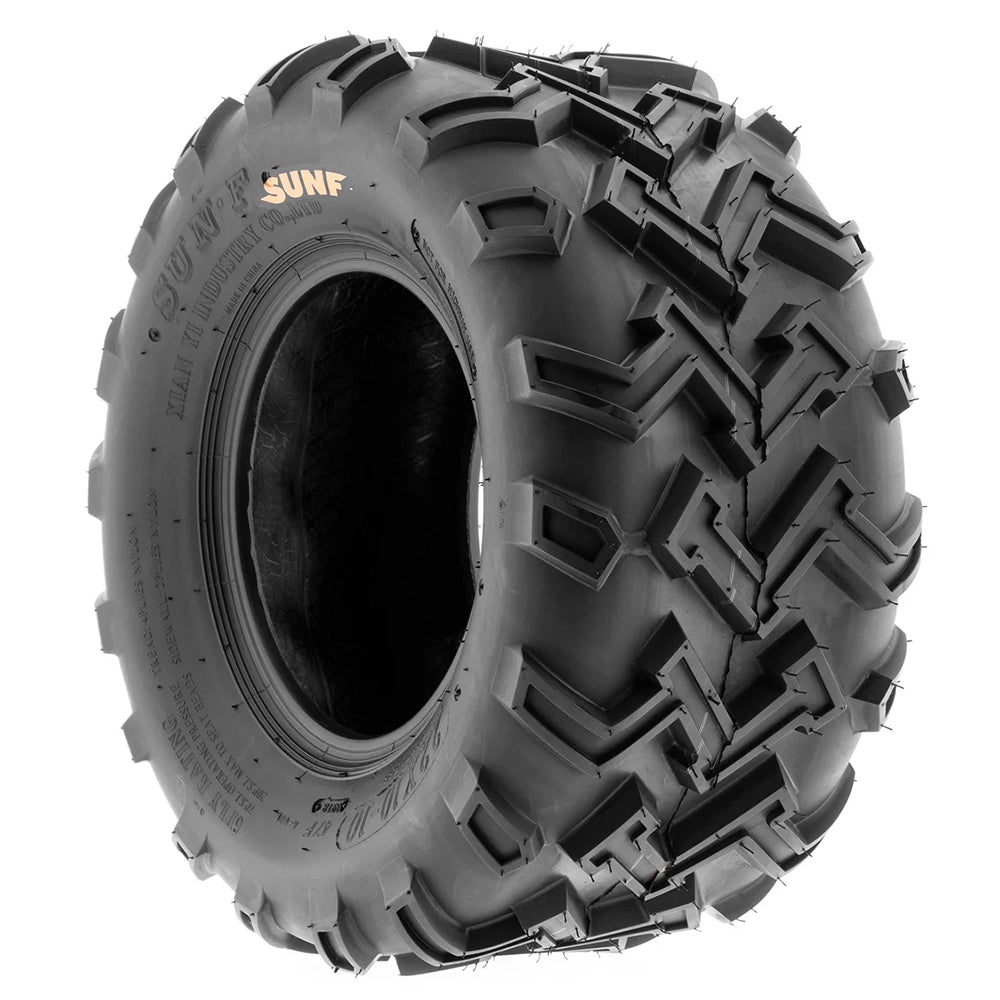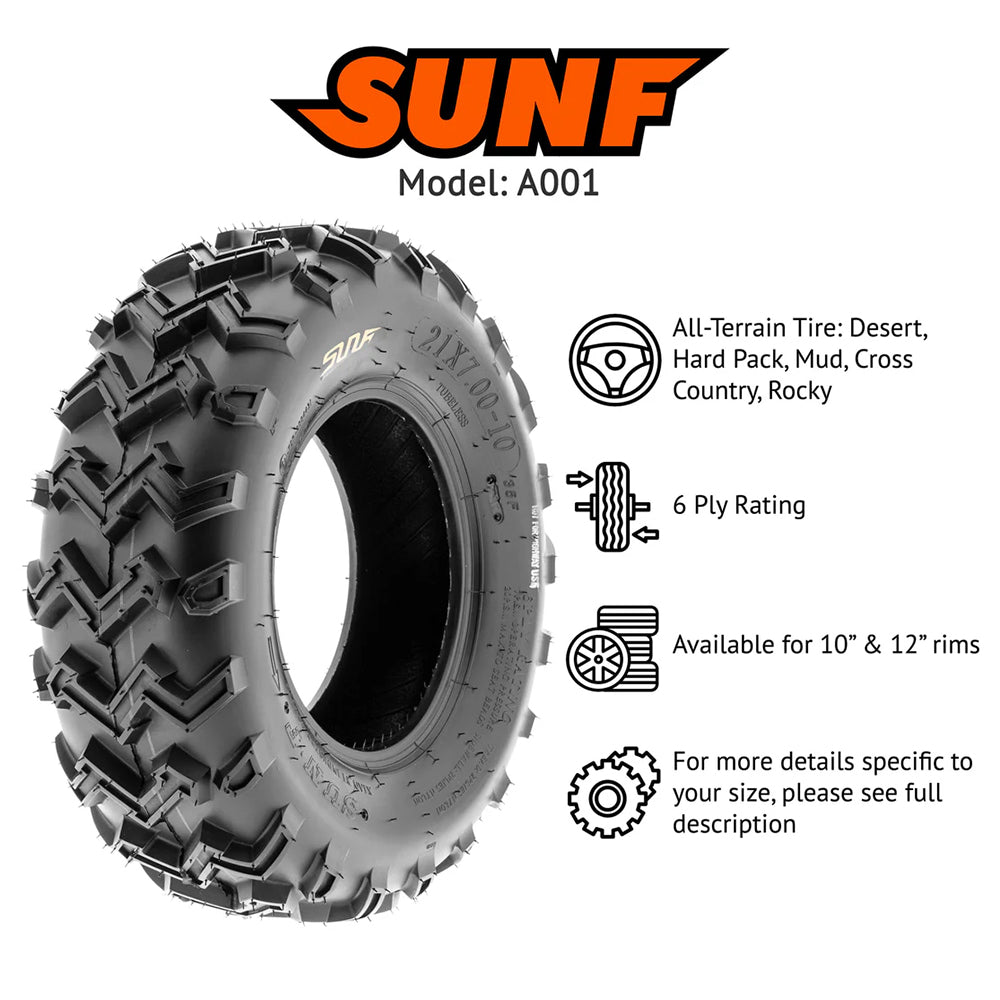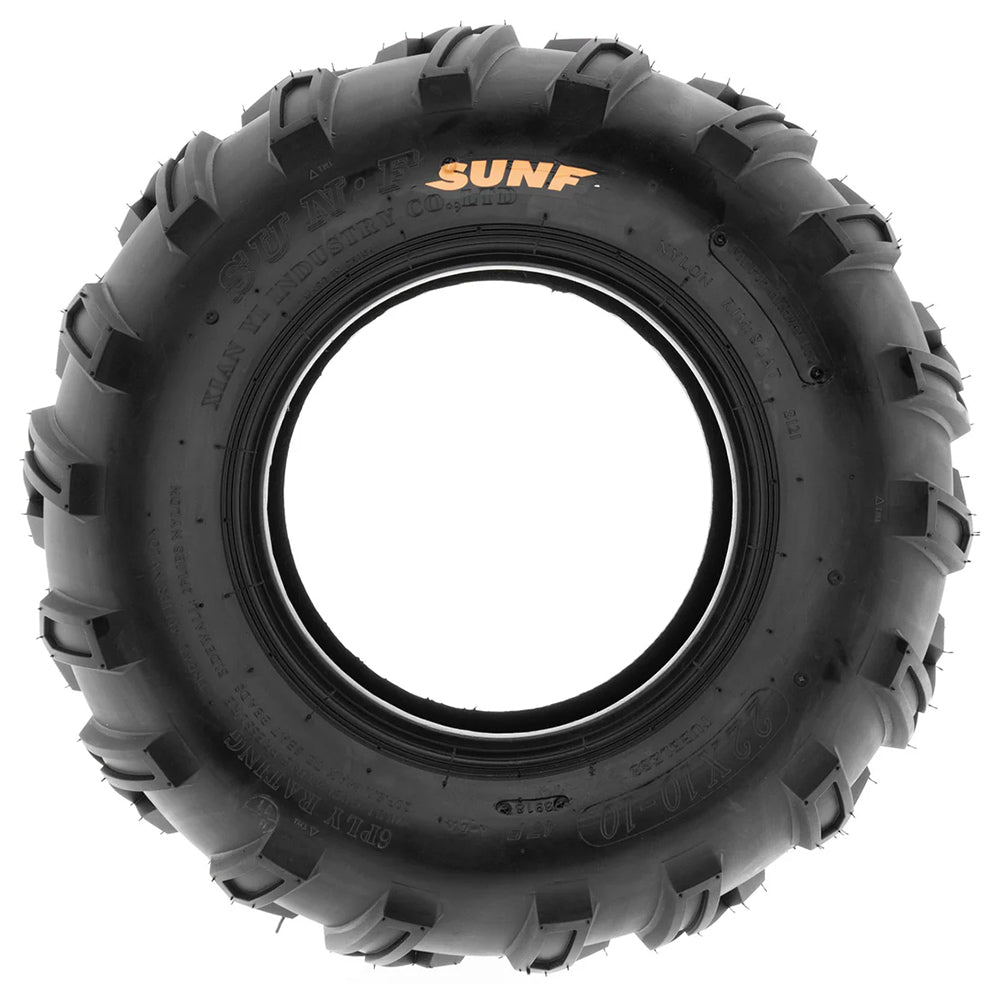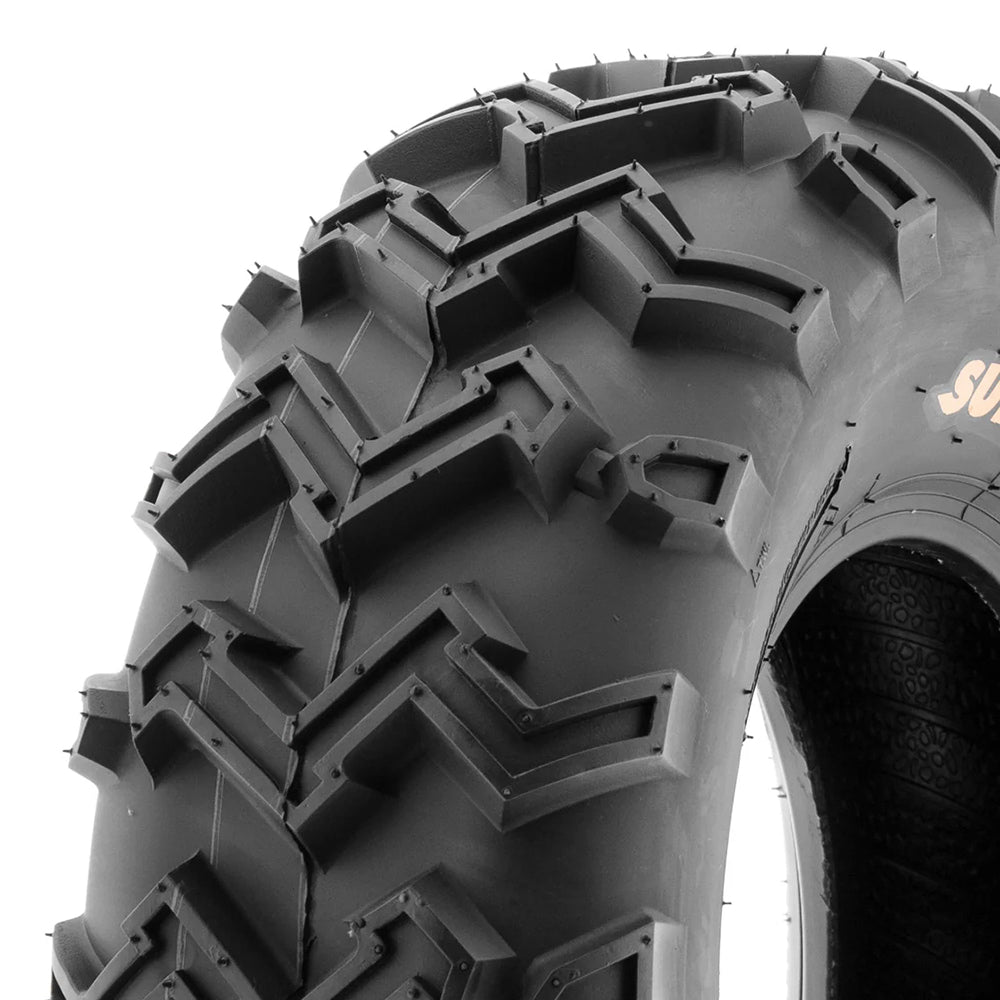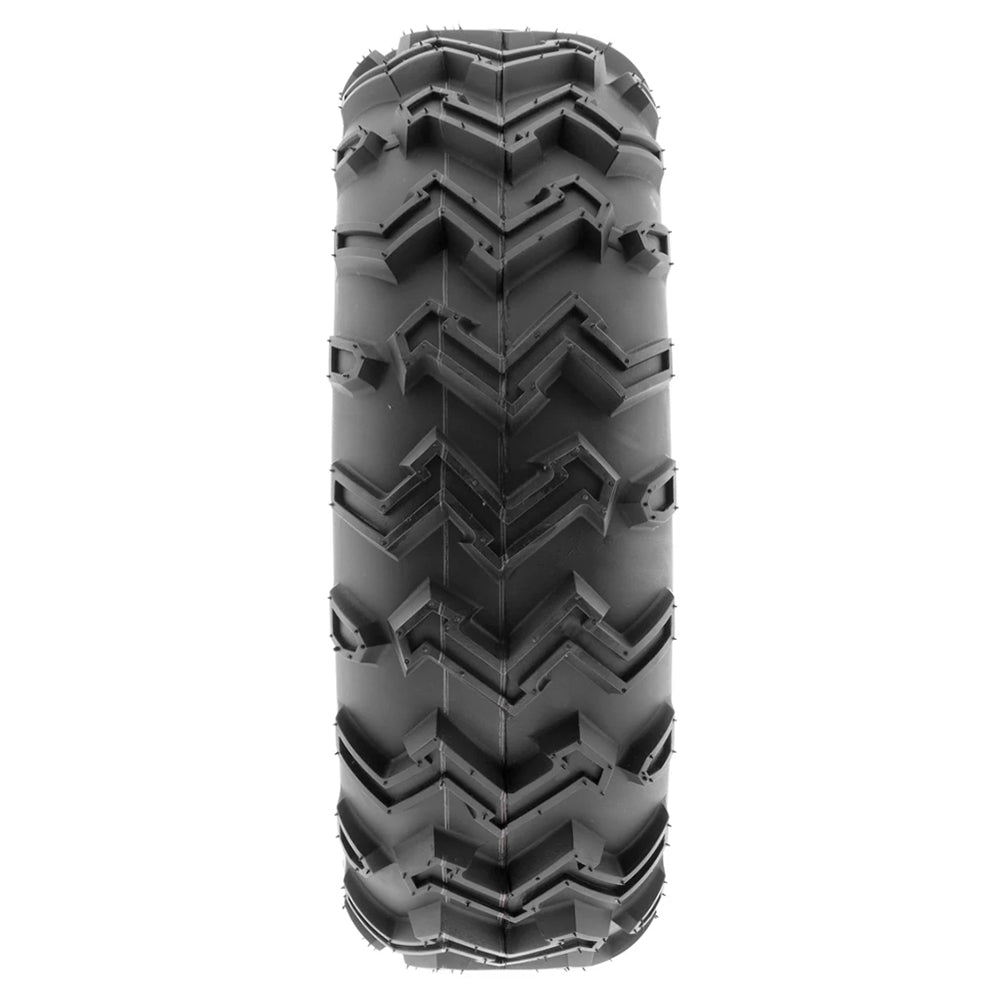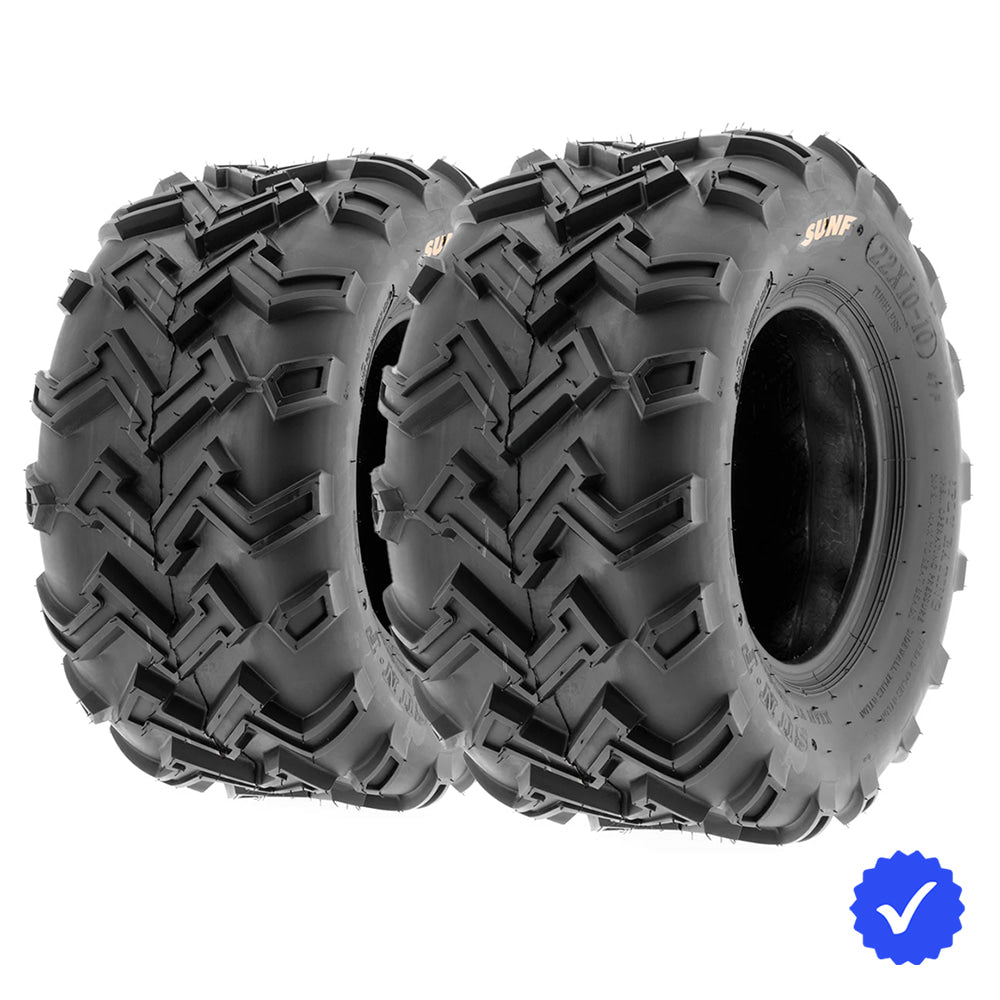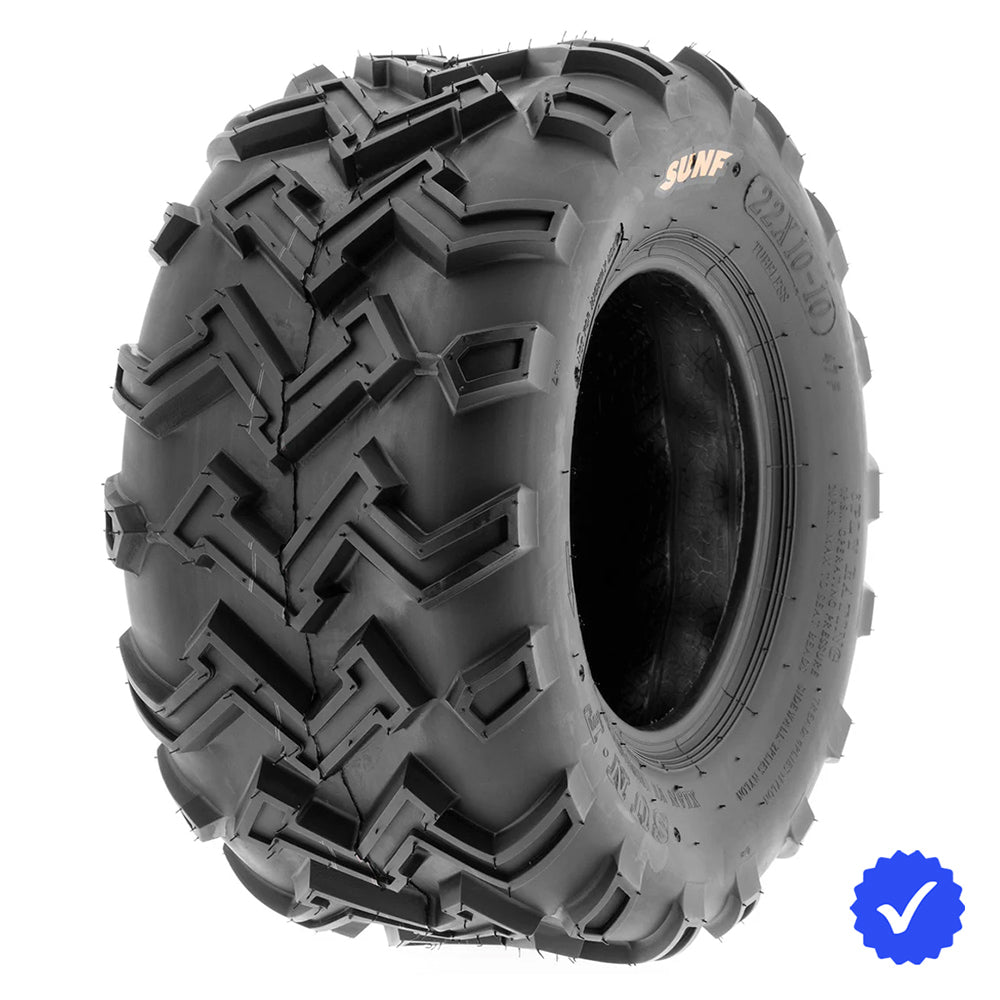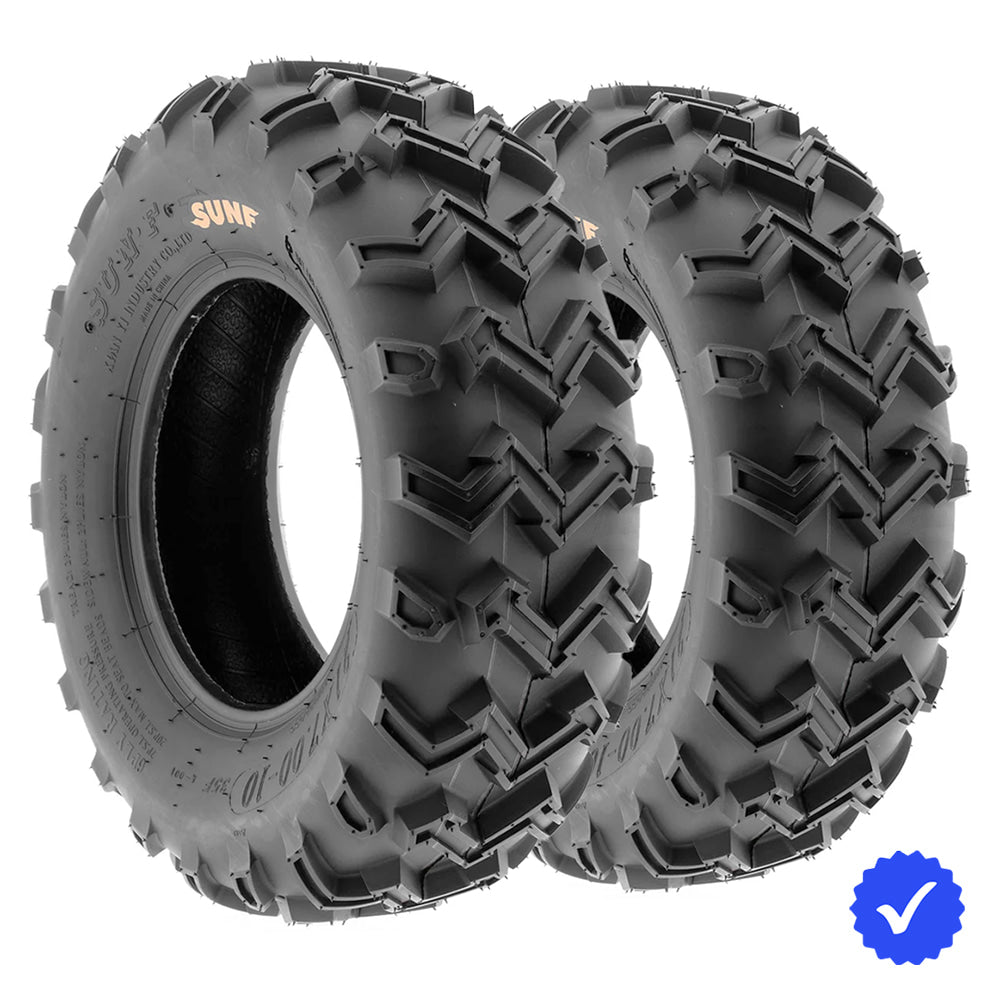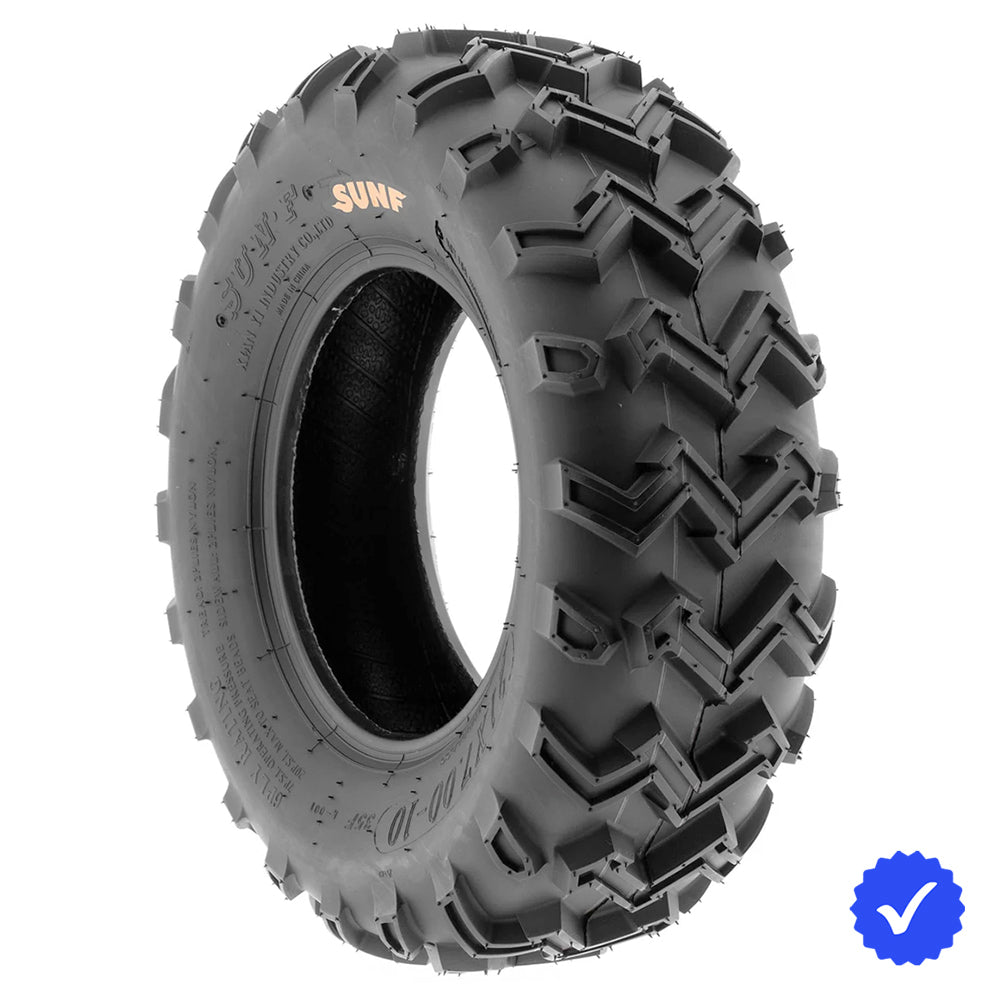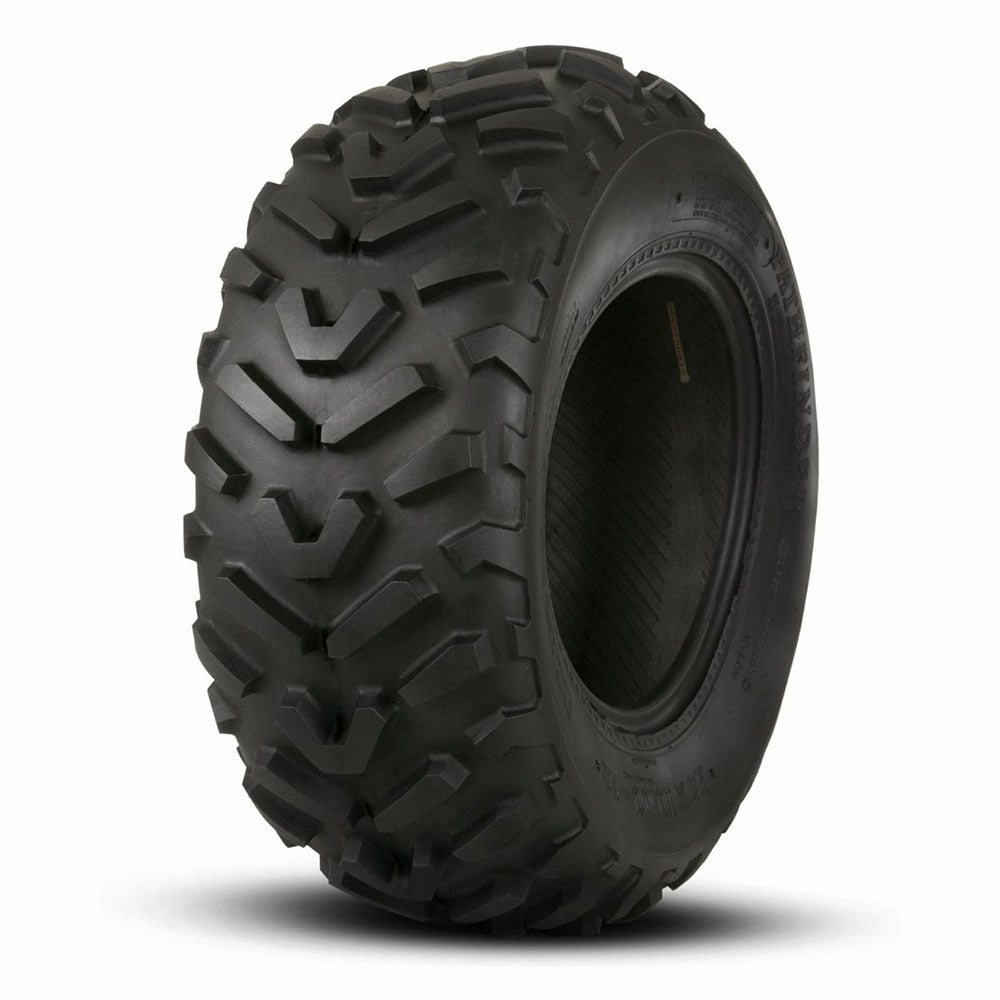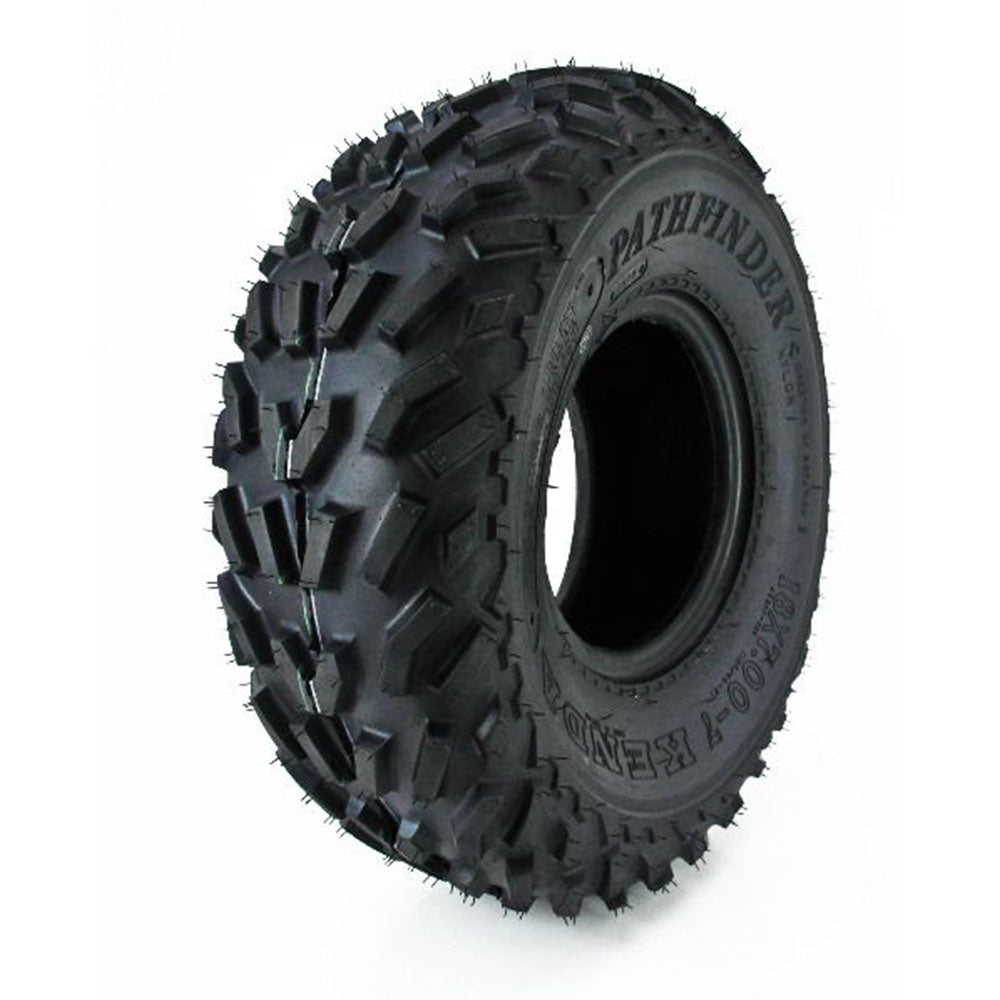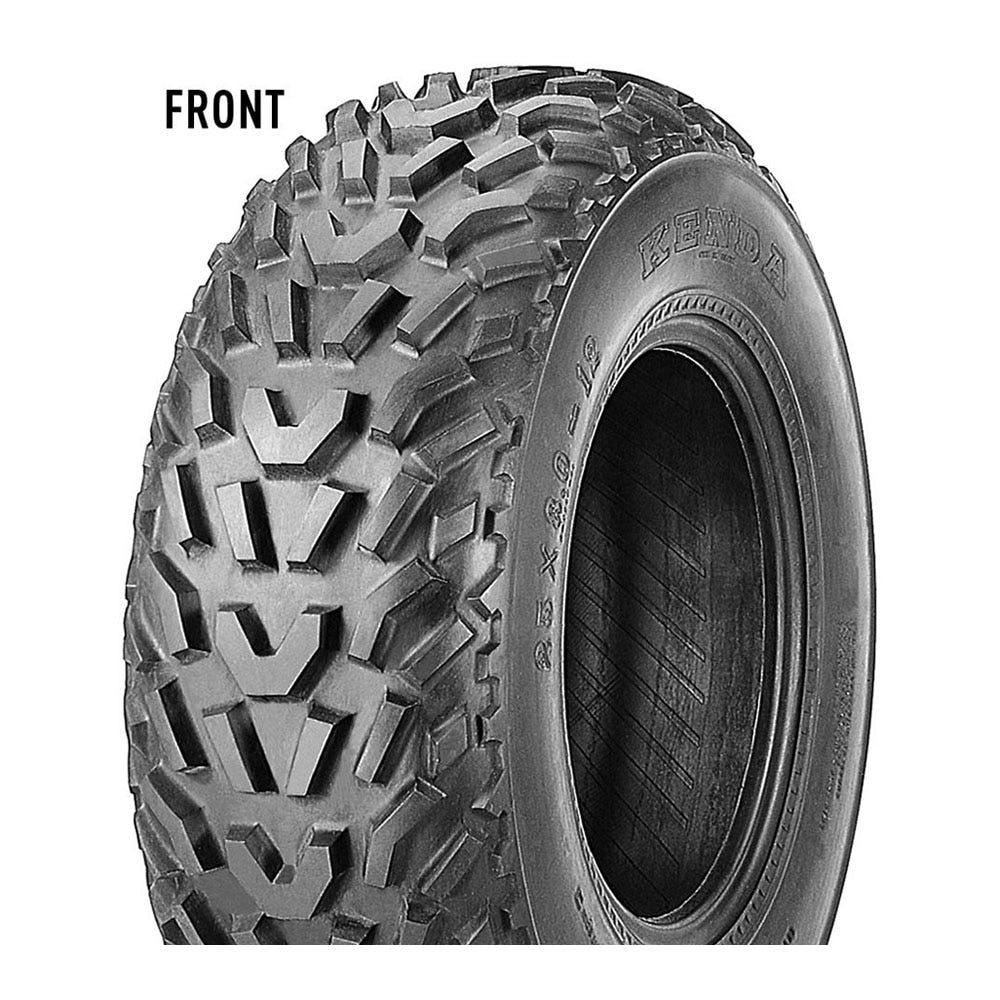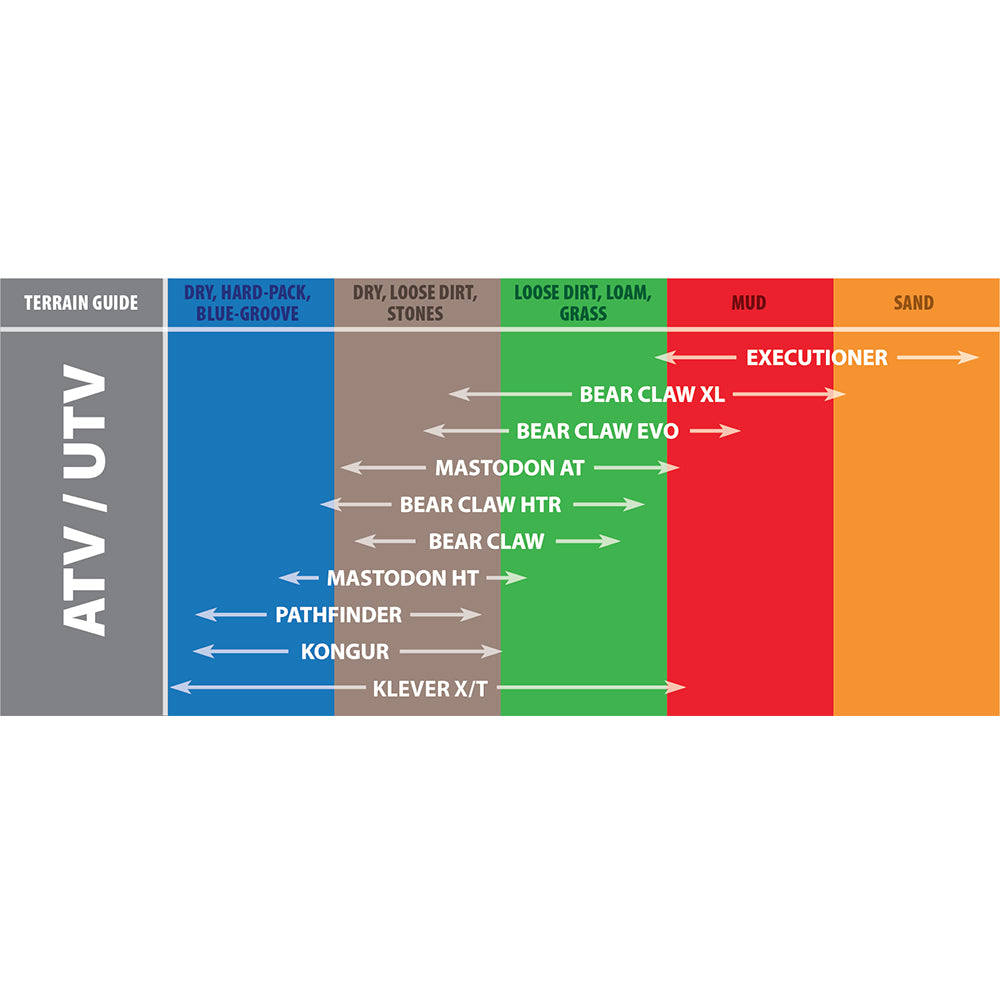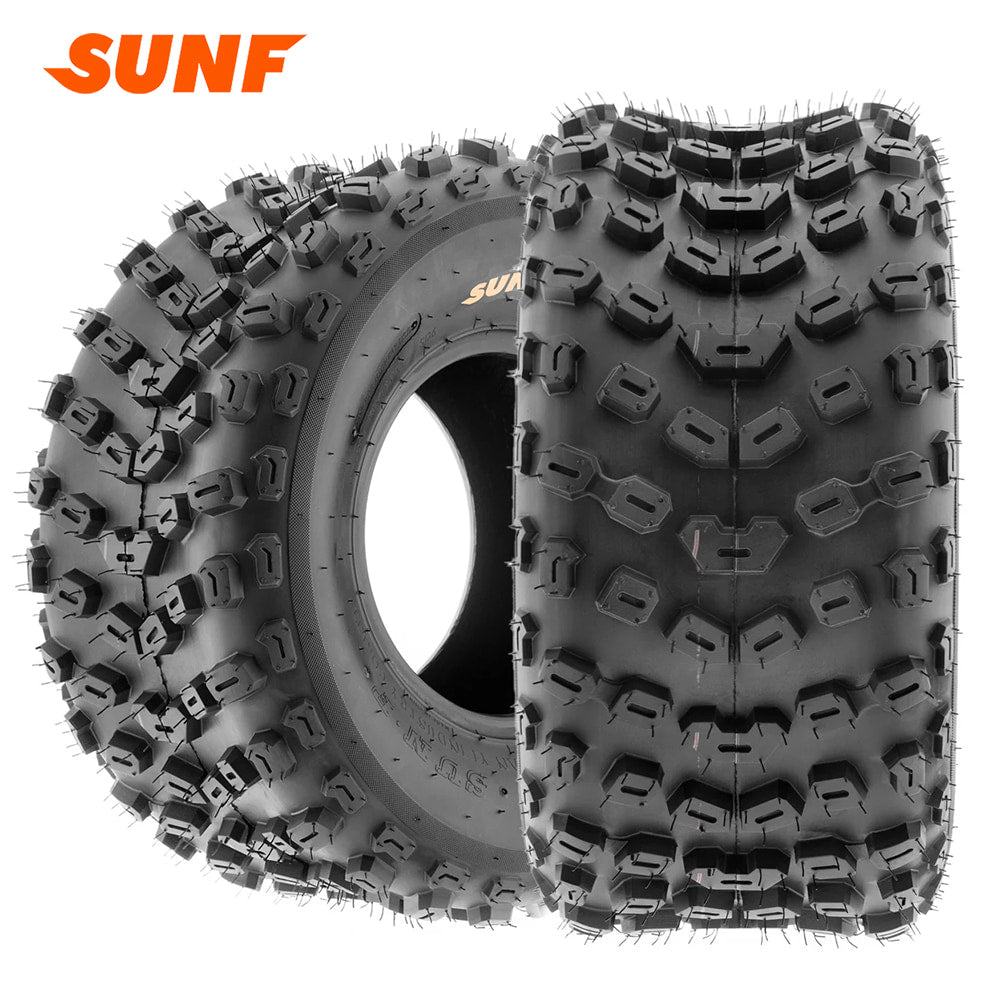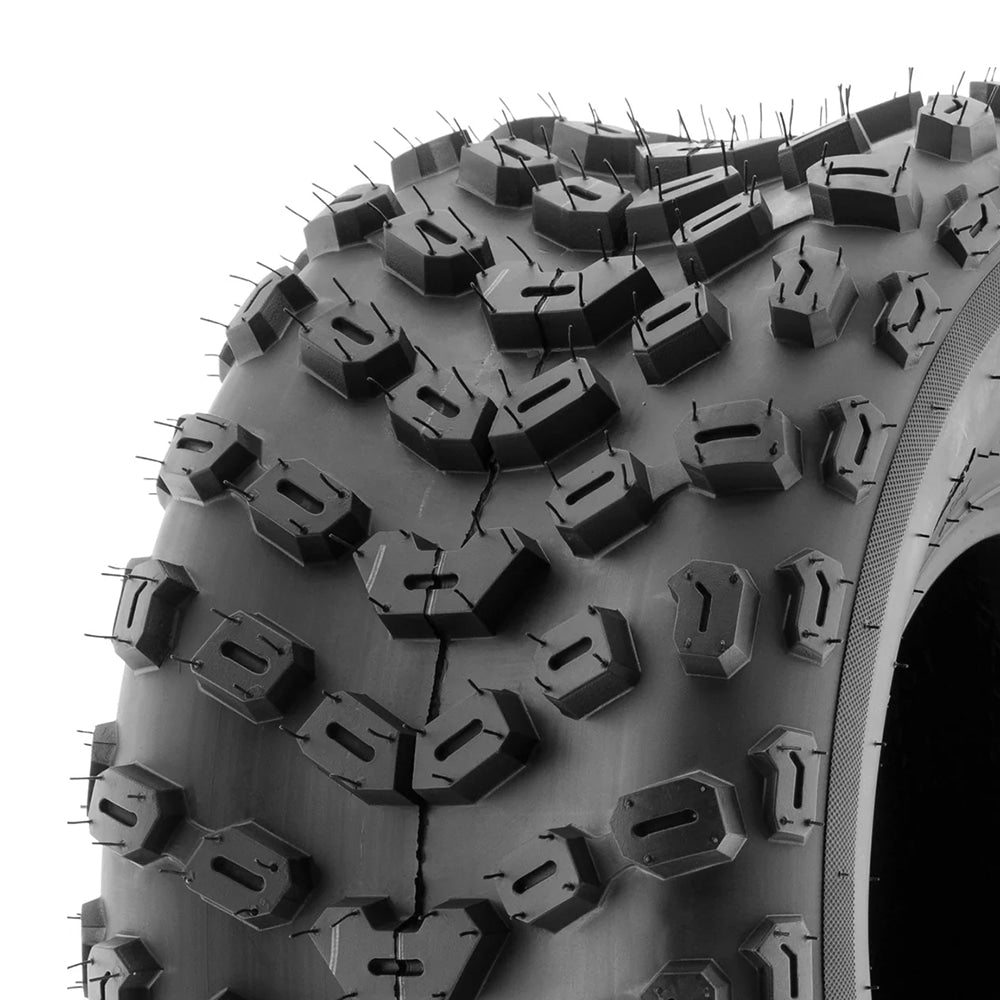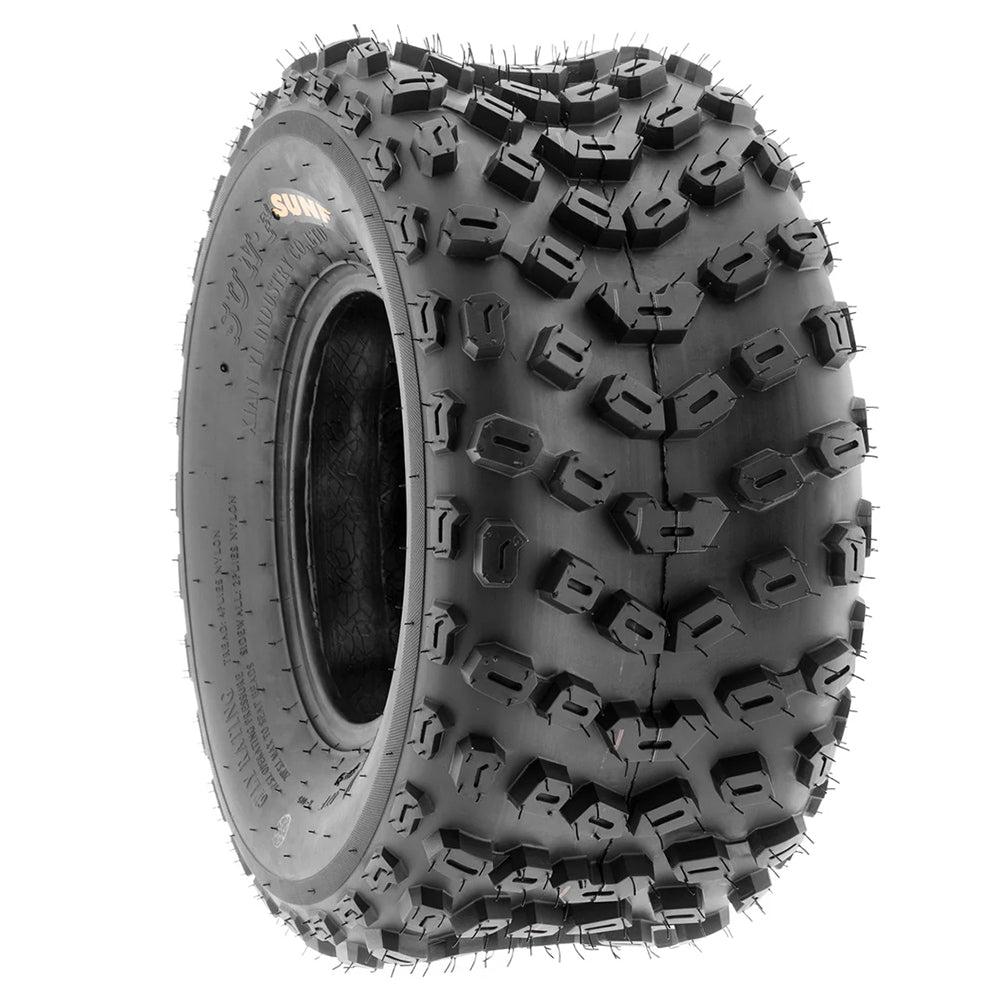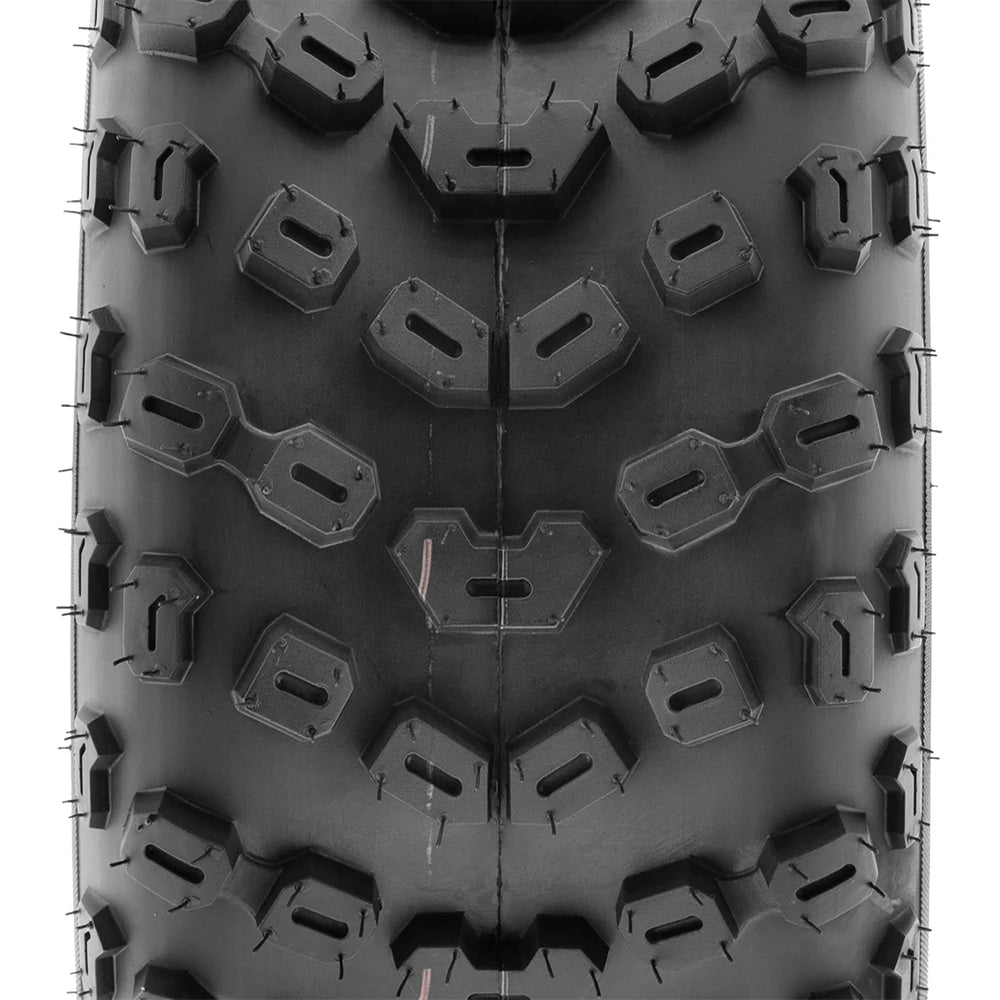ATV Tires
Upgrade your ride with top-of-the-line ATV tires built for mud, trails, sand, hardpack, loose loam, and more. Whether you need aggressive mud tires for maximum traction, lightweight racing tires for speed courses, or versatile all-terrain options that cover every surface, you’ll find them here. We carry trusted brands like Maxxis, ITP, SunF, and Kenda in a wide range of sizes, making it easy to choose the perfect tire for your quad.
Choosing The Right ATV Tire
Terrain: Which ATV tire is right for you?
The market for ATV tires is broken down between versatile, all-terrain tires and highly specialized tires designed for specific terrains and/or extreme conditions
All-Terrain Tires
All-terrain tires are, by and large, the most popular category of ATV tires. Their tread offers a perfect balance of grip and strength and gives them a broad use across a wide variety of terrains. Often equipped as stock tires on new quads, all-terrain tires perform well on mild to moderate terrains such as soft-packed trails, light mud, gravel, and small rocks. The tread pattern of all-terrain ATV tires is generally aggressive, but the slightly shallower tread depth provides a smoother, more comfortable ride on hard surfaces while still maintaining plenty of grip for intense off-road exploration. These tires are perfect for the off-roader who rides on a wide range of surfaces and wants a tire that is built for longevity and endurance.
Mud Tires
As the name suggests, mud tires are built specifically to get your ATV through deep, thick mud. Mud tires are very recognizable and feature some of the most aggressive tread patterns you will find on quad tires. The tread pattern of ATV mud tires features large, widely spaced lugs. This allows the tire to grab large chunks of mire and function almost like a paddle, propelling you forward. Another feature common on mud tires is angled lugs that continuously funnel mud out and away from the tire. This self-cleaning helps to ensure the tire doesn't accumulate mud and debris, which would cause the tire to lose traction. One of the drawbacks of mud tires is that outside of their specific application, they don't perform well. Driving on hard surfaces with mud tires will be rough, and even with their aggressive tread pattern, they don't provide much traction. Similarly, driving on concrete or pavement will cause premature tread wear. The highly specific nature of mud tires makes them the perfect choice for quad riders who consistently ride in wet and less-than-ideal conditions.
Sand & Dune Tires
Another specialized tire, ATV sand tires are designed exclusively for use on loose, sandy surfaces like dunes. The tread pattern of sand tires prioritizes floatation over digging. This is important as excessive digging on sandy surfaces will cause your quad to sink, losing speed and control. Rear sand tires, often referred to as "paddle tires", feature large fins/paddles with large voids between the paddles. By utilizing this pattern, sand tires push the sand backwards and propel your vehicle forward. The front tires of sand tires are often smooth and feature single, raised ridges that run parallel across the face of the tire. This provides directional steering control, again, without digging. Sand tires are highly specific, and using them on any other surface is not advised.
Racing & Hard-Packed Trail Tires
For riders focused on high-speed trail racing or performance on compact surfaces, racing tires are the ideal choice. These tires are typically made from a soft, sticky rubber compound with a regulated, low-profile tread pattern and sharp edges to provide tenacious grip and a sharp steering response on hard-packed trails. Their lightweight construction is optimized for acceleration and handling. This focus on high-speed performance, however, sacrifices durability; the soft rubber wears down quickly, especially if used on other terrains, and may need to be replaced frequently, even after a single ride.
Hard Surface & Turf Tires
Not all ATV riding involves aggressive off-road conditions. For those who frequently use their vehicles on lawns, paved paths, or hard-packed roads, hard surface and turf tires are an excellent option. These tires feature shallower treads and are designed to minimize rolling resistance, which improves fuel efficiency and provides a smooth, quiet ride. Additionally, they are engineered to be gentle on lawns and turf, preventing the gouges and tears that more aggressive treads can cause.
Snow & Winter Tires
While many all-terrain or mud tires can be used in snowy conditions, specialized snow tires offer superior performance. They are designed with a softer rubber compound that remains pliable in cold temperatures and features "siped" tread patterns—small cuts in the lugs that create additional biting edges for grip on ice. Some designs even include holes for studs to provide maximum traction on slick, icy surfaces.
Price: How much do ATV tires typically cost?
ATV tire prices vary widely depending on tire construction, size, and design. On average, budget-friendly quad tires can be found for as low as $35, while high-performing specialty tires can cost $350 or more. High-performance tires, which feature increased ply ratings, specialized rubber compounds, radial construction, and larger sizes, drive a higher cost compared to low-ply, bias, entry-level tires. Some ATV tire brands that feature economical tires include SUNF, Kenda, and AMS. On the other end of the spectrum, Dragonfire, Interco, BFG, and Maxxis sell larger and/or specialized tires that have a higher cost. Between these two price extremes, there is a wide range of tires manufactured for a wide range of uses and terrains. It’s best to consider your specific tire needs and consult with user reviews when making your tire purchase.
*Note- these prices reflect averages across the industry. Individual prices may vary.*
Brands: Who are popular ATV tire makers?
When choosing an ATV tire, there is no shortage of brands available for you to pick from. However, as a result of millions of miles of testing from quad riders across the country, a few brands have risen to the top and garnered a reputation for making reliable, high-performing ATV tires. Here is a list of some of the most sought-after ATV tire brands:
- SunF
- Maxxis
- ITP
- Carlisle
- Kenda
- QuadBoss
Each of these tire manufacturers has its own strengths and weaknesses, as well as its own distinctive tread patterns and price ranges. While these specific tire makers are extremely popular, it is important to remember that each rider’s experience may be different. What works for one rider on their chosen terrain may not work for someone else.
*Note- this is a sampling and not an exhaustive list of tire brands.
Weight/Load: Understanding ply-ratings and load capacity
When it comes to how much weight an ATV tire can bear, tire construction is key. The primary factors that determine a tire's load capacity are the tire’s size and inflation pressure. Larger quad tires have bigger air chambers and, as a result, can support heavier loads. In addition to tire size, ply rating, and tire construction (bias/radial, tire materials) also play a role.
Ply-Rating: A tire’s ply rating is simply a classification or reference point representing a tire’s relative strength. Numerically, the higher the ply rating, the stronger the tire. For example, a tire with a 6-ply rating is stronger than a tire with a 2-ply rating. While this does impact a tire’s load-carrying capacity, it also impacts a tire’s strength in other areas, such as puncture resistance and general durability.
Load Index: Ultimately, the main determining factor of a tire’s load capacity is its load index. This is a manufacturer-specific number that designates the maximum load a tire can carry. You can often find this number stamped on the sidewall of the tire. On average, ATV tires can carry between 165 lbs. – 550 lbs. per tire. Always confirm load capacity with the load index stamped on the tire or with the tire manufacturer.
Traction: Where do ATV tires perform best?
The performance of an ATV tire on different terrains is a
result of a combination of two primary factors: tread pattern and construction
type. Quad tires come in various tread designs, each made to perform well on
specific surfaces.
- Aggressive tires with large lugs, wide spacing, and deep voids excel in mud and loose terrain. This tread pattern allows the tire to sink into the surface and provide plenty of “bite” while still being able to self-clean and clear debris. Mud tires are highly specialized and only work well in wet and muddy conditions.
- Street tires made for pavement, concrete, and other hard surfaces have tightly packed tread patterns with shallow voids. This design keeps more rubber in contact with the ground, which improves stability, makes steering more responsive, and keeping
your ride quieter. - Sand/paddle tires have widely spaced lugs that run perpendicularly across the face of the tire. This tread pattern gives these tires the “paddle” name and push rather than pull you through the sand. Another feature of these tires is that by minimizing dig, they maximize your float and prevent you from sinking in super soft surfaces.
- All-terrain ATV tires characteristically have a tread pattern that is aggressive
enough for all-around trail riding without straying into specialty areas like mud or sand. They have lots of tread lugs with plenty of edges for “bite” but a closely grouped tread design for responsive steering and handling.
The second component of ATV tires that determines their performance in varying terrains is their construction. There are two baseline tire types: bias-ply and radial (including steel-belted radial.)
- Bias-ply ATV tires use nylon cords that run at angles and crisscross from each other across the tire. The benefit of this design is strong, puncture-resistant sidewalls. As a result, these tires do extremely well in demanding environments (ie, rock crawling) or on heavier machines. A downside of bias-ply tires for ATVs is they don’t provide as comfortable a ride when compared to radial tires. Because the cords bond the tread and sidewall together, Bias-ply tires operate as one complete unit. Therefore, they don’t absorb as many of the vibrations and bumps of riding. Those bumps and vibrations are transferred from the tire to your machine and ultimately, to you. Moreover, bias-ply tires usually have a shorter tread life due to a less stable contact surface, which creates more friction and heat as they travel.
- Radial tires, in contrast, feature cords (fabric belts or steel-belts) that run perpendicular to the direction of travel. The result of this design is that the sidewall and tread of the ATV tire work independently of each other and flex separately. This design provides multiple benefits. First, it drastically improves your ride comfort as the tire is better able to absorb the bumps and vibrations of the contact surface. Second, because the tire maintains a more uniform shape, you get better fuel economy, improved traction, and better handling. Ultimately, Radial tires provide all-around better performance for your quad.
When choosing a tire for your quad, be sure to balance out the trade off’s of the different tread patterns and tire construction. Figure out where you most often ride your machine and determine what aspect of the tire’s performance (traction, comfort, longevity) is most important to you.
Tire pressure: recommended PSI ranges for ATV tires
Tire pressure is one of the most important factors that impacts the handling and terrain performance of an ATV. A lower PSI increases the tire’s contact patch, which translates to better traction and better floatation. However, this increases your drag and friction and reduces your stability. In contrast, a higher PSI improves stability, reduces rolling resistance, and minimizes tread wear. The downside of a higher PSI is reduced traction, harsher ride quality,
and potentially uneven wear. Here is a breakdown of typical quad tire PSI’s by terrain:
- Hard-pack/pavement: 7-8 PSI for stability and reduced rolling resistance
- Soft surfaces/mud: 3-5 PSI for better traction and
floatation - Rocky Terrain: 4-6 PSI for balancing grip and puncture
protection - Turf/grass: 8-10 PSI to reduce rutting and protect the
surfaces
Always consult your ATV’s owner’s manual or the tire’s sidewall for manufacturer-recommended tire pressure. For accurate tire pressure readings, use a low-pressure tire gauge.
Fitment: What size tires will fit my ATV?
Getting tires that fit your machine is crucial to the performance and functioning of your ATV. Installing improperly sized tires could result in decreased performance or mechanical issues such as rubbing, clearance issues, and component wear.
ATV Tire Size Numbers
Quad tire sizes are portrayed in a standardized three-number format. These numbers give you critical information about the tire. Let's use "25x10-12" as an example:
- "25" is the overall height of the tire in inches (when properly inflated and not under load)
- "10" is the width of the tire in inches
- "12" is the rim/wheel diameter in inches
Wheel Fitment
In addition to the tire sizing, you also need to pay attention to your ATV wheel fitment. If you are replacing your wheels, you need to make sure that the bolt pattern, offset, and backspacing are compatible.
- The bolt pattern refers to the arrangement of bolt holes on the wheel. This needs to match and line up exactly with the lug studs of your wheel hub.
- The offset is the distance between the wheel's centerline and its mounting surface. Wheels with a negative offset push the wheel outward. This gives your ATV a wider stance. A positive offset tucks your wheel further under your quad, which narrows your vehicle's stance but also helps prevent rubbing.
- Backspacing is the distance from the mounting surface to the back edge of the wheel. Backspacing is critical for giving your wheels and tires clearance from suspension and brake components.
When getting new tires, it is generally recommended that you don't increase the height or width of the tires by more than 1 inch from stock. This is because significantly increasing your tire size can cause downstream issues on your ATV and may require adjustments to suspension components, clutching, or gearing.
Lifespan: How long will ATV tires last?
How long ATV tires will last is highly variable and depends on multiple factors. Depending on terrain, driving style, and tire maintenance/care, quad tires can last anywhere from a few hundred to a few thousand miles.
By far the biggest factor impacting the service life of an ATV tire is the driving terrain. Harsh surfaces, such as pavement and rocks, will cause the most wear and tear on your tires. Softer surfaces like gravel, trails, grass/turf, and mud are less demanding on your tires and, as a result, often provide a longer tread life.
Tire quality matters as well. Cheap tires with lower-quality tread compounds are prone to premature wear and may show earlier signs of aging, like cracking and chipping. Better quality tires have a higher up-front cost, but may be a worthwhile investment depending on how frequently you need to change your tires.
To get the most out of your tires, regularly check the tire pressure and keep your tires clean and clear of debris, and avoid prolonged sun exposure.
